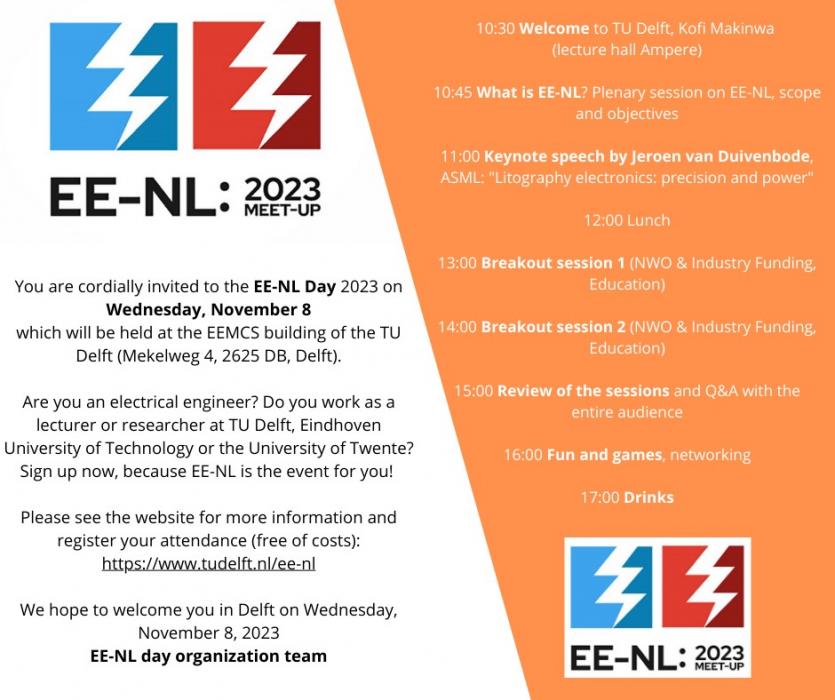News and Agenda Archive
News
New book with contribution of Geert Leus
- Wednesday, 24 January 2024
Sparse Arrays for Radar, Sonar, and Communications
More ...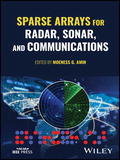
Best Paper Award at the IEEE Sensors Conference 2023 in Vienna
- Friday, 3 November 2023
The MS3 group has received the Best Paper Award at the IEEE Sensors Conference 2023 in Vienna. The paper is entitled “Radar-based Continuous Human Activity Recognition with Multi-Label Classification” and is a collaboration between our MS3 group in TU Delft and the Institute of Microwaves and Photonics of the Friedrich-Alexander University in Erlangen-Nurnberg.
This work comes from the visit of Dr Ingrid Ullmann to the MS3 group a few months ago, where an interesting collaboration has started on the topics of radar sensing for healthcare applications and indoor monitoring. Special thanks to Ingrid for representing the team at the conference and we look forward to new outcomes from this exciting collaboration.
Model-Driven Decisions Lab initiated
- Friday, 29 September 2023
On 28 September, a Memorandum of Understanding was signed between the TU Delft and the national police, to collaborate on research around safety and security, and forensic research. Part of this initiative will be a new research lab, the "Model-Driven Decisions Lab". This lab will start up with 5 PhD positions. Scientific director is Justin Dauwels (SPS).
More ...Our Paper Awarded at the IEEE MetroAeroSpace 2023
- Wednesday, 21 June 2023
We are proud to announce that our paper, "Experimental Evaluation of Radar Waveforms for Spectral Coexistence Using the PARSAX Radar", the result of our research collaboration with the team from the University of Naples “Federico II”, has been recognized as the most outstanding paper of the Special Session on Metrology for Radar Systems presented at IEEE MetroAeroSpace 2023 (the award has been sponsored by MDPI Remote Sensing Journal). The paper was acknowledged for its experimental demonstration of radar operability in spectrally dense environments through innovative waveform design.
The award recognition will soon be posted on the official conference website.
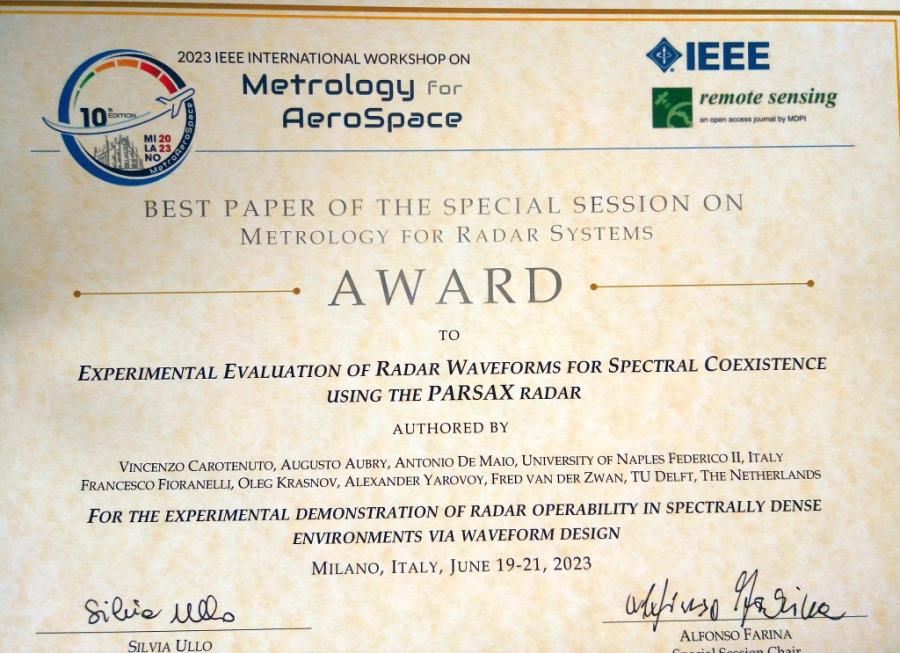
Opening ceremony of the EmC XG Labs
- Monday, 15 May 2023
Barbara McCune, wife of late Earl McCune, and Lucas van Vliet, Dean of the EEMCS Faculty, inaugurated the Earl McCune XG Labs on April 17th, 2023. Many people attended the ceremony, both from the Microelectronics department as well as external partners such as TNO, Nokia, Rohde&Schwarz, BSW...
The EmC XG Labs receives its name from Prof. Earl McCune (EmC), who enabled the neXt Generation (XG) communication and sensing efforts at TU Delft thanks to his great enthusiasm, his vast amount of knowledge and his warm personality.
The EmC XG Labs consist of a cluster of state-of-the-art microwave laboratories, covering the frequency spectrum from 30 kHz to 500 GHz, able to perform measurements on packaged, on-wafer and over-the-air devices and systems, providing an excellent frame for students, scholars and faculty members to carry out their research.
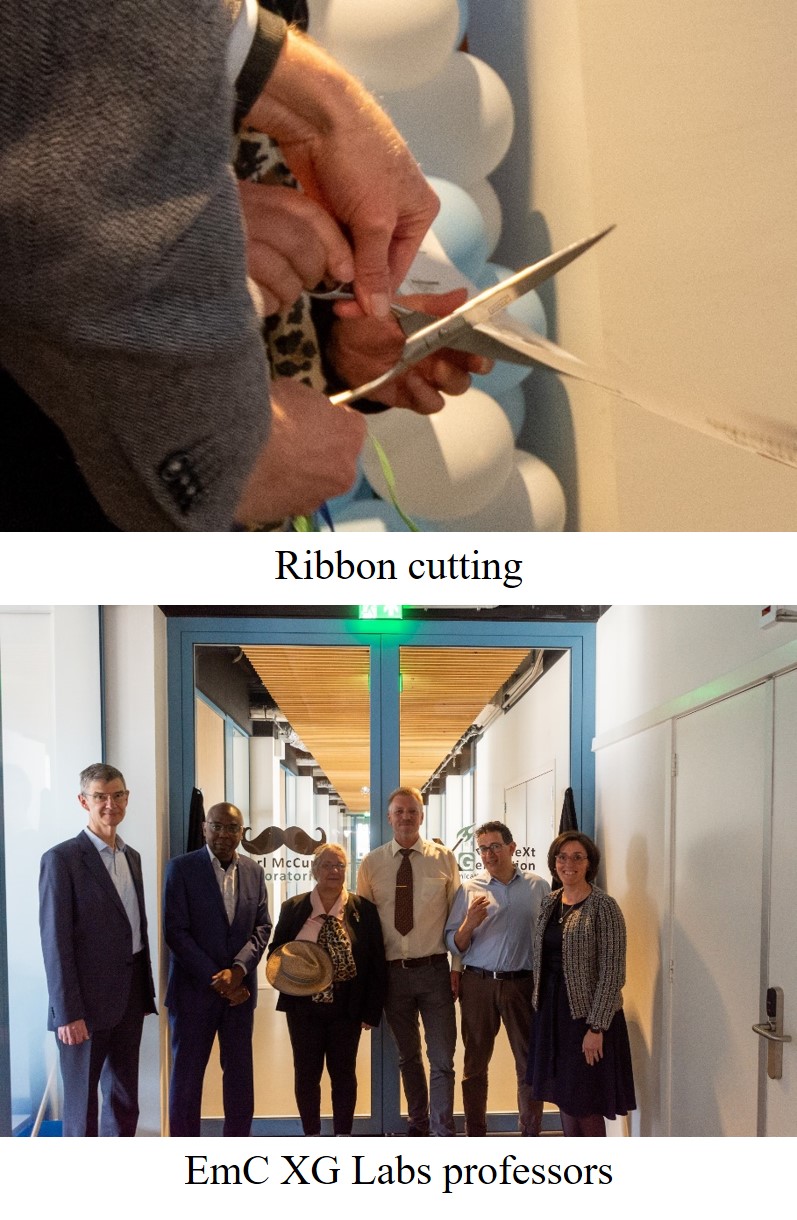
TU Delta: Millions for TU Delft-led radar project
- Monday, 15 May 2023
The TU Delft-led PHARA consortium will receive millions of euros in funding from NWO. The researchers are developing a new type of radar that can observe the entire sky in a few seconds, to study how particles grow in clouds and rainfall, and to observe large movements of weather fronts. The transportable radar should contribute to climate and atmospheric research, more accurate weather forecasts, and further innovations in radar technology.
NWO is putting a total of EUR 22.7 million into seven projects in which scientists from all over the Netherlands are developing high-quality research equipment, data collection, and software. The contribution ranges from 2.3 to 4.7 million euros per project.
With the money, the research funder wants to encourage scientists to work together to keep the Netherlands‘ scientific infrastructure up to date. According to NWO president Marcel Levi, the seven awarded projects enable new research that has great added value for society. As recently as February, NWO together with the Ministry of Education, Culture and Science awarded 140 million euros from the 'national roadmap’ for exceptionally large research equipment and databases. (HOP, HC)
Additional information: https://www.youtube.com/watch?v=ivVORUxABiQ
More ...
Talk by Dr Yanki Aslan "Forming Beams Across Disciplines: Multibeam Antennas for XG"
- Tuesday, 11 April 2023
Invited talk by Dr Yanki Aslan as part of IEEE AP/MTT/EMC/ED Turkey Seminars on April 14th. Please see information in the attached leaflet.
To attend the online session please use this link.
Happy holidays and a radiant 2023!
- Monday, 19 December 2022
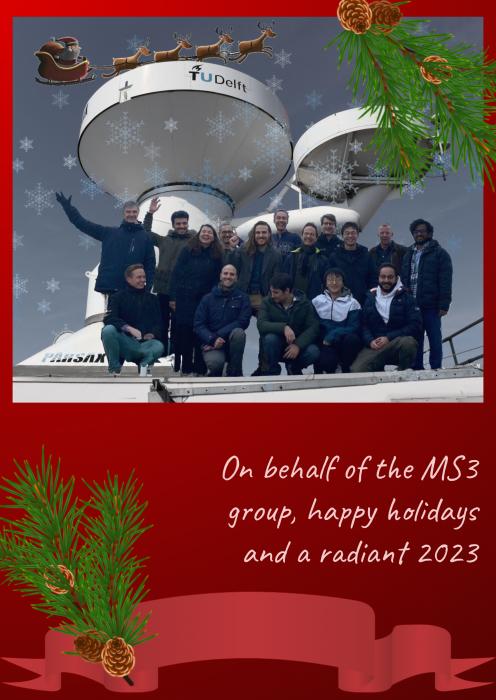
NWO OTP Award SMARTER: Strategic Monitoring of Atmospheric Threats using Enhanced Radar
- Thursday, 15 December 2022
TU Delft researchers dr. Francesco Fioranelli (ME-MS3) and dr. Marc Schleiss (CITG-GRS) receive NWO OTP funding for a four year research on strategic monitoring of atmospheric threats.
Atmospheric threats such as heavy rain and hail, are responsible for millions of damages in the Netherlands every year. Weather radars are essential tools to study the atmosphere, monitor threats, and issue early warnings for high impact events. The frequency of a radar and its configuration determine what type of weather phenomena can be measured, at which resolution and accuracy. To maximize coverage while simultaneously gathering lots of details about the small-scale structure and dynamics of local rain/hail events, different types of radars can be combined into larger networks. The crucial piece that is missing is a ‘central control unit’ for coordinating the efforts of each radar in the network.
In the project SMARTER Francesco and Marc with their teams will develop a new AI-based control unit for maximizing the collaboration between individual radars in a network and improve the detection/prediction of localized, rapidly developing atmospheric threats while keeping the large-scale overview of the situation. For a first proof of concept, the focus will be on detecting heavy rain and hail in the Greater Rotterdam area, which is of major interest for the horticultural industry and the Dutch economy in general. However, the novel adaptation and decision-making tool will be sufficiently general to be transferable to other networks outside the Netherlands and other targets such as insects, birds and aircrafts.
This project is executed in collaboration with the following partners: Glastuinbouw Nederland, Achmea Agro, KNMI, SkyEcho, Leonardo, RPG and HKV.
More ...
First Prize in Young Scientists Contest at the 2022 International Radar Symposium in Gdansk, Poland
- Friday, 16 September 2022
The MS3 group is glad to inform you that during the 10th MICROWAVE & RADAR WEEK in Gdansk, Poland our former MSc student Detmer Bosma won the First Prize in the Young Scientists Contest at the 2022 International Radar Symposium with the article "Polarimetric Signatures on Moving Automotive Vehicles Based on the H/A/α-Decomposition" and an excellent presentation about the main results of his MSc thesis project, which were done under the supervision of dr. O. Krasnov and prof. A. Yarovoy, and successfully defended in November 2021 !!!
Congratulations, Detmer!
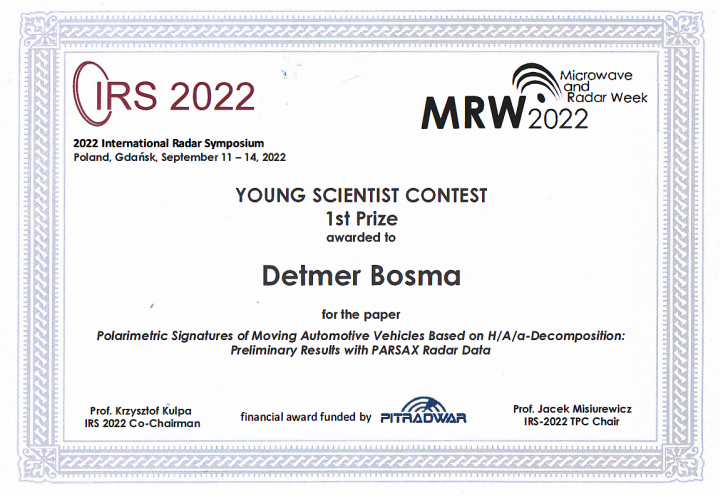
NL-JP Joint Seminar in Radar Sensing for Human Health Monitoring
- Friday, 26 August 2022
A joint seminar is organised on September 1-2 in our faculty by researchers in the MS3 group with colleagues from the Kyoto University and Osaka University.
This joint seminar, entitled the Nederland-Japan Joint Initiative for the Innovation in Radar Sensing for Human Health Monitoring, is supported by NWO and the JSPS (Japanese Society for the Promotion of Science) under the joint Cooperation Seminars Scheme, with a grant awarded to Dr Francesco Fioranelli (TUD) and Prof Takuya Sakamoto (Kyoto University), and is also supported by the IEEE Engineering in Medicine and Biology Society (EMBS).
The purpose of the joint seminar is to bring together researchers from Dutch and Japanese institutions and foster cooperation around the broad topic of contactless sensing and monitoring technologies for human healthcare. Specifically, contactless sensing and monitoring technologies of our interest are based on radar systems employing radio frequency (RF) electromagnetic (EM) waves to measure physiological phenomena of interest related to human healthcare, including but not limited to patterns of activities of daily living, quality of walking gait, tremors in limbs, and vital signs such as respiration, heartbeat, blood pressure and arterial pulse.
The seminar will be held at the EWI faculty, with speakers from TU Delft (MS3 and CAS groups of our department), Kyoto and Osaka Universities, KU Leuven, as well as contributions from IMEC, Infineon and NXP Semiconductors, amongst others.
A detailed programme of the seminar can be found here: https://surfdrive.surf.nl/files/index.php/s/zPFaO4aXrq0WwT3
Anyone is welcome to attend and hybrid participation via Zoom is also possible, using the following link: https://tudelft.zoom.us/j/94885113261?pwd=VFFxRGFDak40eEdkcXR3cTloR0dBQT09
More ...
New open dataset of radar signatures available
- Thursday, 12 May 2022
With my team here at TU Delft we are sharing this dataset of radar signatures for Human Activity Recognition (HAR): Dataset of continuous human activities performed in arbitrary directions collected with a distributed radar network of five nodes.
The dataset is unique, in the sense that it has data from 5 distributed radar nodes that operate simultaneously, and the activities are performed in continuous sequences along with variable, unconstrained trajectories. This is our contribution to making science and data more open in our discipline, and we hope that other researchers and colleagues will find these data helpful.
Kudos to Ph.D. candidate Ronny Gündel and visiting student Matteo Unterhost who put a lot of work hours into collecting these data and making them accessible, thanks to the Dutch Government's Sector Plan supporting these activities here at TU Delft.
The dataset can be accessed here at this link
More ...
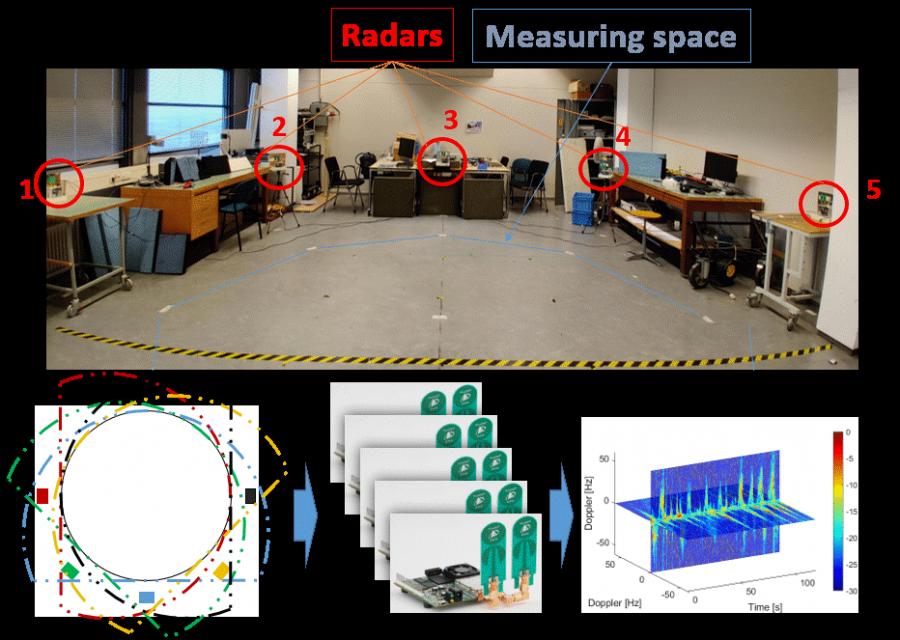
Happy Secretaries Day!!!
- Thursday, 21 April 2022
Our congratulations and best wishes!

Travel awards to IEEE Radar & EURAD Conferences, for MS3 PhD's
- Tuesday, 12 April 2022
With the end of the COVID-19 related restrictions, it has been a pleasure to travel again to attend three top scientific conferences in the area of radar, microwave, & antenna research, specifically the EUCAP 2022 (European Conference on Antennas and Propagation) in Madrid, the IEEE Radar Conference 2022 in New York City, and the EuRAD 2021 (European Radar Conference) in London.
Members of the MS3 group presented a total of 18 papers across these 3 conferences, with topics ranging from antenna design to healthcare applications of radar, from radar signal processing to innovative techniques for automotive radar. Special congratulations to PhD candidates Ronny Gündel and Sen Yuan for being awarded Student Travel Awards to attend the IEEE Radar Conference and EuRAD, respectively, and to PhD candidate Ignacio Roldan for runner-up placement in the best paper award at EuRAD (among the best 3 papers at the conference) for his work on enhancing angular resolution of automotive radar via neural networks. Onwards and upwards to the next conference!

New project granted to the ELCA and MS3 groups
- Wednesday, 23 March 2022
A new project sponsored by NXP and TKI entitled "Distributed High-Resolution Automotive Radar for Autonomous and Secure Mobility (DiRAc)" is granted to the ELCA and MS3 groups of our department.
Advanced driver assistance systems (ADAS) are transforming cars into securely-connected, highly-autonomous vehicles with the capability of sensing the environment, thinking, and taking adequate decisions in a huge number of traffic conditions. Enabling components of ADAS are radar transceivers permanently measuring the range, angle, and velocity of objects around the vehicle. The penetration of radars into urban scenarios requires extremely high angular resolution to separate pedestrians, bicycles, pets and even smaller targets.
Angular resolution is a challenge for single mmWave radars of limited aperture size. That is why in this new joint project with NXP Semiconductors we will therefore pursue a distributed, synchronized network of small aperture radar sensors in this research project. It deals with high-resolution imaging of the environment using a moving platform, wideband mmWave signals, and multiple distributed MIMO radars with a small number of antennas. Solutions for four critical radar architectural and signal processing challenges will be pursued: Imaging topology, waveform and radar synchronization, 360 degrees image focusing, and bistatic signaling. Two PhD students (one at ELCA, another one at MS3) will work for this project.
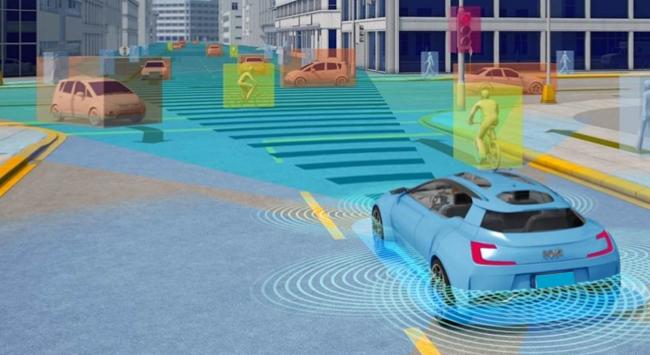
RainGuRU , AI-based rainfall nowcaster
- Thursday, 7 October 2021
RainGuRU is an AI-based rainfall nowcaster for The Netherlands. It predict rainfall intensities up to 100 minutes ahead based on real-time radar data provided by the Royal Netherlands Meteorological Institute (KNMI).
RainGuRU has been developed by TU Delft MSc student Eva van der Kooij for her thesis and it is an adaptation of the TrajGRU recurrent convolutional neural network.
This work was supervised by M. Schleiss and R. Taormina (CiTG faculty), and F. Fioranelli (EWI faculty), and the website https://rainguru.hkvservices.nl/ was developed by HKV with the support of the TU Delft Safety and Security Institute.
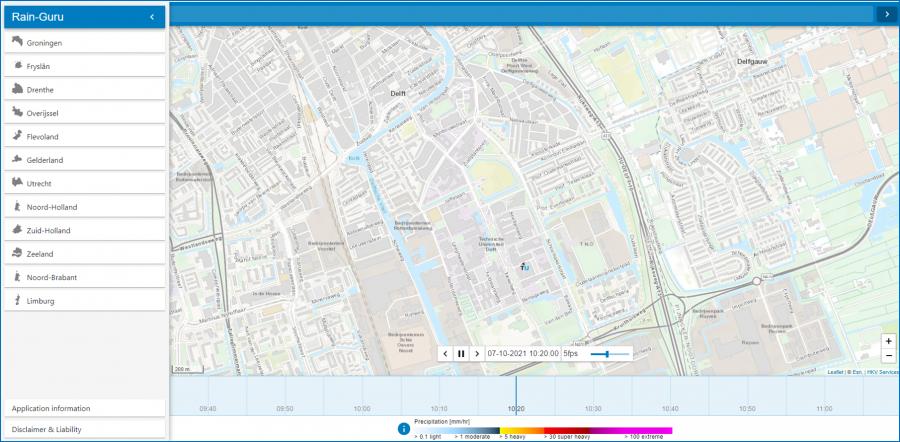
Convergence Open Mind Grant for ME Department
- Friday, 1 October 2021
Francesco Fioranelli, Assistant Professor at the MS3 group, has received an Open Mind Grant as part of the Convergence Initiative between TU Delft, Erasmus MC and Erasmus University. The co-applicants were Caitlin Ramsey, PhD candidate at Erasmus MC (and former alumna of this department), and Lytske Bakker, PhD candidate at Erasmus University Rotterdam.
The proposal is entitled “Contactless monitoring of neonates in the intensive care unit”. The objective is to explore contactless measurements based on FMCW radar for monitoring key vital signs of neonates, by investigating technical feasibility, clinical reliability and cost effectiveness of the proposed techniques. It is a nice example of “convergence”, bringing together key expertise from all applicants to perform research that would be unfeasible in isolation. The ambition of the project is to start with a small pilot showing the feasibility and potential of the idea, to then build evidence and momentum to develop a new medical device.
Additional information can be found on the Symposium webpage which showcased the other funded Open Mind projects (https://convergencealliance.nl/open-mind-symposium-2021/).

The rising stars of the TU Delft, featuring Dante Muratore
- Tuesday, 8 June 2021
After his PhD in what he calls “hardcore analogue microelectronics”, rising star Dante Muratore knew he wanted to continue his career working on systems that are closer to an actual application. A postdoc position at Stanford University, in which he worked on the electronics for an artificial retina to treat medical conditions leading to the loss of vision, brought him just that. Then, wanting to come back to Europe and to continue doing bioelectronics at the highest level possible, an opening at TU Delft crossed his path. ‘It was the easiest choice I ever made,’ he says.
Read more about Dante in the link below!
More ...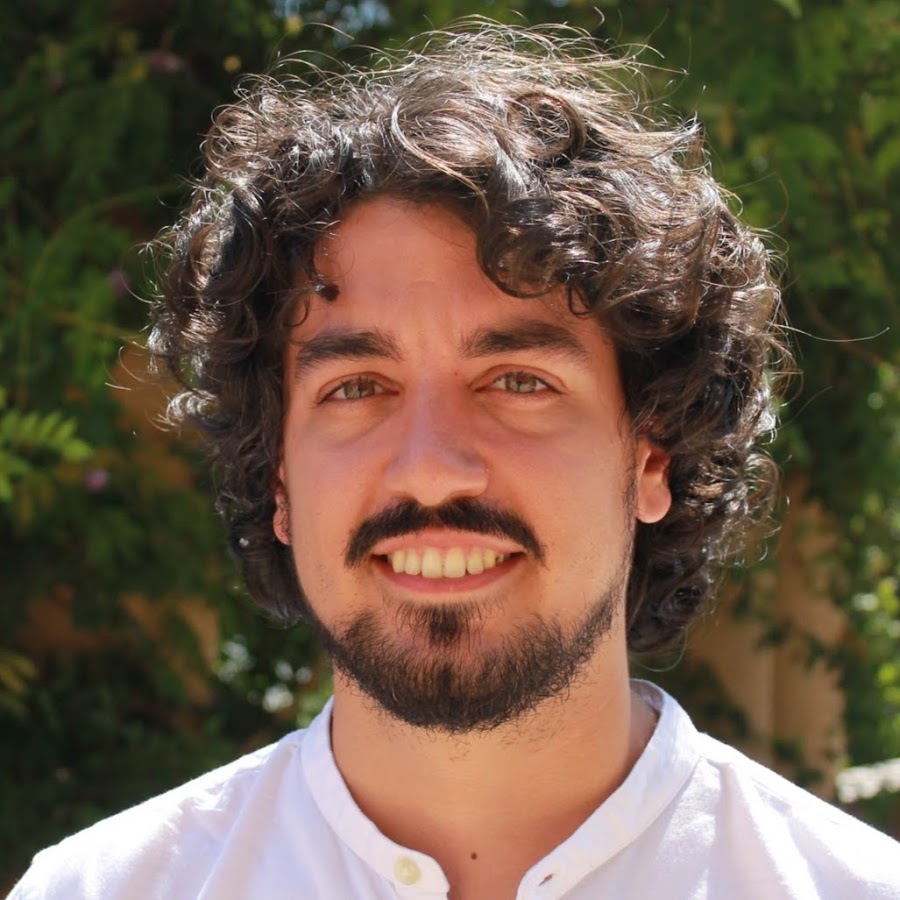
Winnaar Kooy Prijs 2021: Keith Klein
- Thursday, 3 June 2021

Op 3 juni – de dag waarop het Kooy Symposium online plaatsvond – is de winnaar van de Kooy Prijs bekend gemaakt. De voorzitter van de afdeling Defensie en Veiligheid van het Koninklijk Instituut Van Ingenieurs (KIVI) Jan Wind, reikte samen met de voorzitter van de Kooyprijs jury Bart Koene, de prijs van 2.000 euro uit aan Ir. Keith T.J. Klein. Hij won de prijs met zijn afstudeerscriptie: ‘Estimating 3D motion from radar data: Exploiting an omnidirectional radar array for motion estimation in the context of SAR imaging on agile platform.’
Eind 2020 heeft de Kooyprijs jury een negental inzendingen – gericht defensie- en veiligheidstechnologie - ontvangen met voordrachten voor de Kooyprijs 2021. Alle inzendingen waren van uitzonderlijk goede kwaliteit. De jury heeft de verslagen met waardering gelezen, complimenteert de opstellers met de kwaliteit ervan en waardeert deze bijdragen aan de Defensie & Veiligheid onderzoeksgebieden.
Na rijp beraad is besloten om de Kooyprijs 2021 uit te reiken aan Keith Klein. Keith Klein is afgestudeerd aan de TU Delft bij de Faculteit Elektrotechniek, Wiskunde & Informatica en heeft zijn onderzoek bij TNO uitgevoerd van maart 2020 tot november 2020. Hij werd begeleid vanuit de TU-afdeling Microwave Sensing, Signals and Systems. Zijn afstudeerbegeleiders waren Dr. F. Uysal (TU Delft), Prof. dr. A. Yarovoy (TU Delft), Dr. M. Caro Cuenca (TNO), Ir. M.P.G. Otten (TNO) en Dr. ir. J.J.M. de Wit (TNO). Het verslag is met het cijfer 9.0 gehonoreerd.
Inhoud van de afstudeerscriptie
Keith heeft gewerkt aan 3D-snelheidsbepaling van onbemande vliegtuigen met behulp van radargegevens. Het verkrijgen van een nauwkeurige positiebepaling is een uitdagend probleem bij coherente radarverwerkingstechnieken zoals Synthetisch Apertuur Radar (SAR). Dit geldt des te meer voor lichte en wendbare platforms zoals multi-copters/drones. Hun moeilijk voorspelbare bewegingen moeten nauwkeurig worden bepaald tijdens het verzamelen van gegevens en worden gecompenseerd tijdens de verwerking.
Om een gefocust SAR-beeld te krijgen, moet elke pulslocatie nauwkeurig bekend zijn, opdat elke puls coherent is toe te voegen aan het beeldraster. Traditioneel wordt dit bereikt met een traagheidsnavigatiesysteem (Inertial Navigation System, INS) en GNSS (Global Navigation Satellite System) ontvanger. Hoewel deze combinatie redelijke prestaties kan leveren, vormen gewicht en grootte vaak een beperking voor lichte platforms, waardoor voor de INS de beschikbare mogelijkheden en de haalbare nauwkeurigheid beperkt zijn.
Toepasbaarheid van omnidirectionele radararry
Keith Klein heeft expliciet een analyse gedaan naar de toepasbaarheid van een omnidirectionele radararray voor het schatten van de beweging van een drone platform en het verbeteren van de positioneringsnauwkeurigheid. Voortbouwend op bestaande 1D-SAR-bewegingscompensatietechnieken, heeft hij nieuwe methoden ontwikkeld voor het goed benaderen van de 3D-beweging van het radarplatform door schatting van de hoogte en snelheid.
Daarnaast wordt ook een nieuwe 3D-autofocustechniek gepresenteerd die multi-beam-autofocus wordt genoemd. Deze techniek zorgt voor de correctie van 3D-trajectfouten van puls tot puls door gebruik te maken van de bundelvormende mogelijkheden van de array om meerdere gebieden scherp te stellen terwijl de afbeelding wordt gecreëerd. Door gebruik te maken van een Extended Kalman-filter (EKF) worden positieschattingen verkregen op basis van de radarsnelheidsmetingen. Dit maakt beeldvorming zonder INS mogelijk, wat relevant is in gebieden waar GNSS signalen niet/nauwelijks beschikbaar zijn.
Het fuseren van de schattingen verkregen uit deze methode met de bestaande INS-output levert ook prestatieverbetering op in termen van SAR-beeldfocus. Hierdoor wordt de oplosbaarheid en detecteerbaarheid van zwakke doelen verbeterd. De gepresenteerde resultaten creëren ook nieuwe onderzoeksmogelijkheden, niet alleen voor snelle SAR-beeldvorming, maar ook voor autonome navigatie op basis van radargegevens.
Het systeem van de drone-mounted radar --waar Keith onderzoek naar heeft gedaan—is door TNO ontwikkeld voor het Expeditionary Maneuver Warfare Department van de U.S. Office of Naval Research (ONR). Het systeem is van belang voor verkenningsmissies en hiermee bij uitstek relevant voor Defensie.
Toekomst
Keith Klein was blij verrast met zijn prijs. ‘Mijn begeleiders hebben mijn verslag ingediend zonder dat ik het wist. Toen ik een telefoontje kreeg dat ik de Kooyprijs had gewonnen heb ik even gewacht om het aan mijn omgeving te vertellen tot ik zéker wist dat het geen grap was. En natuurlijk ben ik er erg blij mee! Dank aan mijn begeleiders.’
Keith Klein is na zijn afstuderen gaan werken bij TNO. ‘Ik werk hier niet verder aan mijn afstudeerproject. Dat is nu overgenomen door stagiaire en het plan is om daar later ook weer nieuwe afstudeerders op te zetten. Het betekent dat het geen rapport is dat in de spreekwoordelijke la verdwijnt. Goed om te weten dat de materie voldoende potentieel heeft om verder aan te werken.’
Jury
De jury bestond uit de heren Dr. L. Koene (Juryvoorzitter en bestuurslid KIVI DV, NLDA/FMW), Ing. L.F. Galle (Ministerie van Defensie, Directie Materieel), Prof.dr.ir. P.H.A.J.M. van Gelder (TU Delft), Prof. dr. B.R.H.M. Haverkort (Universiteit Twente), Prof. dr. ir. F.E. van Vliet (TNO, Universiteit Twente) en Prof. dr. ir. P.J. Oonincx (NLDA/FMW).
Watch the ceremony at youtube
Abstract of the thesis
Acquiring an accurate estimate of position is a challenging problem in coherent radar processing techniques such as Synthetic Aperture Radar (SAR). Even more so, for light and agile platforms such as multi-copters. Due to their unpredictable flight path, their motion must be accurately measured during data acquisition, and compensated for during processing. To obtain a focused SAR image, each pulse location must be accurately known to ensure that each pulse is added coherently to the imaging grid. Traditionally, this is achieved with an Inertial Navigation System (INS). While an INS can provide reasonable performance, its weight and size are often a constraint for agile platforms, limiting the available options and attainable accuracy. In this study, we perform an analysis on the applicability of an omnidirectional radar array for explicitly estimating the motion of a multi-copter platform, and improving on the positioning accuracy achieved by the on board INS. Building on existing 1D SAR motion compensation techniques, we develop new methods for estimating the 3D motion of the radar platform by estimating its height and velocity. In addition, we also present a novel 3D autofocus technique termed multi-beam autofocus. This technique allows for the correction of 3D trajectory errors from pulse to pulse by exploiting the beamforming capabilities of the array, and focusing multiple regions as the image is created. Using an Extended Kalman Filter (EKF), we obtain position estimates from the radar velocity measurements based on the last known INS position. We experimentally verify that using our velocity estimation method alone, the positioning performance is already improved compared to that of a state-of-the-art INS, allowing for INS-free imaging using arbitrary flight paths. This enables imaging in GNSS-denied environments, and has the potential to further reduce the weight of the platform. We also show that fusing the estimates obtained from our method with the existing INS output yields an additional performance increase in terms of SAR image focus, improving the resolvability and detectability of weak targets. The presented results open further avenues of research, not only in agile SAR imaging but also in autonomous GNSS-denied navigation.
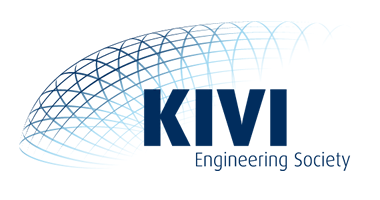
MS3 at IEEE Radar Conference in May 2021
- Monday, 17 May 2021
The past week saw members of our group attending (online of course!) and presenting our work at the 2021 IEEE Radar Conference “Radar on the move”, one of the flagship conferences in radar and related research, organised annually by the IEEE AESS society.
The conference had over 600 registrations worldwide, and just about over 200 papers accepted for inclusion into the proceedings.
Our group presented contributions in a mix of topics, ranging from automotive radar, to radar for human activity recognition (including a tutorial on this topic), as well as radar for navigation of small UAVs in GPS-denied environments.

European Microwave Week 2020
- Monday, 1 February 2021
Researchers from our Department, specifically from MS3, ELCA, QuTech, and THz groups, played a tremendous role both in the organisation of the event itself, originally planned to take physically place in Utrecht here in the Netherlands, and in the scientific contributions in the diverse fields of automotive technology, radar sensing, and microwave, THz, and quantum components and techniques.
Our scientific contributions included over 6 papers accepted and presented, 7 invited talks at different organised workshops and short courses, and at the Doctoral School and the Automotive Forum.
The most visible roles in the organisation of the even were the General TPC Chair, Prof Yarovoy, and the Treasurer, Dr Lager, plus the many researchers who volunteered as reviewers. Contributors to the scientific program of the conference in invited talks and workshops were also Dr Fioranelli, Dr Spirito, Dr Babaie, Dr Cavallo, Dr Sebastiano, Prof Vaucher, in addition to many PhD candidates and postdocs.
For more information on the event proceedings with papers and workshops, look at https://www.eumweek.com/docs/programme.pdf.

EUSIPCO 2020 - virtual event on 18-22 January 2021
- Sunday, 6 December 2020
The organizing committee of EUSIPCO 2020 has decided that EUSIPCO 2020 will be a full virtual conferencedue to the on-going COVID-19 pandemic and resulting travel restrictions.
We are excited to be able to provide a virtual venue for EUSIPCO 2020 and hope you will join us and learn about the latest developments in research and technology for signal processing.
Please register today for a reduced fee of E 50, or sign up for one of the tutorials for E 25.
More ...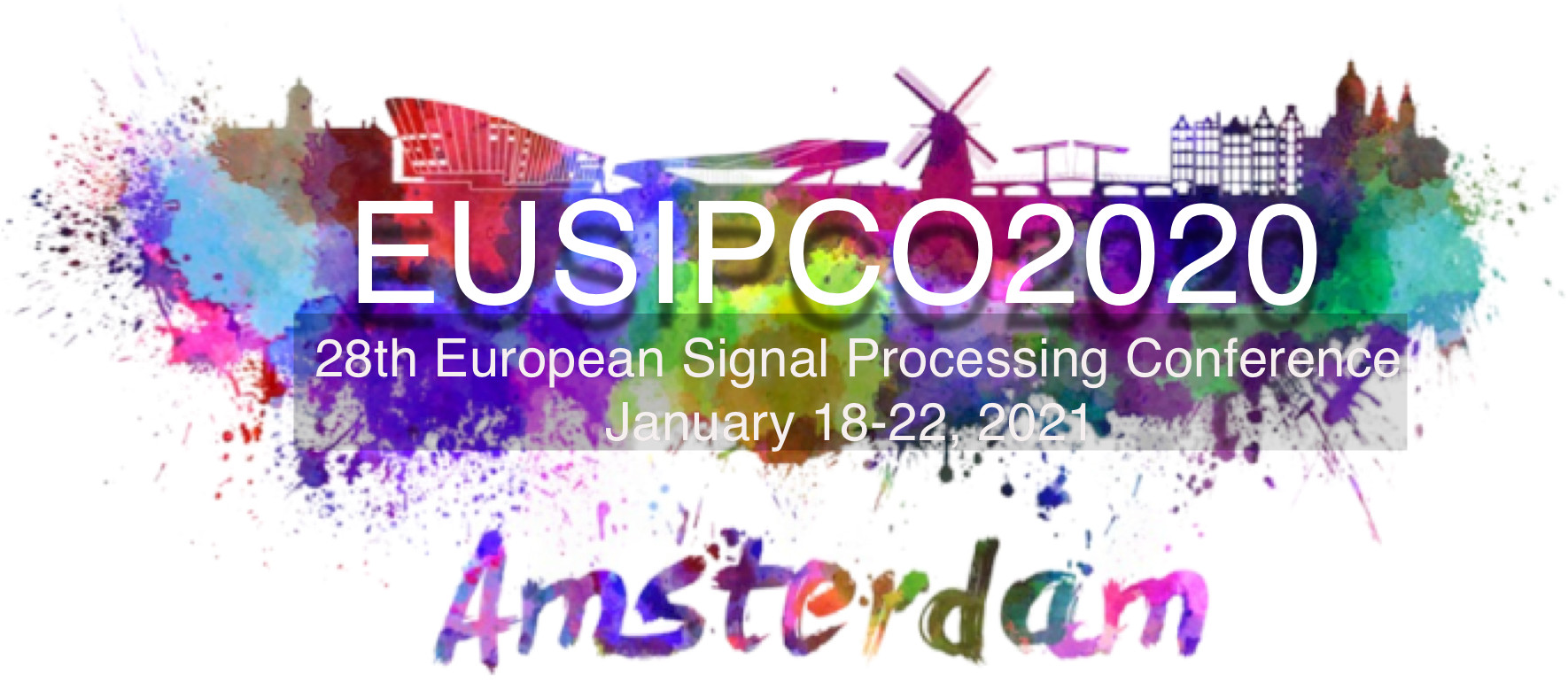
EuMW Announces Virtual Event for EuMW 2020
- Friday, 6 November 2020
In light of the global pandemic, growing numbers of cases in Europe, and related measures imposed by the respective authorities, European Microwave Week (EuMW) organizers have decided to make EuMW 2020 a virtual event this year while simultaneously planning for the next in-person event in London in October of 2021. EuMW 2020 includes the European Microwave Conference, the 15th European Microwave Integrated Circuits Conference, and the 17th European Radar Conference.
EuMW is organized by Horizon House on behalf of the European Microwave Association (EuMA), an international non-profit association with a scientific, educational and technical purpose. Earlier this year, event managers postponed the live, in-person event in Utrecht, The Netherlands to 10-15 January 2021 in the hopes that the global pandemic would have subsided by then. It has now become evident that it would be extremely difficult to safely gather attendees and exhibitors in person this year.
Event management has selected the vFairs platform to host the conference and virtual exhibit. VFairs is an immersive environment that allows users to comfortably browse content, network with exhibitors or peers, and attend live webinars with only a few clicks.
“As the next best thing to an in-person conference, we have now embraced all the good things that a virtual conference can bring. I am excited to make this happen!" said Frank van Vliet, EuMW 2020 General Chair.
The EUMW 2020 virtual event will begin on 10 January 2021 and last until 15 January 2021. Attendees can access conference sessions and visit the virtual booths until 5 February. The event management team is reaching out to exhibitors and speakers now to arrange for the transition to a virtual program for EuMW 2020.
“Individuals and business worldwide are quickly adapting to the pandemic. Fortunately, the options for virtual events have improved considerably over just the last few months. End users have much more experience and comfort with virtual events than before COVID. Although nothing can replace the experience of a live conference and exhibition, we are confident that the virtual EuMW 2020 will be a great show for the microwave and RF community,” said Ivar Anderson Bazzy, President of Horizon House.
"We all want to see each other in person again, chat, talk, drink and eat together, exchange latest information but also gossips, etc. That is why we decided to keep a live event in Utrecht alive as long as possible until it really was no longer possible. The alternative, a full virtual conference and trade-show is now becoming a reality. I am sure that we can create an event with the same look and feel as the original live event, with many options for interaction and virtual meeting places while not compromising in quality. Don't miss it, it will be a unique event in the best traditions of EuMW where you can find information that you don't find anywhere else. Follow our posts on social media to stay up to date," said Frank van den Bogaart, President of EuMA.
The technical program remains robust with plans to transition all scheduled talks to the vFairs conference platform. The conference program is available here: https://www.eumweek.com/docs/programme.pdf
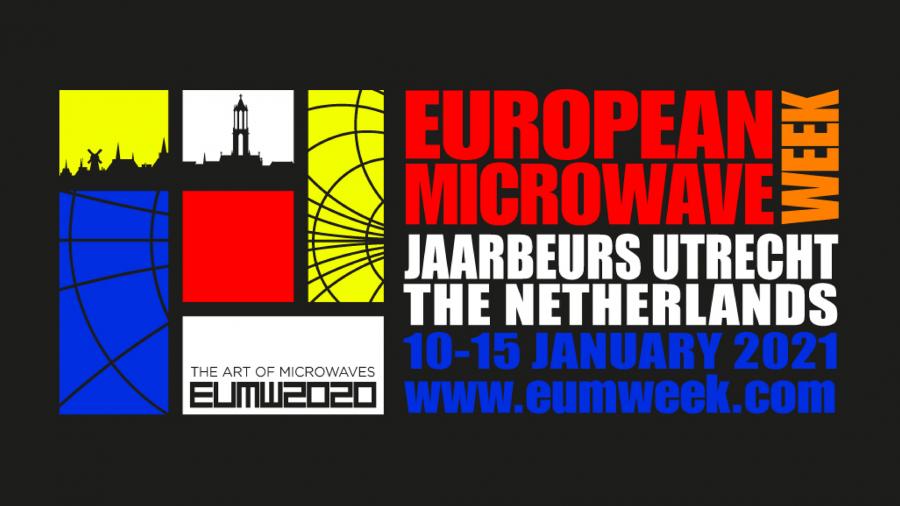
The Matlab code has been published on the Code Ocean web-site
- Monday, 5 October 2020
Jianping Wang published the Matlab codes for the article "3-D Short-Range Imaging With Irregular MIMO Arrays Using NUFFT-Based Range Migration Algorithm":
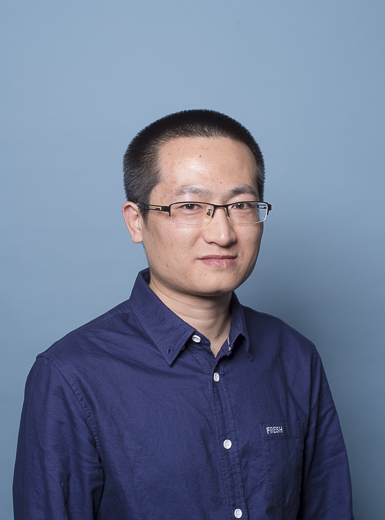
Professor Ir. Leendert (Leo) Krul passed away
- Tuesday, 22 September 2020
Met innig medeleven hebben wij kennins genomen van het overlijden van Prof. Ir. Leendert (Leo) Krul. Met grote vakkundigheid en toewijding heeft hij een enorme bijdrage geleverd aan het vakgebied “Telecommunicatie” voor de TU Delft. Wij wensen de familie veel sterkte met dit verlies.
With heartfelt sympathy, we have taken note of the death of Prof. Ir. Leendert (Leo) Krul. With great skill and dedication, he has made an enormous contribution to the field of “Telecommunication” for TU Delft. We wish the family much strength with this loss.
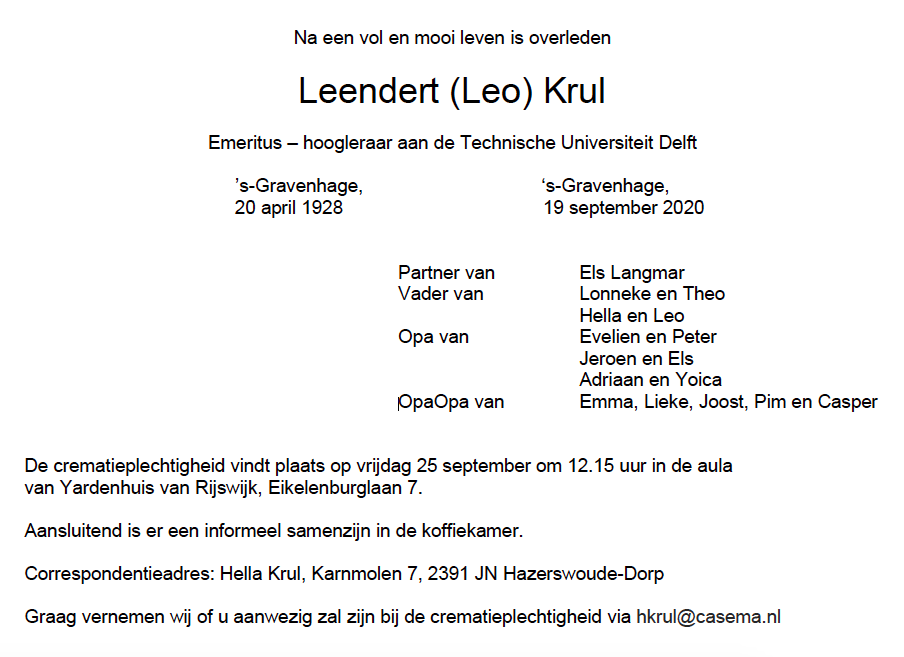
The PARSAX radar in TU Delft new academic year video game
- Monday, 31 August 2020
The roof of the EEMCS/EWI building with MS3 radar facilities appears in the new academic year game of TU Delft (https://www.tudelft.nl/oay/)
More ...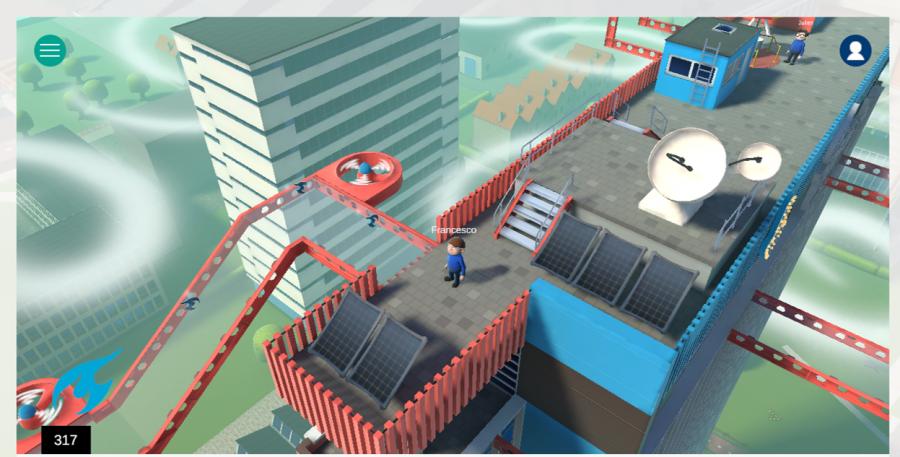
CUM LAUDE PhD Defense – Yanki Aslan
- Friday, 28 August 2020
On Wednesday, August 26th, 2020 Yanki Aslan, the Ph.D. candidate in the MS3 group, successfully defended his Ph.D. work entitled “Antenna Array Synthesis and Beamforming for 5G Applications: An Interdisciplinary Approach” and graduated cum laude.
Congratulations to Yanki for this excellent result!
Now dr. Aslan will continue to work within the MS3 group as a postdoctoral researcher on a project in collaboration with the European Space Agency (ESA).
Abstract:
Realization of the future 5G systems requires the design of novel mm-wave base station antenna systems that are capable of generating multiple beams with low mutual interference while serving multiple users simultaneously using the same frequency band. Besides, small wavelengths and high packaging densities of front-ends lead to overheating of such systems, which prevents safe and reliable operation. Since the strict cost and energy requirements of the first phase 5G systems favor the use of low complexity beamforming architectures, computationally efficient signal processing techniques, and fully passive cooling strategies, it is a major challenge for the antenna community to design multibeam antenna topologies and front-ends with enhanced spatial multiplexing, limited inter-beam interference, acceptable implementation complexity, suitable processing burden, and natural-only/radiative cooling.Traditionally, array design has been performed based on satisfying the given criteria solely on the radiation patterns (gain, side lobe level (SLL), beamwidth etc.). However, in addition to the electromagnetic aspects, multi-beam antenna synthesis and performance evaluation in 5G systems at mm-waves must combine different disciplines, including but not limited to, signal processing, front-end circuitry design, thermal management, channel & propagation and medium access control aspects. Considering the interdisciplinary nature of the problem, the main objective of this research is to develop, evaluate and verify innovative multibeam array techniques and solutions for 5G base station antennas, not yet used nor proposed for mobile communications. The research topics include the investigation of (i) new array topologies, compatible with IC passive cooling, including sparse, space tapered arrays and optimized subarrays, meeting key requirements of 3-D multi-user coverage with frequency re-use and power-efficient side-lobe control, (ii) adaptive multiple beamforming strategies and digital signal processing algorithms, tailored to these new topologies, and (iii) lowcost/competitive and sufficiently generic implementation of the above array topologies and multi-beam generation concepts to serve multiple users with the same antenna(s) with the best spectrum and power efficiencies. This doctoral thesis consists of three parts. Part I focuses on the system-driven aspects which cover the system modeling (including the link budget and precoding), propagation in mm-wave channels, and statistical assessment of the Quality of Service (QoS). Although separate comprehensive studies exist both in the field of propagation/system modeling and antennas/beamforming, the link between the two disciplines is still weak. In this part, the aim of the study is to bridge the gap between the two domains and to identify the trade-offs between the complexity of beamforming, the QoS, and the computational cost of precoding in the 5G multi-beam base station arrays for various use cases. Based on the system model developed, a novel quantitative relation between the antenna SLLs/pattern nulls and the statistical QoS is established in a line-of-sight (LoS) dominated the mm-wave propagation scenario. Moreover, the potential of using smart (low in-sector side-lobe) array layouts (with simple beam steering) in obtaining sufficiently high and robust QoS, while achieving the optimally low processing costs is highlighted. For a possible pure non-line-of-sight (NLoS) scenario, the system advantages (in terms of the beamforming complexity and the interference level) of creating a single, directive beam towards the strongest multipath component of a user are explained via ray-tracing based propagation simulations. The insightful system observations from Part I lead to several fundamental research questions: Could we simplify the multiple beamforming architecture while keeping a satisfying QoS? Are there any efficient yet effective alternative interference suppression methods to further improve the QoS? How should we deal with the large heat generation at the base station? These questions, together with the research objectives, form the basis for the studies performed in the remaining parts. Part II of the thesis focuses on the electromagnetism-driven aspects which include innovative, low-complexity subarray based multibeam architectures and new array optimization strategies for effective SLL suppression. The currently proposed multi-beam 5G base stations in the literature for beamforming complexity reduction use either a hybrid array of phased subarrays, which limits the field-of-view significantly or employ a fully-connected analog structure, which increases the hardware requirements remarkably. Therefore, in the first half of this part, the aim is to design low-complexity hybrid (or hybrid-like) multiple beamforming topologies with a wide angular coverage. For this purpose, two new subarray based multiple beamforming concepts are proposed: (i) a hybrid array of active multiport subarrays with several digitally controlled Butler Matrix beams and (ii) an array of cosecant subarrays with a fixed cosecant shaped beam in elevation and digital beamforming in azimuth. Using the active (but not phased) multiport subarrays, the angular sector coverage is widened as compared to that of a hybrid array of phased subarrays, the system complexity is decreased as compared to that of a hybrid structure with a fully-connected analog network, and the effort in digital signal processing is reduced greatly. The cosecant subarray beamforming, on the other hand, is shown to be extremely efficient in serving multiple simultaneous co-frequency users in the case of a fairness-motivated LoS communication thanks to its low complexity and power equalization capability. Another critical issue with the currently proposed 5G antennas is the large inter-user interference caused by the high average SLL of the regular, periodic arrays. Therefore, in the second half of Part II, the aim is to develop computationally and power-efficient SLL suppression techniques that are compatible with the 5G’s multibeam nature in a wide angular sector. To achieve this, two novel techniques (based on iterative parameter perturbations) are proposed: (i) a phase-only control technique and (ii) a position-only control technique. The phase-only technique provides peak SLL minimization and simultaneous pattern nulling, which is more effective than the available phase tapering methods in the literature. The position-only technique, on the other hand, yields uniform-amplitude, (fully-aperiodic and quasi-modular) irregular planar phased arrays with simultaneous multibeam optimization. The latter technique combines interference-awareness (via multibeam SLL minimization in a predefined cell sector) and thermal-awareness (via uniform amplitudes and minimum element spacing constraint) for the first time in an efficient and easy-to-solve optimization algorithm. Part III of the thesis concentrates on the thermal-driven aspects which cover the thermal system modeling of electronics, passive cooling at the base stations, and the role of antenna researchers in array cooling. The major aim here is to form a novel connection between the antenna system design and thermal management, which is not yet widely discussed in the literature. In this part, an efficient thermal system model is developed to perform the thermal simulations. To effectively address the challenge of thermal management at the base stations, fanless CPU heatsinks are exploited for the first time for fully-passive and low-cost cooling of the active integrated antennas. To reduce the size of the heatsinks and ease the thermal problem, novel planar antenna design methodologies are also proposed. In the case of having a low thermal conductivity board, using a sparse irregular antenna array with a large inter-element spacing (such as a sunflower array) is suggested. Alternatively, for the densely packed arrays, increasing the equivalent substrate conductivity by using thick ground planes and simultaneously enlarging the substrate dimensions is proven to be useful. The performed research presents the first-ever irregular/sparse and subarray based antennas with wide scan multi-beam capability, low temperature, high-efficiency power amplifiers, and low level of side lobes. The developed antenna arrays and beam generation concepts could have also an impact over a broad range of applications where they should help overcome the capacity problem by use of multiple adaptive antennas, improve reliability and reduce interference.
More ...
SSCS WYE Webinar
- Tuesday, 4 August 2020
Webinar: To Academia, or to Industry, That is the Question. Presented by: Kofi Makinwa and Shin-Lien Lu
Abstract:
You are about to finish graduate school or perhaps a young or seasoned professional, contemplating a career transition. Which is better - a career in academia or industry? What are the pros and cons of one versus the other? How can you start exploring and build up your career accordingly? In this webinar, we will interview Dr. Linus Lu, a professor-turned-industry veteran, and Prof. Kofi Makinwa, an industry veteran-turned-professor, who will share their insights and perspectives from their personal journeys in both academia and industry careers. They will also address what triggered their transitions, how they staged their transitions, and offer their crystal ball projections on present and future career prospects in the solid-state-circuits profession. More ...
Max Schöpe wins 3rd prize in student paper competition at FUSION 2020
- Thursday, 16 July 2020
PhD student Max Schöpe won the 3rd prize in the student paper competition at this year’s edition of the International Conference on Information Fusion (FUSION) for his paper “Multi-Task Sensor Resource Balancing Using Lagrangian Relaxation and Policy Rollout”.
For more than 20 years the FUSION conference has been recognised as a premier forum for researchers and practitioners to exchange ideas in the field of information fusion and its impacts on our society. The presented papers cover foundational, technological, and application-focused innovations in the sensor, data, information and knowledge fusion scientific domains. This year 169 papers were accepted and presented at the conference in total.
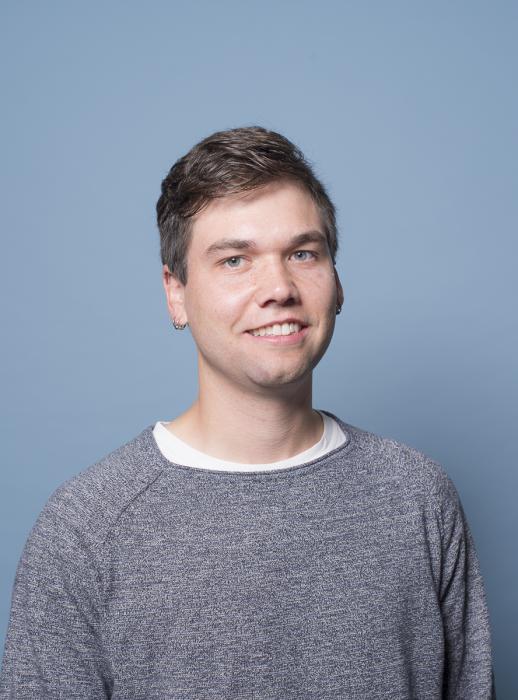
Opening Airport Technology Lab
- Tuesday, 26 May 2020
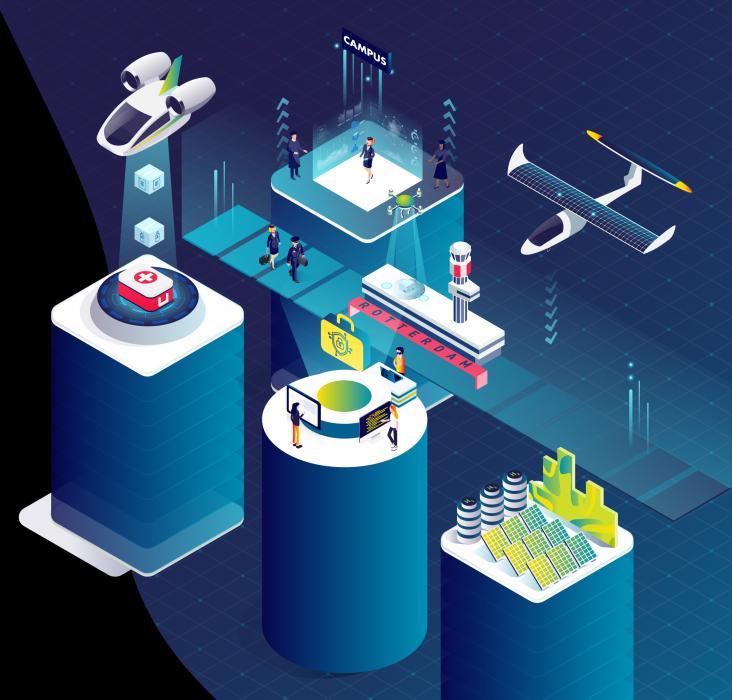
This Friday, May 29 at 15:30, the opening of the Airport Technology Lab will be done by Ron Louwerse (Director of the Rotterdam The Hague Airport), Prof. dr. ir. Tim van der Hagen (President of the Board and Rector Magnificus of TU Delft) and Henk Jan Gerzee (Chief Digital Officer of the Royal Schiphol Group).
The Microwave Sensing, Signals, and Systems section (Department of Microelectronics, EEMCS faculty), chaired by Professor DSc. Alexander Yarovoy, participates in the Laboratory and is going to use their professional expertise and advanced radar facilities to develop modern remote sensing techniques to extend the sensing capability of airport radars for constant weather monitoring. This real-time monitoring with high spatial and temporal resolution is aiming to improve air traffic planning (departing/arriving on time, less fuel, less noise, less pollution, etc.) and safety.
The Airport Technology Lab (ATL) is an organization for the development, test, and demonstration of the innovative products and services for airports. The digitization of everything that happens at airports and the application of Artificial Intelligence is increasing exponentially. With all that data and the right IT platform, companies can create and test new services and products. The most successful innovations will help to provide passengers with more comfort and convenience, make the airliners maintain smoother and more efficient flights, and the handlers will optimize their processes. Ultimately, the airport also contributes (extra) to its social responsibility to reduce air pollution, CO2 emissions and noise pollution.

Where are they now? Marc Vizcarro i Carretero
- Tuesday, 12 May 2020
Master students come and go... after an intensive period working in the group, they return home, find a job, or have other opportunities they take. We don’t always know where they go, how they are, and how they experienced their time at TU Delft. We asked Marc Vizcarro i Carretero, a Master student who graduated on the 13 day of August 2019, to share his story...
My name is Marc Vizcarro i Carretero. I am a young radar and antenna engineer enthusiast. Not so long ago, already working within the European defense industry at INDRA in Madrid, Spain, I felt the need to solidify my base-knowledge in radar technology. I had always seen TU Delft as a leading European engineering university acting both as a technological-hub and as an international ecosystem from which I could boost my career. For this reason, in 2017, I chose TU Delft to pursue the Master of Science in Electrical Engineering (TSS Track, now WiCos).
Did TU Delft help to get you where you wanted to be?
TU Delft did not just help - choosing TU Delft was one of the best careers and personal choices I have made so far. I did not only achieve more than I initially had expected, studying at TU Delft also gave me an invaluable network, from former MSc colleagues, academy, and industry partners to, most important, new friends.
My current career track would not have been possible if I had not had the unconditional support from the MS3 department and more specifically Prof. Alexander Yarovoy. Studying at TU Delft gave me the opportunity for my internship at Thales Nederland B.V. (Delft, NL), my participation in the 11th International SAR/Radar Summer School, and my subsequent MSc Thesis within the Fraunhofer FHR Institute (Bonn, DE) with Dr. Stefano Turso.
Eventually, with such a background, HENSOLDT (former Radar, EW, and Optronics activities from AIRBUS Defense & Space) offered me a tailored position as an Antenna Design Engineer three months before my graduation. Later, in October 2019, I joined the Active and Passive Antenna Department at HENSOLDT in Ulm. Ever since then, I have been so far involved in Phased Array and Active Electronically Scanned Arrays (AESA) development activities.
Why Radar Engineering and the MS3 Department?
With the on-going technological developments within both defense and civil industries, radar engineering sets the perfect framework to be involved in a wide range of topics. From 5G, autonomous driving up to defense and space-related projects; radar engineering allows young professionals to have the broad profile the industry demands. This is why, based on the radar engineering academic legacy of the MS3 department and their broad curricula, I would definitely recommend the program to anybody interested in delving into radar engineering from the electromagnetic and signal processing point of view. From there on, it is a personal decision whether to stay in the academic world or to work in the public sector or industry. In my case, along with the interests that once brought me to TU Delft, I decided to continue with my professional career as a radar engineer within the European defense industry, where I can still be involved in research activities, tackling real engineering challenges both at a conceptual but hands-on level.
What about you and your future after TU Delft?
Joining HENSOLDT means to me an opportunity to be involved in research and development for military sensors within European projects such as the Captor-E radar for the Eurofighter, or in the long run, for FCAS, the Next Generation Jet-fighter and other NATO-related projects. Projects expected to shape Europe’s technological and industrial infrastructure, while ultimately fostering technological advancements in civilian applications around the world.
At HENSOLDT, I just found a great place where I can fully develop myself as a Radar Engineer. There is so much to learn and my decision to work on antennas first is nothing but a wise choice. Becoming a Radar System Engineer means first to specialize in several topics to then ultimately get a clear picture at a system level. With the current trends ranging from fully digital AESA to multifunctioning and polarimetric radars up to the “system of systems” FCAS concept, transversal engineering profiles with a high emphasis on systems engineering, but relevant hands-on experience are thus required.
Thanks to TU Delft I was able to set the right benchmark from which I could make the next move in my career. For this reason I look forward to still being connected with TU Delft as an alumnus and provide engineering opportunities to radar enthusiasts, while fostering research activities within the European radar community.
Final Note: Feel free to contact me if you have further questions about the MS3 program or if you are even looking for an internship position.
More ...
Promotion Shengzhi Xu went well
- Wednesday, 6 May 2020
Sometimes pictures say it all…. Wednesday, the 29th of April 2020 at 16:00 p.m. Shengzhi Xu has promoted to Dr. on the subject: Joint Parameters Estimation using FMCW UWB Waveform. Although it was with no friends, family or colleagues, Shengzhi is happy with the result...
More ...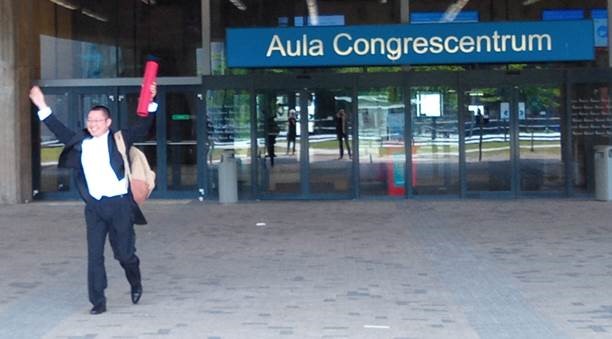
Where are they now? Guigeng Su.
- Wednesday, 15 April 2020
My name is Guigeng Su, the new Master of TU Delft. My memory of days in TU Delft is fresh and vivid. In Mid-August of 2017, I came to Delft to pursue my postgraduate studies from China and started a new journey in my life. During the first several weeks, faculties from different tracks came and introduce themselves to we freshman and told us what it is about their researches and what our life in campus will be with different directions of study. After lots of visits into laboratories and offices, including the super big radar on the roof of the EEMCS building, and some study experiences of courses in the first Quarter, I chose to dedicate my full time in the rest of master life into study the Telecommunications and Sensing Systems (TSS) track in Electrical Engineering Department. The beautiful theories behind radar system and various applications of those sensing system is appealing to me, which leads me to join in the Microwave Sensing, Signals and Systems (MS3) group for sensing systems. Meanwhile, there are a great deal of opportunities for everyone who is interesting in radar system to get some practical experience in MS3 group while you can really immerse yourself in the ocean of state-of-the-art talking and be one of them. That’s really fascinating.
It is unforgettable during the whole journey in Delft. At the beginning, the various ways of thinking and many kinds of accents based on culture differences is really challenging for everyone to get accustomed. Another difficulty to get over is academic thinking in a different way. Although it was quite demanding, I loved the interesting things I was doing, the wonderful people around me, and enjoyed the state of being growing up every day. The second stage is most about academic learning and researches. After some studies for almost every course, practical problems were put forward, encouraging you to think more and solving by neither yourself or with your teammates usually from different countries. All these will give you a better understanding and even some inspiration about your knowledge system. In spite of all the difficulties encountered, life is not bad and worth looking forward to. All kinds of facilities will provide a platform for to you to have a try in realties rather than always stay at the papers. People in MS3 group is really kind and knowledgeable, who are there and willing to help you if you get some problems. Here, I would like to express my gratitude to prof.dr. Alexander Yarovoy, dr. Nikita Petrov, dr. Hans Driessen, dr. Jianping Wang, dr. Oleg Krasnov and ir. Pascal Aubry explicitly, and other colleagues for their kindness, encouragements and supports. In particular, I want to thank prof.dr. Alexander Yarovoy for his care and help when I felt unwell. With all these precious experiences in MS3 group, I chose to work in radar technology company after graduation, which is ambitious to popularize radar technology and provide this wonderful sensor with automatic driving, smart building and traffic control.
The life in Delft is in peace and comfort except for the intense study. With friends coming from various countries, every day is new and different, telling you that do not confine yourself in what you have seen and sensed so far, there are more for you to know, to feel. It is really impressive for the life in Delft, as well as the unpredictable weather with inevitable rain and wind.
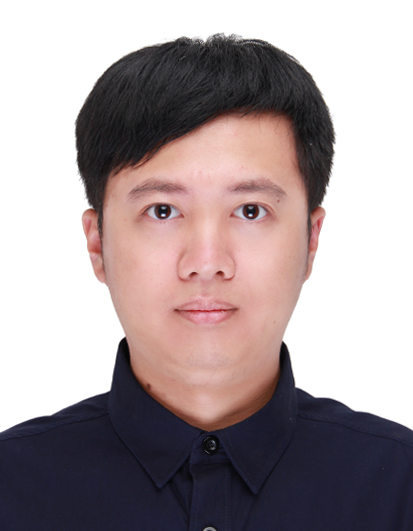
Where are they now? Sheeraz Ahmed
- Tuesday, 14 April 2020
Masterstudents come and go... after an intensive period working in the group, they return home, find a job or have other opportunities they take. We don’t always know where they go, how they are and how they experienced their time at TU Delft. We asked Sheeraz Ahmed, a Masterstudent who graduated on the 31st day of August, to share his story.
“Success isn’t a result of spontaneous combustion. You must set yourself on fire.”
-Arnold H. Glasgow
My name is Sheeraz Ahmed and I truly believe this statement for achieving any life goals.
I came to Delft in Mid-August 2017 from Pakistan to pursue my master studies from TU Delft. The sufficient exposure to RF and microwave subsystem during my previous tenure at a public sector research organization became the major factor as I chose to study Telecommunications and Sensing Systems (TSS) track in Electrical Engineering as my specialization. The applied research in Microwave Sensing, Signals and Systems (MS3) group for sensing systems applications including various radar systems, remote sensing and advanced data processing methods was quite fascinating for me. Furthermore, a practical learning experience with state-of-the-art multi-sensor facilities on the roof of the EEMCS building combined with a comprehensive yet flexible coursework and a co-operative international academic environment to address real-life problems became an added bonus.
During the long two-year journey of my master studies, it took me some time to adapt a different academic environment and a bit speedy quarterly examination system. However, I enjoyed being part of an enthusiastic environment, made amazing international friends and got ample learning experience from quite resourceful academic personnel. Specifically, working in MS3 group at TU Delft has been the best educational and research experience I have had till to-date. With the consistent encouragements from various members of this group in all my educational hurdles and research problems enabled me to push myself even further in my learning skills to achieve the prestigious master’s degree. On this note, I would like to mention prof.dr. A. Yarovoy, dr. Oleg Krasnov, Pascal Aubry and Max Ian Schöpe explicitly, and other colleagues in general, for their encouragements, motivations and valuable discussions to resolve research issues.
Apart from the pioneer research activities and education system, the life in Delft is calm and peaceful with amazing people, historical city attractions and iconic blue Delftware, with an exception of unpredicted weather with a lot of rainy days (which is very annoying sometimes ). As I finally made it this far, I am certain that I will be able to play a critical role and be a part of the better future tomorrow.
Sheeraz Ahmed
Pakistan, November 2019
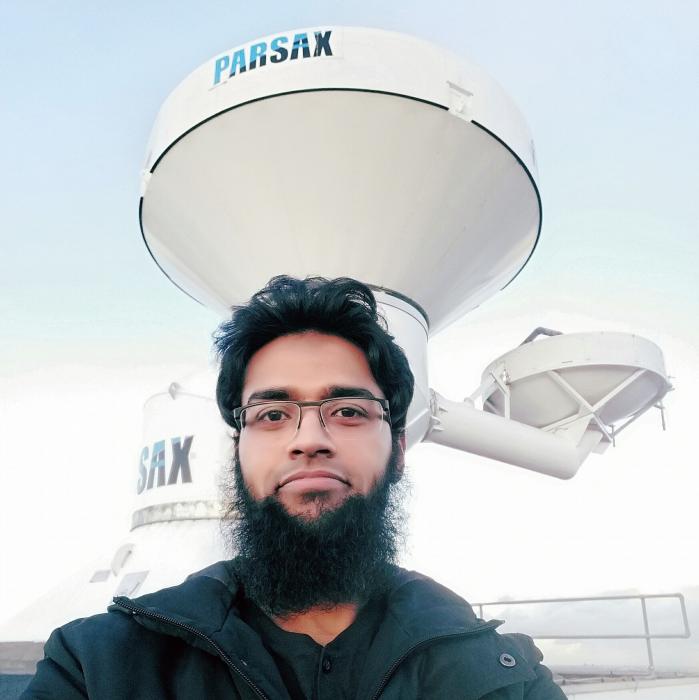
Entomological radar signal processing and experimental validation in BIT by Hu Cheng.
- Monday, 25 November 2019
Thursday the 14th of November Hu Cheng, full professor, Vice-director of Radar Research Lab in Beijing Institute of Technology (BIT), gave a succesfull lecture about Entomological radar signal processing and experimental validation in BIT.
Hu Cheng, full professor, Vice-director of Radar Research Lab in Beijing Institute of Technology (BIT); he received the B.S. degree in electronic engineering from the National University of Defense Technology in July 2003 and the Ph.D. degree in target detection and recognition from BIT in July 2009. He was a visiting Research Associate in University of Birmingham for fifteen months from 2006 to 2007. Since September 2009, he joined in the School of Information and Electronics in BIT, and promoted to be full professor since 2014. His main research interests include new concept synthetic aperture radar imaging, and the biological detection radar system and signal processing. He has published over 60 SCI-indexed journal papers and over 100 conference papers.
A new generation entomological radar (NGER) for insect individual monitoring was designed, which consisted of a high-resolution phased array radar (HRPAR) and three multi-frequency and fully polarimetric radars (MFFPR). The HRPAR works at Ku-band, and the MFFPR work at X, Ku and Ka-band, simultaneously, with fully polarimetric measurement. To realize species identification and trajectory analysis, the insect biological (including insect body length, mass and wingbeat frequency) and behavioural parameters (including orientation and 3D trajectory) measurement methods were proposed for the NGER.
The insect body length and mass can be measured based on the multi-frequency and fully polarimetric RCS of target. The wingbeat frequency is extracted from the radar carrier phase through micro-doppler analysis. The orientation is estimated from the dominant eigenvector of the insect scattering matrix, and the 3D orientation can be obtained through multi-angle orientation measurements of the three MFFPRs. High range resolution (0.2m) and monopulse techniques are applied to measure the insect 3D trajectory. To validate the proposed methods, a series of experiments were conducted at both anechoic chamber and field, and 523 data sets of 29 insect species were measured.
The experiments successfully validate the effectiveness of the proposed methods. In order to verify the NGER, a small-size entomological radar prototype was built, which works at Ku-band and has the capability of high range resolution and fully polarimetric measurement. The radar can work with vertical-looking mode and scanning mode. It can measure the orientation and wingbeat frequency of individual insects, and the aerial number and density of overflying insects.
Since 2017, a series field experiments were conducted at Langfang, Xilinhot, and Lancang, respectively, which successfully validate the measurement effectiveness of the radar.

3 MSc students graduated Cum Laude!
- Tuesday, 3 September 2019
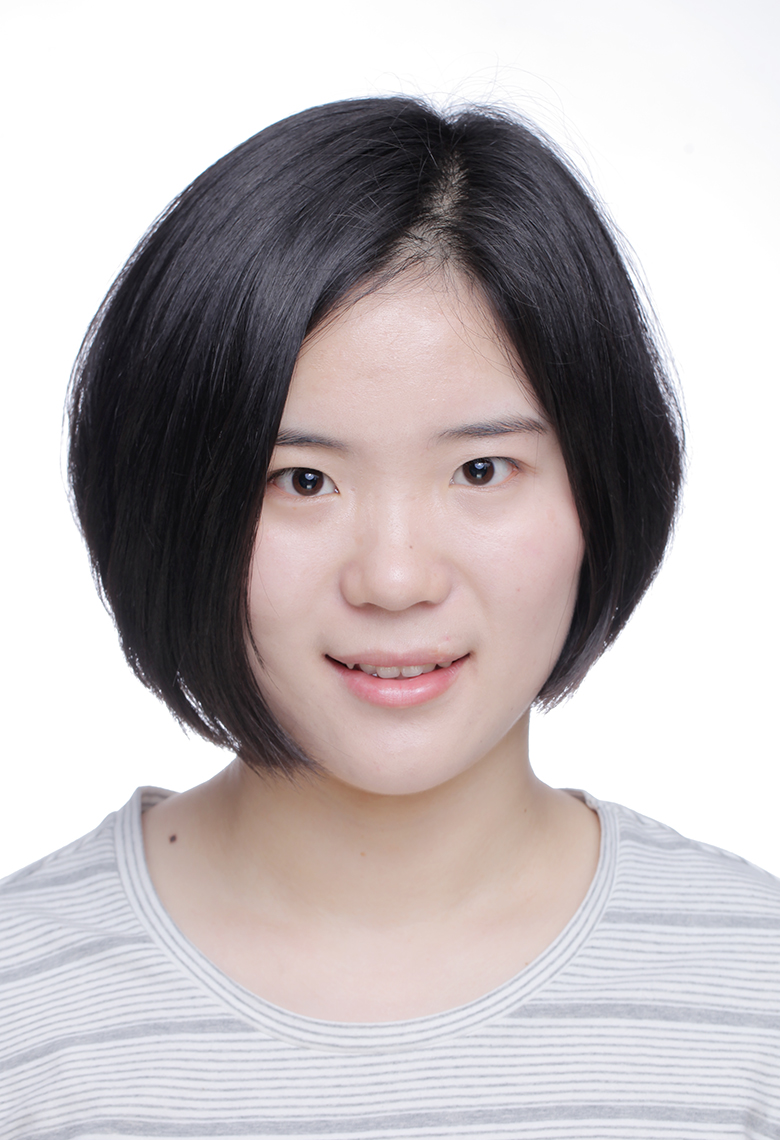
Congratulations Nick, Jiadi and Marc! Respectively on the 26th of Augus, 29th of August and 30th of August the following students have graduated Cum Laude on the MSc Telecommunication and Sensing Systems: Nick Cancrinus, Jiadi Zhang and Marc Vizcarro Carretero
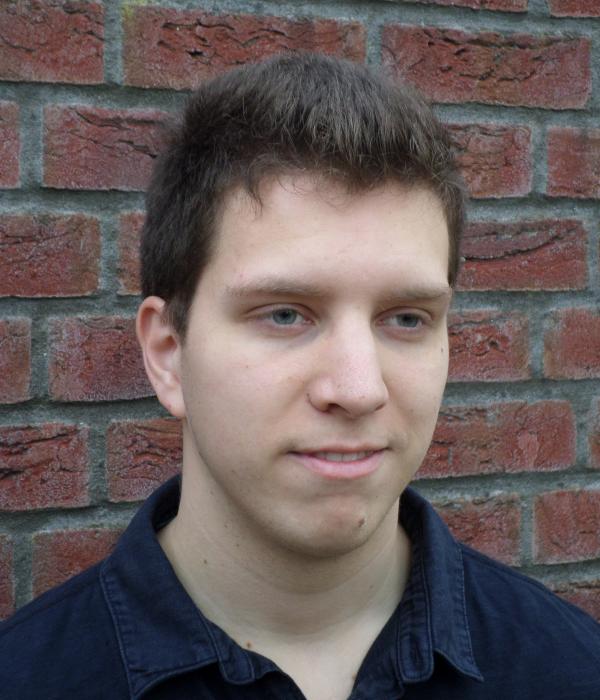
Nikita Petrov defended his PhD thesis. Congratulations!
- Friday, 21 June 2019
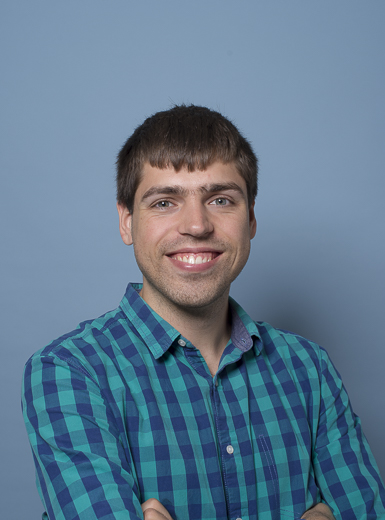
Modern surveillance radars are designed to detect moving targets of interest in an adverse environment, which can encompass strong unwanted reflections from ground or sea surface, clouds, precipitation, etc. Detection of weak and small moving targets in environmental clutter remains, however, a challenging task for the existing radar systems.
One of the main directions for modern radar performance improvement is the application of wideband high-resolution waveforms, which provide detailed range information of objects at the observed scene. Together with such inherent advantages of wideband waveforms as multi-path separation, clutter reduction and improved target classification, additional benefits can be obtained by exploiting target range migration (range walk), essential for fast moving targets in the high-resolution mode.
This thesis aims at the development of novel signal processing techniques for migrating target detection in wideband radars. It involves both resolving range-velocity ambiguities and improvement in target discrimination from ground clutter by accounting for target range migration.
More ...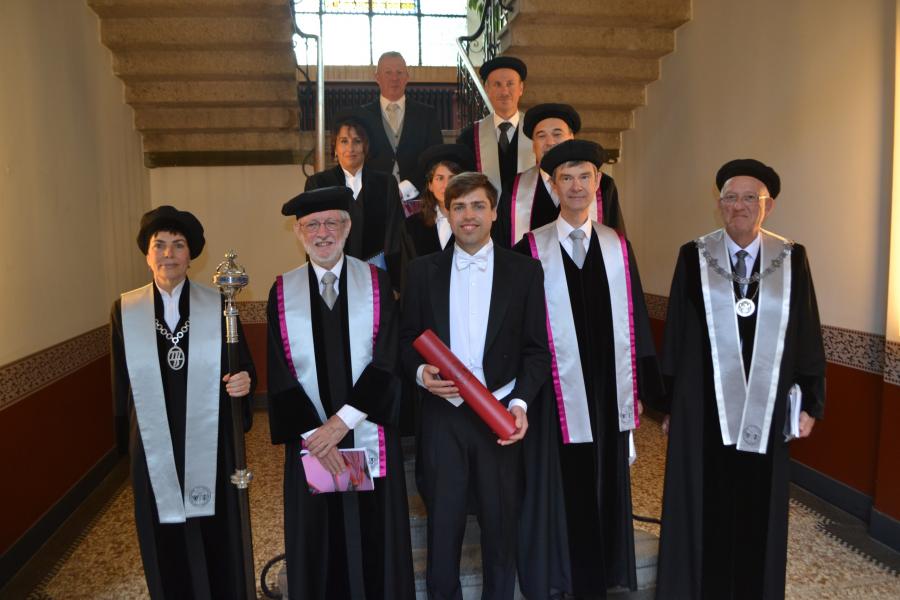
Thales Naval Nederland Delft celebrates 20 years
- Thursday, 16 May 2019
Yesterday the MS3 group congratulated our close partner Thales Naval Nederland who celebrates 20 years of their location in Delft. It is an important milestone for Thales Nederland, as soon as the research and development are mainly done in Delft.
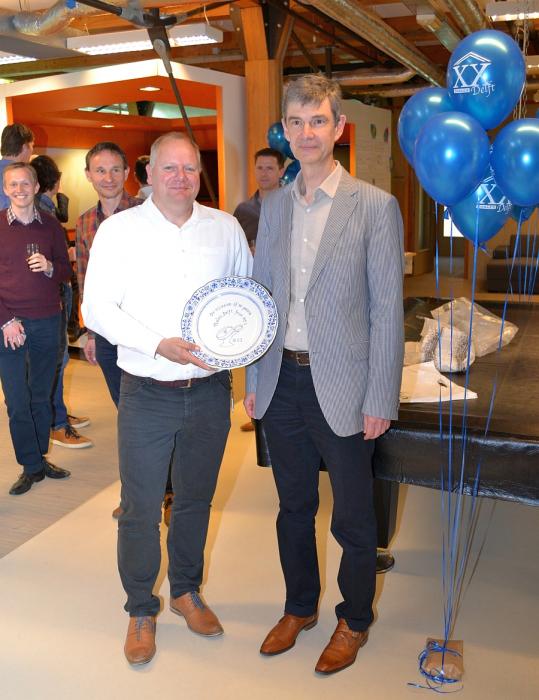
(only available in Dutch) Nederlands leger zet sterk in op de nieuwste radar technologie
- Monday, 13 November 2017
De aanwezigen kregen inzicht in ontwikkelingen van nieuwe sensorsuites, onderzoeksprogramma's, drone-bestrijding en de toekomstige ontwikkelingen op radargebied. Zo gebruiken strijdende partijen gebruiken steeds vaker drones om doelen op te sporen en zelfmoordterroristen hiernaar toe te leiden, maar met de nieuwe Multi Missie Radar is dit allemaal te traceren.
More ...TU Delft "Female Fellowship" Tenure Track Academic Positions
- Monday, 16 October 2017
All academic levels; apply before Jan 8, 2018.
More ...
Scientific serminar on radar technology
- Tuesday, 18 July 2017
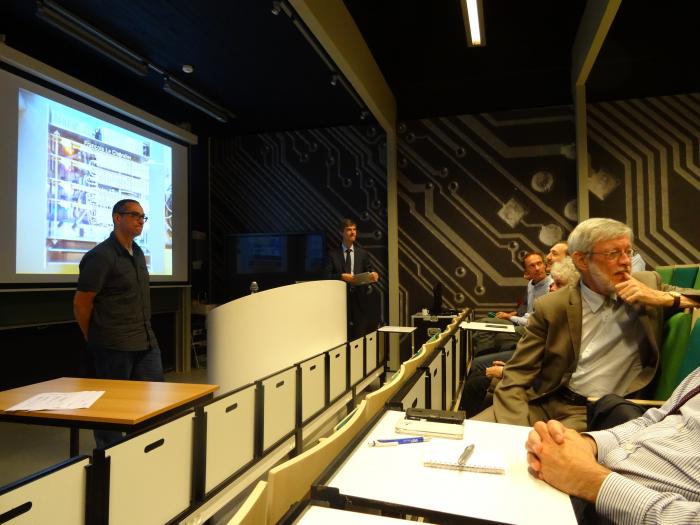
With speakers like Stephanie Bidon from the University of Toulouse, Willem Hol ( director of Thales Netherlands), Stephane Kemkemian and Cyrille Enderli from Thales France, it was an interesting and international view on radar technology. From TU Delft Nikita Petrov had a lecture on ‘ Range migrating targets detection with wideband radar’ and Pascal Aubry on coloured transimission (the Astap project)

BSc Group at ELCA awarded with IEEE Best High Tech Start-up Business Plan
- Monday, 10 July 2017
At the Bachelor Electrical Engineering Graduation Grand Finale held on 7 July 2017, the six-student group formed by Bilal Bouazzata, Laurens Buijs, Jun Feng, Martijn Hoogelander, Alexander Louwerse and Niels van der Kolk received the IEEE Best High Tech Start-up Business Plan award from Koen Bertels for their business plan on the topic of their graduation project at ELCA.
The group was supervised by Marco Pelk and Morteza Alavi while the project was proposed by Leo de Vreede.
During this project, the group accomplished a proof of concept for a promising "interpolating-supply" power amplifier efficiency enhancement technique, laying a foundation for future research.
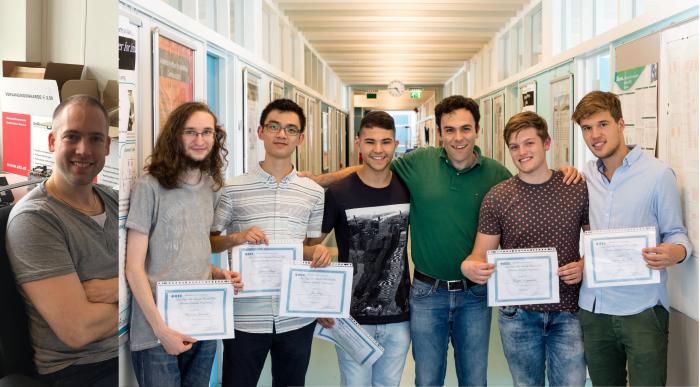
Best Student Paper Award at the RIFC Symposium for Milad Mehrpoo (ELCA Group)
- Friday, 16 June 2017
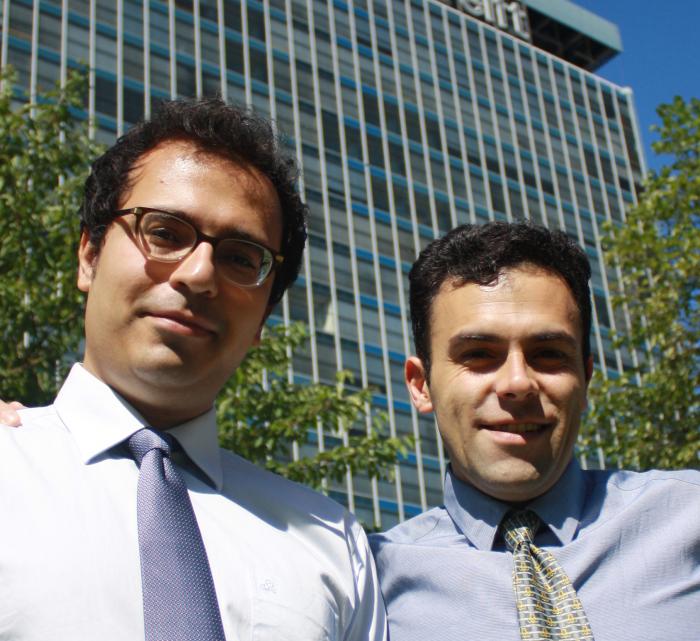
At the 2017 RFIC Symposium that was held on 4-6 June 2017 in Honolulu, Hawaii, USA, Milad Mehrpoo received the RFIC 2017 Best Student Paper Awards. The award was for the design of "A Wideband Linear Direct Digital RF Modulator Using Harmonic Rejection and I/Q Interleaving RF DACs". Mohsen Hashemi and Yiyu Shen were his co-authors while Leo de Vreede and Morteza Alavi were his advisors. This work was supported by EU Catrene project EAST and Dutch STW project SEEDCom.
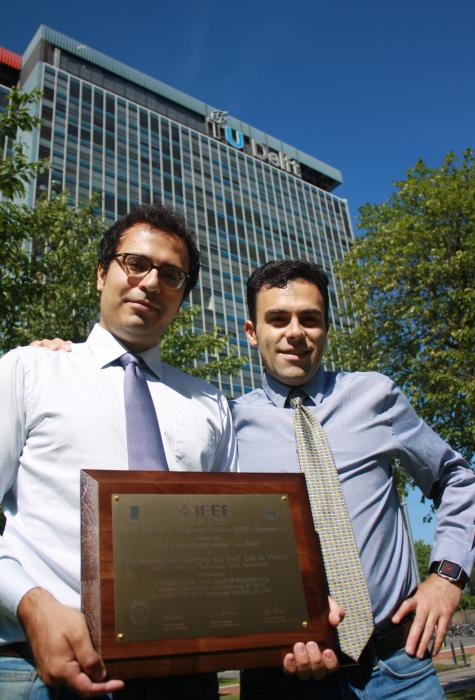
Kick off meeting Integrated Cooperative Automated Vehicles (i-CAVE)
- Wednesday, 14 June 2017
On June 6 and 7, 2017 the two days kick off meeting of the i-Cave project took place at the TU Eindhoven.
This NWO research program addresses current transportation challenges regarding throughput and safety with an integrated approach to automated and cooperative driving. In i-CAVE, a cooperative dual mode automated transport system is researched and designed, consisting of dual mode vehicles which can be driven automatically and manually to allow maximum flexibility. The program integrates technological roadmaps for automated and cooperative driving, accelerating the development of novel transportation systems addressing today's and future mobility demands.
Quick Facts of iCAVE
Number of Participating Organizations = 5
- Eindhoven University of Technology, Eindhoven
- University of Twente, Enschede
- Delft University of Technology, Delft
- University of Amsterdam
- Radboud University, Nijmegen
- Sensing
- System control integration
- Dynamic fleet management
- Communication
- Human factors
- Functional safety
- Living-lab evaluation
Prof. DSc. Alexander Yarovoy, Dr. Faruk Uysal and PhD. candidate Nannan Chen, conduct research under the Communication research line of i-CAVE project in close collaboration with Information and Communication Theory (ICT) Lab of Eindhoven University of Technology (TU/e). The research of group aims to implement RADAR-based communication, allowing advanced driver assistance systems to be used as both sensors and communication devices, realizing a more robust and synergetic approach to sensing and communication for safe high-speed automated and cooperative driving. To address interaction capabilities between vehicles and environment, we focus on radar processing methods with signals that allow for communication functionality. MS3 is highly cooperating with NXP on this.
Other Participants from TU Delft:
In addition to the MS3 group in EWI, Rudy Negenborn and Gabriel Lodewijks of the department of Maritime and Transportation Technology in the faculty 3mE will be conducting extensive research into dynamic fleet management of groups of automated vehicles.
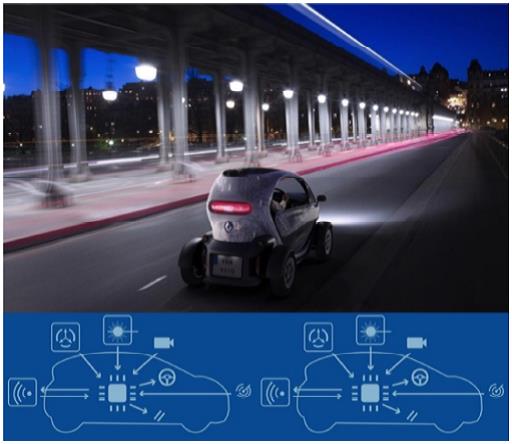
Closure Math & Science class 2016-2016
- Monday, 29 May 2017
After a thorough selection, 25 motivated high school students were selected to join the Math&Science class 2016-2017. A joint collaboration with Betasteunpunt Zuid Holland and the Technical University Delft. The Math & Science class challenges pupils to solve math problems in a non traditional way, to think out of the box. But also do the pupils get acquainted with several aspects of the scientific research that is done at the TU Delft. For example they had lectures from Dr. Arno Smets on solar energy and they visited the cleanroom at the Else Kooi lab. The last 10 weeks they designed and made a solar boot, implementing the knowledge they gathered during weeks they had their science lectures. On Friday June 2, the solar boots will be tested and the students will receive their certificate during a festive closure event at the Campus. In the water before the Industrial design fault, 5 teams will have a race with their boots., their school teacher, parents and the TUD lecturers as an audience. After the race, the pupils will present the journal they worked on, and receive their certificate.
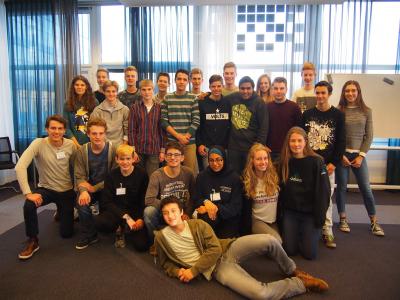
Master thesis defence Yalin Gürcan
- Wednesday, 25 January 2017
The problem of estimation of these three parameters of scatterers in an area can then be simplified as a problem of spectral estimation over three separate domains. The recent algorithms for solving such a problem in the context of array based radar applications range from adaptive, nonparametric methods, subspace based parametric methods and sparse recovery methods. However, these methods mostly ignore the inter- and intra- pulse Doppler effects of multiple moving targets. Furthermore, with demand for more resolution, investigation of wideband effects on range-azimuth-Doppler estimation is necessary. In this thesis, we firstly develop a MATLAB based MIMO radar simulator, on which the theoretical models are to be tested. The first aim of the thesis is to investigate the joint range-azimuth estimation methods and the shortcomings of narrowband assumptions, especially on the DoA estimation problem. We propose a novel signal model specifically for LFMCW radar systems and two methods of joint estimation using this model. The next aim is to investigate the effects of the movement of the targets on accuracy of the estimation problem. We study these effects firstly on the range-azimuth estimation problem and provide a more detailed signal model, which, theoretically also allows for the joint estimation of range, azimuth and velocity parameters using only a single chirp. Then we look into joint estimation in three domains and provide a subspace based algorithm, using the proposed signal model, capable of solving this problem. The accuracy of the new signal model and performance of the estimation algorithm is then tested on data generated by the MATLAB based simulator. Comparisons are made with respect to state of the art, MUSIC based joint estimation algorithm and theoretical bounds. Furthermore, range-Doppler estimation is performed on real life data, taken from the Dolphin prototype NXP automotive radar system. Future works based on this model is proposed.
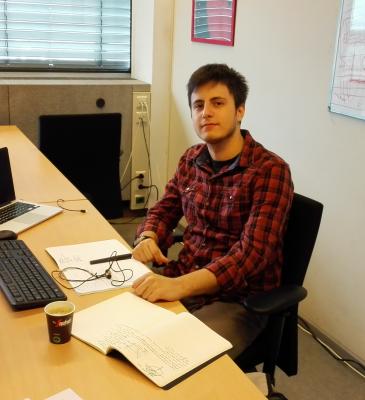
PhD defence Inna Ivashko
- Monday, 19 December 2016

SUMMARY The ultimate goal of any sensing system is to build situation awareness. Existing solutions for a single radar node that have to assure extended areas of coverage with high resolution measurements (in range, cross-range, and Doppler) are physically cumbersome (large antenna size) and typically require large operational resources (high transmit power, wide bandwidth and long integration time).Combining data from multiple spatially separated nodes located at several locations offers a possibility to use radars with low-cost omnidirectional antennas to cover wide areas and overcome operational limitations such as sector blockage due to landscape or high-rise buildings. Thus, performance of the complete system becomes dependent not only on the parameters of a single radar node, but on the number of nodes and their location (system topology) as well. A proper selection of both node-related (transmit power, operational frequency and bandwidth, integration time, etc.) and system-related (node location, node cooperation) resources is an important design task, which forms the major focus of this thesis. The first part of this dissertation is dedicated to the development of the radar network performance assessment tool,while the second part provides the framework for radar network topology optimization. The potential accuracy of the target parameters estimation has been used for radar network performance assessment. The developed tool incorporates parameters of a single radar node as well as system parameters (positions of the nodes and their cooperation), evaluated using Cramér-Rao lower bound. Using the tools developed, performance of different types of radar networks have been studied and compared in this thesis. For the radar network topology optimization several convex and greedy algorithms have been used, making the optimization approach versatile. Validation and performance comparison of the optimization algorithms have been performed in this thesis. The results obtained in this research can be used to evaluate the potential performance of radar networks for different applications and provide a solution to key problems of their topology design.
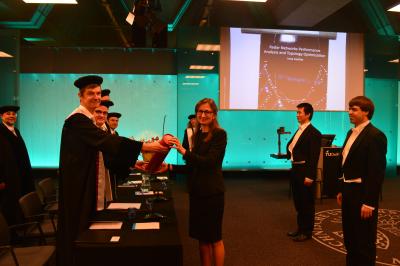
Kick off Math & Science class 2016-2017
- Friday, 11 November 2016
Start of a new Math &Science class for highschool students. The students will have math and science classes for 22 weeks at the TU Delft
Vacancy: Team manager for Electrical Engineering Education (EEE)
- Thursday, 6 October 2016
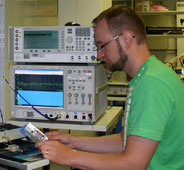
The Faculty of EEMCS is creating a special team to fully focus on teaching using our unique and innovative ‘Delft method’. This method integrates practical and theoretical electrical engineering education and trains students to be hands-on, theoretically versed electrical engineers ready for a future career in science or industry.
We are looking for a team manager specialising in Electrical Engineering Education (EEE) who will be both a group leader and a teacher in his/her capacity as the role model of EE Education.
More information

7 July 2016: Opening of CryoLab for Extremely Sensitive Electronic Measurements
- Friday, 8 July 2016
.jpg)
The CryoLab of TU Delft's Faculty of EEMCS has been opened on Thursday 7 July by the dean Rob Fastenau. TU Delft scientists from the Tera-Hertz Sensing Group, Jochem Baselmans and Akira Endo, will be leading a team of young scientists and engineers working in the lab on astronomical instrumentation. The first instrument, DESHIMA (Delft SRON High-redshift Mapper), is being developed to be operated on the ASTE telescope in the Atacama Desert in Chile. The goal of the research is to create 3D charts of so-called submillimetre galaxies that, in contrast to 2D charts, also show distance and time.
The large number of superconducting detectors, and the advanced electronics developed at SRON, allows DESHIMA to map a very large volume of space at once. While Endo leads the development of DESHIMA, Baselmans will soon install the next cryostat for testing novel THz array antennas, that will enable his upcoming instrument MOSAIC to target multiple galaxies at once. In the future, the CryoLab is envisioned to also host new coolers from QuTech. Superconducting electronics used for astronomical instrumentation and quantum electronics have much in common, because they both push the limits of what can be observed.
.jpg)
Closing Math & Science Class
- Monday, 23 May 2016
Students from year 5 of pre-university education have spent 22 weeks attending maths and science lectures on the TU Delft campus. The Math & Science Class 2015-2016 has reached a festive closing on Friday 20 May with a solar-powered boat race in the pool in front of the Faculty of Industrial Design Engineering. The 25 participating students, from 12 different secondary schools in the Netherlands, received their certificate from Anka Mulder.
The purpose of the Math & Science Class is to ease the transition from secondary school to university, to increase the participants' problem-solving abilities and to develop their independent research skills. It also introduces the students to the top-class research carried out at TU Delft, through lectures by leading professors such as Arno Smets, Lieven Vandersypen and Ulf Haneveld. During the last weeks of the programme the students have been working in groups to design and build a solar-powered boat.
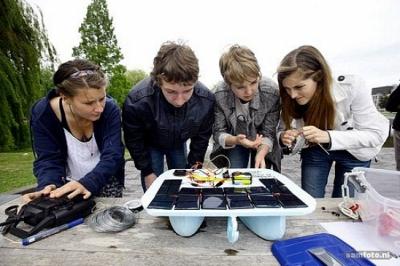
Cum Laude for MS3 masterstudent Joris Derksen
- Friday, 18 March 2016
A short description of his topic Radars are vital systems for the navy as they are the primary systems for the detection, tracking and sometimes classification of friendly and hostile targets. It is therefore important that navies can assess the radar?s performance under the prevailing conditions. The atmosphere can significantly alter the radar?s performance from standard. Nowadays computer models can fairly accurately predict radar performance if sufficient atmospheric input data is available. While many studies are dedicated to accurately model radar performance, little has yet been done to define how accurate and how high in resolution atmospheric data must be to suffice as input for accurate radar performance prediction. My study takes preliminary steps into finding horizontal and temporal resolution requirements for different weather conditions. The study I will present will be particular of interest to the Royal Netherlands Navy as they currently predict radar performance with a single vertical profile and thereby assume that the atmosphere is horizontally homogenous. My thesis clearly shows that using a single profile can result in erroneous radar performance predictions. In these cases 3D dimensional data is required, which, for example, numerical weather prediction models can obtain.
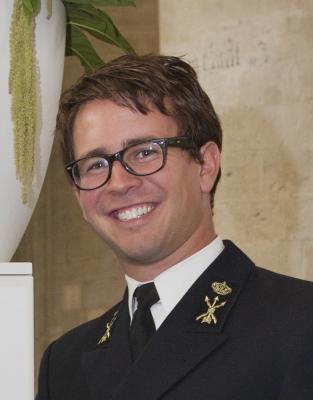
Annual poster event
- Tuesday, 2 February 2016
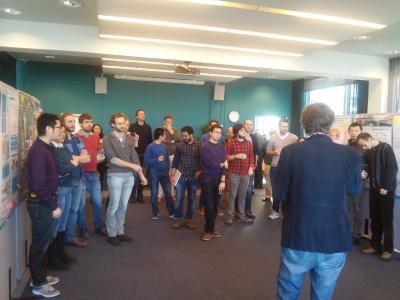
On January 28 2016, our group had its annual poster event . Both postdocs and PhD students presented their research with a poster and a one minute pitch. A jury, consisting of Willem Hol(Thales) Wim van Rossum (TNO ) and Leo de Vreede (TU Delft) decided on the best poster and presentation. Albert Oude Nijhuis was selected as the winner with his poster on ? Assessment of the rain drop inertia effect for radar based turbulence intensity retrievals? . The public awards were given to Jianping Wang (Rotating Array Design for Short Range Full-Polarimetric Imaging) and Nikita Petrov (Wideband Unambiguous Radar Target Detection)
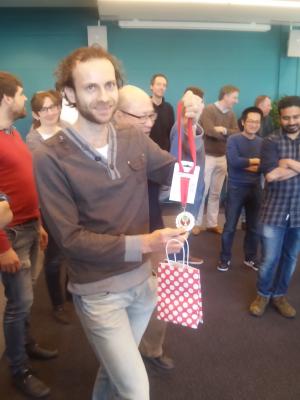
Happy 2016!
- Thursday, 14 January 2016
Here are some pictures of the New Year Reception of the Microelectronics department
More ...
PhD defence D. Penkin
- Wednesday, 4 November 2015
Recently, the concept of a nanonetwork has attracted large attention of researchers as it potentially offers low-cost solutions for a wide spectrum of current applications and enables numerous emerging ones. At present, however, all the sensor networks consist of a relatively small number of macroscale devices with their positions carefully pre-determined. The typical nanonetwork, on the contrary, can be envisioned as a swarm of nanomachines that are distributed in a random manner, which also can reach covered places, accomplish sensing directly inside a phenomenon or equip an application with enhanced control capabilities. To operate and monitor within a macroscale application area, information sharing between nanonetwork entities is required (likewise data transfer among human cells). Electromagnetic waves at microwave frequencies can potentially enable wireless communication between nanomachines even in vicious and hazardous environments. However, the paradigms of traditional microwave communication must undergo a substantial revision before being applied to nanotechnology: due to space restrictions, nanomachines have very strong power limitations and should be capable to operate on an extremely tight energy budget. This places a very strong restriction on the communication link power budget. Moreover, networking-level techniques capable of describing a connectivity and signal propagation in the 'topology-less' nanonetwork are currently missing. These two open issues served as primary motivating factors for this doctoral dissertation, which broadly focuses on the feasibility and development of electromagnetic-based communications for nanonetworks. Prof.dr. O. Yarovoy (EWI); copromotor: Dr.ir. G.J.M. Janssen (UHD-EWI)
More ...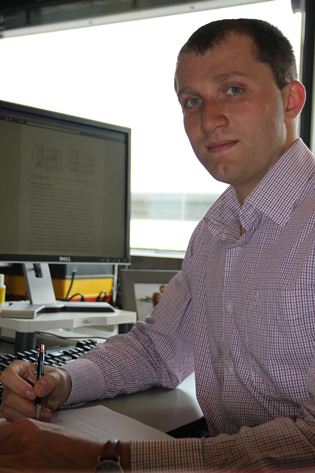
Best paper award IET radar conference 2015, China
- Wednesday, 28 October 2015
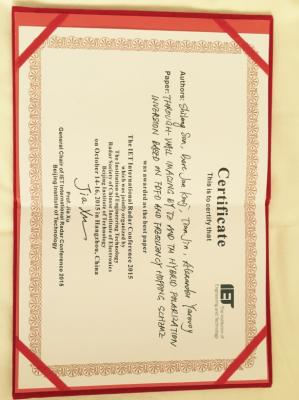
Shilong Sun has developed an inversion scheme for through the wall imaging of objects, based on a contrast source inversion technique in combination with a finite difference frequency domain technique. By combining both TE-polarized as well as TM-polarized waves in a frequency hopping scheme, the method provides a good reconstruction of the shape and the material properties of the objects behind the wall. This paper is a result of joint research activity between MS3 group with the National University of Defence Technology in China. One of the co-authors, Dr. Tian Jin from NUDT, stayed in the MS3 group within 2014-2015 as a guest researcher.
More ...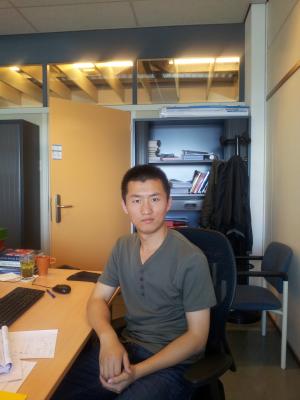
TU Delft Female Fellowship Tenure Track Openings
- Friday, 9 October 2015
Academic openings at all professor levels
More ...
Lecture Xiaodong Xhuge
- Tuesday, 6 October 2015
This lecture will introduce the basic concept of tomography and analytical reconstruction method commonly applied in practice. After a short introduction to tomography and its applications in science and industry. We will then go through some basic mathematical concepts including the Radon Transform and Projection Slice theorem. Then we will introduce the filtered back projection method which is one of the most commonly used techniques in practice. In the end, we will take a brief look at more advanced methods and talk about their potential benefits to applications.
Kick off Math&Science class 2015-2016
- Wednesday, 30 September 2015
For 23 weeks the pupils from highschools all over the Netherlands will get math lectures and science lectures on the TU Delft Campus.
Master thesis defence Rossiza Gourova
- Wednesday, 23 September 2015

On September 23 Rossiza Gourova succesfully defended her master thesis. Rossiza now joined our group as a PhD on automotive.
More ...
Closure event Math & Science class
- Friday, 22 May 2015
The Math & Science class is an initiative of prof Alexander Yarovoy and prof Yaroslav Blanter. They saw the gap, escpecially on mathematics , between highscools and the university. With the Math & Science class they want to prepare the pupils for the level requested at the university and also show the different aspects of science research.
Defense Nadia Haider, April 23, Aula Senaatszaal at 12.30
- Wednesday, 18 March 2015
Sensors such as phased array radars play a crucial role in public safety. They are unavoidable for surveillance, threat identification and post-disaster management. However, different scenarios impose immensely diverse requirements for these systems. Phased array systems occupy a large space. In addition, if different antenna systems are needed for each function, the space required can be considerably large. For transportable platforms, such as ships and aircrafts, space and weight are at a premium. Therefore, reconfigurable multi-band antennas are very attractive solutions for future multi-function sensor systems. Within this research work three different approaches are investigated to realize antennas for reconfigurable phased arrays. Wideband antenna designs constitute the first approach. Integrating this type of antennas with frequency selective filters provide the opportunity for fine tuning within one radar band. The wideband operation of the antenna is achieved by the blind-via feeding section and the quasi electric-magnetic radiating structure. The second approach involves the design of an antenna element with p-I-n diode switches. The switches are used to alter the antenna structure and thereby the operating frequency. Measured results verified the frequency reconfigurable capability of the antenna within L/S radar bands with frequency ratio more than 2:1. The planar structure, the back feeding mechanism, the compact size and the simple bias network made the proposed antenna suitable for array applications. The large frequency ratio and its usability in phased array applications made the design novel. Furthermore, for these frequency reconfigurable elements, a unique multi-scale array structure is introduced which can assure wide angle scanning for both frequency bands. The advantage of this novel array configuration is twofold: reduce the mutual couplings in the lower band, and increase the scanning volume for the higher band. A planar array demonstrator validated the proposed concept. In the third approach the operational band of an antenna is tuned by variableimpedance matching. In this study, the standard 50 Ω matching is avoided and many advantages of variable-impedance matching are demonstrated. First, the principle is verified by tuning the frequency band of a microstrip antenna by an input-impedance tuneable CMOS RF-frontend. In the second design a novel dual-band E-slot antenna, with 2.5:1 frequency ratio, was designed. By changing the input-impedance the operating frequency of the antenna can be switched from L- to S-band. Variableimpedance matching provides few other advantages to phased array antennas. A scan-angle dependent impedance matching will assure low reflection coefficients for the entire scanning volume. On the other hand, it will reduce interfering and jamming signals coming from adjacent angles. The outcomes of this research work have led to solid understanding of how we can realize frequency reconfigurable antennas for adaptive phased arrays. The results will be particularly valuable in developing future narrow or wide beam radar systems with frequency reconfiguration and angular filtering capabilities.
Article in Defensie magazine Materieelgezien
- Wednesday, 11 March 2015
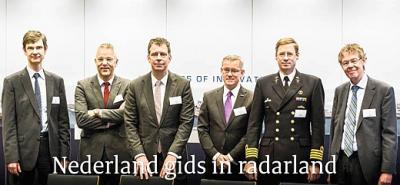
An article about the annual meeting of the Platform Nederland Radarland (NLRL), which was attended by the MS3 group, published in the Materieelgezien a magazine of the Dutch Ministry of Defence.
More ...
Defence Fotios Katsilieris
- Monday, 16 February 2015
Defence, March 5, 12.00 Aula, Senaatszaal. Sensor management for surveillance and tracking. An operational perspective. In the literature, several approaches to sensor (including radar) management can be found. These can be roughly grouped into: a) rule-based or heuristics; b) task-based; c) information-driven; and d) risk/threat-based. These approaches are compared in this dissertation and it is found that there is not a single approach that is both Bayes-optimal and takes into account explicitly the user requirements in different operational contexts. In order to overcome the challenges with the existing approaches, this dissertation proposes managing the uncertainty in higher-level quantities (as per the JDL model) that are directly of interest to an operator and directly related to the operational goal of a radar system. The proposed approach is motivated by the threat assessment process, which is an integral part of defence missions. Accordingly, a prominent example of a commonly used higher-level quantity is the threat-level of a target. The key advantage of the proposed approach is that it results in Bayes-optimal sensor control that also takes into account the operational context in a model-based manner. In other words: a) a radar operator can select the aspects of threat that are relevant to the operational context at hand; and b) external information about the arrival of targets and other scenario parameters can be included when defining the models used in the signal processing algorithms, leading to context-adaptive sensor management.

Defence T.H. de Groot, January 22
- Wednesday, 21 January 2015
' Mission-driven Resource Managament for Reconfigurable Sensing Systems' . Promotor prof. A. Yarovoy, co-pomotor dr. O. Krasnov. Aula, Senaatszaal, 10.00

Alexander Yarovoy, Named 2015 IEEE Fellow
- Wednesday, 26 November 2014
Prof. Alexander Yarovoy, DSc., from Delft University of Technology has been named an IEEE Fellow. He is being recognized for his work on ultra-wideband imaging for ground penetrating radar and microwave scanners.
The IEEE Grade of Fellow is conferred by the IEEE Board of Directors upon a person with an outstanding record of accomplishments in any of the IEEE fields of interest. The total number selected in any one year cannot exceed one-tenth of one- percent of the total voting membership. IEEE Fellow is the highest grade of membership and is recognized by the technical community as a prestigious honor and an important career achievement.
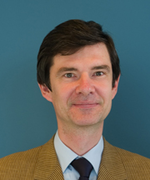
MP Jan Vos visits PARSAX
- Friday, 7 November 2014
On Friday 7 November, Jan Vos, MP for the PvdA, visited the TU Delft Climate Institute. The theme of the visit was climate change, TU Delft's research and the usefulness of and need for climate monitoring. The programme included a demonstration of cloud simulations in the Virtual Lab and a visit to the PARSAX radar. Thanks to the rain, it was possible to obtain good live measurements.

First prize STARS Plenary Session
- Friday, 27 June 2014
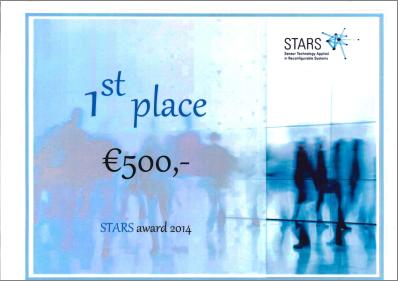
Yesterday Teun de Groot, the PhD student at Microwave Sensing, Signals and Systems section, won the 1st prize for his? poster and presentation at the STARS Project's Plenary session 2014 in Enschede!
The title of his presentation was ? Mission-driven Resource Management for Reconfigurable Sensing Systems?.
More ...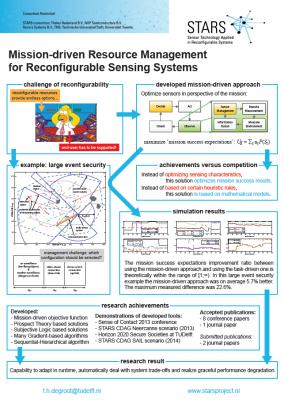
Agenda
Mastermarket
- Friday, 9 February 2024
- 15:30-18:00
- HB20.150
The MS3/ELCA Mastermarket
MS3/ELCA groups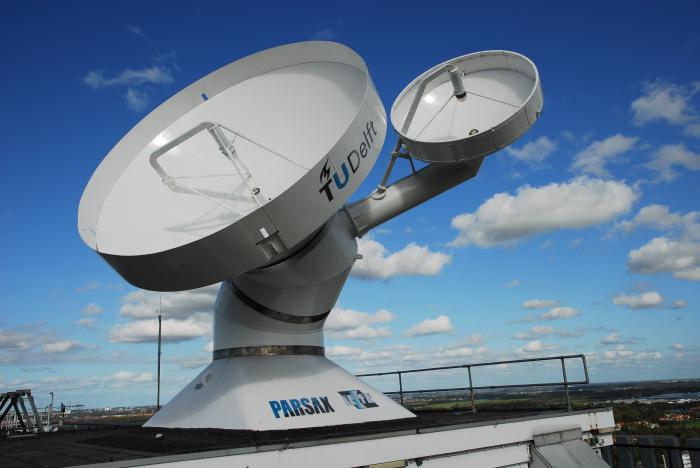
Dear Students,
Get ready for a journey into the world of cutting-edge research in RF technology, radar & communication!
On February 9, we are organizing the MS3/ELCA Mastermarket. On this occasion we, the MS3 and ELCA sections, will inform you about the Master thesis opportunities in our groups, and demonstrate our research with actual measurements, presenting processed experimental results and showing the added value of this research for applications such as automotive radar, 5G/6G, health and well-being, weather and climate change. As RF systems for radars and communication are sources of huge data, we also demonstrate AI capabilities.
We're opening the doors to our measurement labs: the Earl McCune Labs (21st floor), the anechoic chamber (22nd floor), the mm-wave radar lab (22nd floor), and the surveillance radars (23rd floor and roof).
Mark your calendars for 15:30, and meet us in room HB20.150.
We start with a few short presentations followed by the tour and then we will enjoy the pizza and discuss more!
Please send an email to EWI-ME-Secr@tudelft.nl to let us know you will join (and we can make sure there is enough pizza ;-))
We look forward meeting you!
The MS3 & ELCA sections
THz Symposium
- Thursday, 25 -- Thursday, 25 January 2024
- 09:30-17:00
- Lecture Hall D@ta, 36.HB.01.630
Dutch Symposium on Terahertz Science and Technology - 3rd Edition
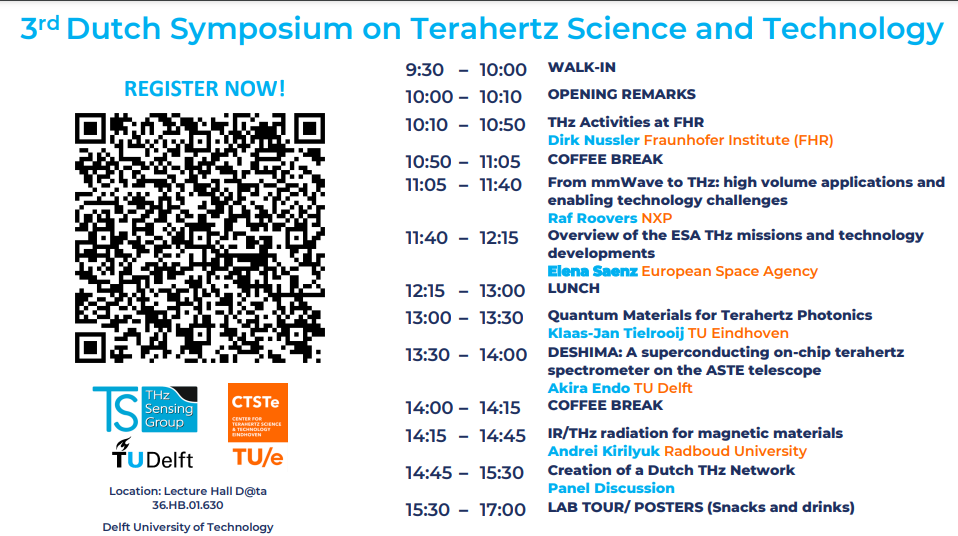
You are cordially invited to join us for the third edition of the Dutch Terahertz Symposium on January 25, 2024. It is a co-organized event between the Delft and Eindhoven University of Technology. With these series of symposiums, we aim to create an environment to exchange information and allow the Dutch Terahertz community to find collaborations and funding opportunities.
The 2024 Dutch Terahertz Symposium aims to bring together the Dutch research community and industry interested in the field of terahertz science and technology. There will be six featured talks from both academic and industrial institutions about the latest developments in the field. You can find the list of speakers and topics attached to this email. There will be plenty of opportunities for interaction with each other and inspired further community building.
Save the date to join a full day of interesting presentations, Q&As, and panel discussions!
Additional information ...
Microelectronics Research Day 2023
- Thursday, 9 November 2023
- 09:30-17:30
- EEMCS
Microelectronics Research Day 2023

TU Delft Microelectronics Research Day
Fully booked!
Registering 2023 not for possible anymore
PhD Thesis Defence
- Wednesday, 27 September 2023
- 12:00-14:00
- Aula Senaatszaal
Pitch-Matched Integrated Transceiver Circuits for High-Resolution 3-D Neonatal Brain Monitoring
Peng Guo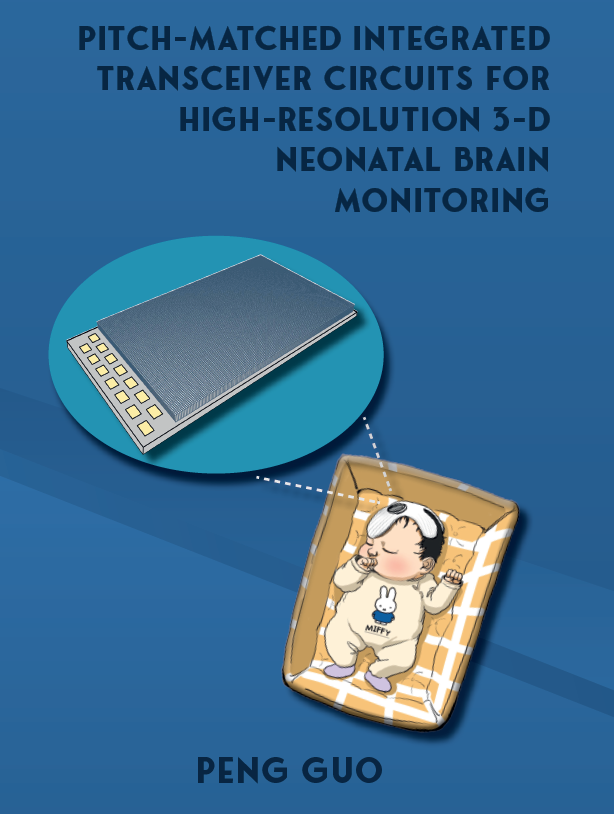
Peng Guo will defend his PhD thesis entitled
Pitch-Matched Integrated Transceiver Circuits for High-Resolution 3-D Neonatal Brain Monitoring
on Wednesday, Sept. 27th. The layman's talk will be at 12:00, the defence starts at 12:30.
The thesis can be downloaded from the TU Delft repository. Peng's work was part of the MIFFY project.
Livestream of the defence: link
Promotors: Michiel Pertijs and Nico de Jong
Abstract: This thesis presents the design and implementation of integrated ultrasound transceivers for use in transfontanelle ultrasonography (TFUS). Two generations of ultrasound transceiver ASICs integrated with PZT transducer arrays intended for TFUS are presented. In the first generation, a novel AFE design that combines an LNA with the continuous TGC function is realized in a bid to mitigate the gain-switching and T/R switching artifacts. Besides, a new current-mode micro-beamforming design based on boxcar integration (BI) is also implemented to reduce the channel count within a compact layout. In the second generation, the AFE is derived from the first version, while the design focuses on RX backend circuitry and channel-count reduction, including a passive BI-based µBF merged with a charge-sharing SAR ADC, which digitizes the delayed-and-summed signals, and a subsequent multi-level data link, which concatenates outputs of four ADCs. In total, a 128-fold reduction in channel count is finally achieved. The techniques we developed have established the groundwork and removed the initial barriers for an electronics architecture suitable for a wearable 3D TFUS device.
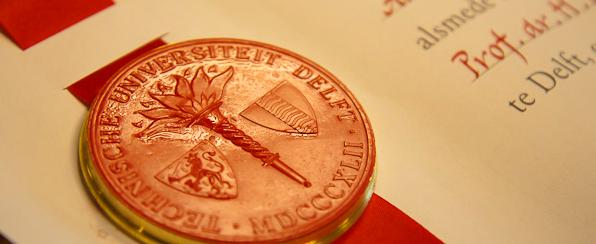
Signal Processing Seminar
- Wednesday, 20 September 2023
- 10:30-11:30
- HB 13.140
Automotive Radar for Autonomous Driving: Signal Processing Meets Deep Learning
Sunqiao SunUniv. Alabama, USA
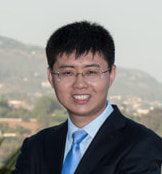
Millimeter-wave automotive radar emerges as one of key sensing modalities for autonomous driving, providing high resolution in four dimensions (4D), i.e., range, Doppler, and azimuth and elevation angles, yet remain a low cost for feasible mass production. In this talk, we will address the challenges in automotive radar for autonomous driving, examine how signal processing and deep learning can be combined to optimize the performance of automotive radar systems, and outline future research directions. Our focus will be on the generation of high-resolution radar imaging using multi-input multi-output (MIMO) radar and frequency-modulated continuous-wave (FMCW) technology. We will examine the challenges of waveform orthogonality, mutual interference, and sparse antenna array design and present our recent innovations in the field, including sparse array interpolation via forward-backward Hankel matrix completion, fast direction-of-arrival estimation via unrolling iterative adaptive approach, and adaptive beamforming via deep reinforcement learning, leading to the generation of high-resolution low-level automotive radar imaging, represented in bird's-eye view (BEV) format, providing rich shape information for object detection and recognition with deep neural networks. However, the radar BEVs are in general hardly shift-invariant over both angle and range since not every pixel is generated equally. The talk will highlight the importance of physics-aware machine learning in perception task on high-resolution radar imaging. We will show how incorporating radar domain knowledge and signal structure into deep neural network design can lead to more accurate and reliable object detection and recognition. Finally, we will discuss future research directions, including integrated sensing and communication, and collaborative radar imaging via an automotive radar network.
Bio:
Shunqiao Sun received the Ph.D. degree in Electrical and Computer Engineering from Rutgers, The State University of New Jersey under supervision of Prof. Athina Petropulu in Jan. 2016. He is currently an assistant professor at The University of Alabama, Tuscaloosa, AL, USA. From 2016-2019, he was with the radar core team of Aptiv, Technical Center Malibu, California, where he has worked on advanced radar signal processing and machine learning algorithms for self-driving vehicles and lead the development of DOA estimation techniques for next-generation short-range radar sensor which has been used in over 120-million automotive radar units. His research interests lie at the interface of statistical and sparse signal processing with mathematical optimizations, automotive radar, MIMO radar, machine learning, and smart sensing for autonomous vehicles. Dr. Sun has been awarded 2016 IEEE Aerospace and Electronic Systems Society Robert T. Hill Best Dissertation Award for his thesis “MIMO radar with Sparse Sensing”. He authored a paper that won the Best Student Paper Award at 2020 IEEE Sensor Array and Multichannel Signal Processing Workshop (SAM). He is Vice Chair of IEEE Signal Processing Society Autonomous Systems Initiative (ASI) (2023-2024). He is an associate editor of IEEE Signal Processing Letters and IEEE Open Journal of Signal Processing. He is a Senior Member of IEEE.
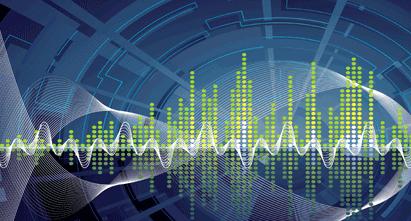
Invited lecture by Prof Maria Sabrina Greco on cognitive radar
- Tuesday, 27 June 2023
- 15:00-16:00
- Faculty industrial design. Hall O
Cognitive Radar
Prof. Maria Sabrina GrecoUniversity of Pisa
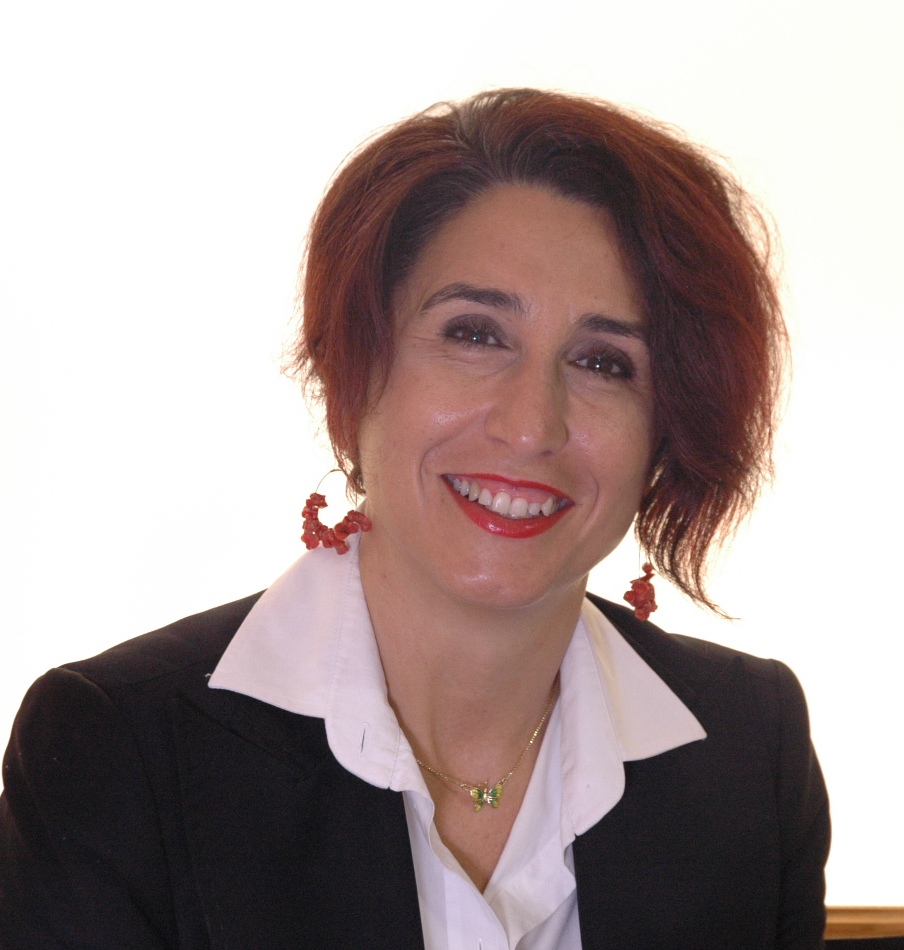
Registration and info link.
https://events.vtools.ieee.org/m/353534
Abstract
Over the past fifteen years, “cognition” has emerged as an enabling technology for incorporating learning and adaptivity on both transmit and receive to optimize or make more robust the radar performance in dynamic environments. The term ‘cognitive radar’ was coined in 2006, but the foundations of the cognitive systems date back several decades to research on knowledge-aided signal processing, and adaptive radar design. The main element of cognitive radar systems is the ‘perception-action cycle’, that is the feedback mechanism between receiver and transmitter that allows the radar system to learn information about a target and its environment and adapt its transmissions so as to optimize one or more missions, according to a desired goal. But a truly cognitive radar should not be only able to adapt on the fly its transmission waveforms and parameters based on internal fixed rules and on what learned about the environment, but it should also be able to optimize these rules learning with time from its mistakes, as some biological system does. And this is still a big challenge for radar experts.
This talk will provide an overview of the main concept, of methods for modeling cognitive processes in a radar system and of some application example. Some insights into future directions of research will be provided as concluding remarks.
Bio
Maria Sabrina Greco graduated in Electronic Engineering in 1993 and received the Ph.D. degree in Telecommunication Engineering in 1998, from University of Pisa, Italy. From December 1997 to May 1998 she joined the Georgia Tech Research Institute, Atlanta, USA as a visiting research scholar where she carried on research activity in the field of radar detection in non-Gaussian background. In 1993 she joined the Department of Information Engineering of the University of Pisa, where she is Full Professor since December 2016. She’s IEEE fellow since January 2011 and she was co-recipient of the 2001 and 2012 IEEE Aerospace and Electronic Systems Society’s Barry Carlton Award for Best Paper and recipient of the 2008 Fred Nathanson Young Engineer of the Year award for contributions to signal processing, estimation, and detection theory
She has been co-general-chair of the 2007 International Waveform Diversity and Design Conference (WDD07), Pisa, Italy, in the Technical Committee of the 2006 EURASIP Signal and Image Processing Conference (EUSIPCO), Florence, Italy, in the Technical Committee of the 2008 IEEE Radar Conference, Rome, Italy, in the Organizing Committee of CAMSAP09, Technical co-chair of CIP2010 (Elba Island, Italy), General co-Chair of CAMSAP2011 (San Juan, Puerto Rico), Publication Chair of ICASSP2014, Florence, Italy, Technical Co-Chair of the CoSeRa2015, Pisa, Italy and Special Session Chair of CAMSAP2015, Cancun, Mexico. She has been lead guest editor of the special issue on "Advanced Signal Processing for Radar Applications", on the IEEE Journal on Special Topics of Signal Processing, published in December 2015, guest co-editor of the special issue of the Journal of the IEEE Signal Processing Society on Special Topics in Signal Processing on "Adaptive Waveform Design for Agile Sensing and Communication," published in June 2007 and lead guest editor of the special issue of International Journal of Navigation and Observation on” Modelling and Processing of Radar Signals for Earth Observation published in August 2008. She’s Associate Editor of IET Proceedings – Sonar, Radar and Navigation, Editor-in-Chief of the IEEE Aerospace and Electronic Systems Magazine, member of the Editorial Board of the Springer Journal of Advances in Signal Processing (JASP), Senior Editorial board member of IEEE Journal on Selected Topics of Signal Processing (J-STSP), and Senior Area Editor of the IEEE Transactions on Signal Processing. She's also member of the IEEE AES and IEEE SP Board of Governors and Chair of the IEEE AESS Radar Panel. She's as well SP Distinguished Lecturer for the years 2014-2015, AESS Distinguished Lecturer for the years 2015-2017, member of the IEEE Fellow Committee and chair of the EURASIP Special Area Team on "Signal Processing for Multisensor Systems (SPMuS)". In May and June 2015 she joined the Université Paris Sud, CentraleSupélec as visiting professor.
Maria is a coauthor of the tutorials entitled “ Radar Clutter Modeling”, presented at the International Radar Conference (May 2005, Arlington, USA), “ Sea and Ground Radar Clutter Modeling” presented at 2008 IEEE Radar Conference (May 2008, Rome, Italy) and at 2012 IEEE Radar Conference (May 2012, Atlanta, USA), coauthor of the tutorial "RF and digital components for highly-integrated low-power radar" presented at the same conference, of the tutorial "Recent Advances in Adaptive Radar Detection" presented at the 2014 International Radar Conference (October 2014, Lille, France) and at 2015 IET Radar Conference (October 2015, Hangzhou, China), co-author of the tutorial "High Resolution Sea and Land Clutter Modeling and analysis", presented at the 2015 IEEE International Radar Conference (May 2015, Washington DC, USA) and of the tutorial "Bistatic active and passive radars" presented at the 2016 IEEE Radar Conference (May 2016, Philadelphia, USA).
Her general interests are in the areas of statistical signal processing, estimation and detection theory. In particular, her research interests include clutter models, spectral analysis, coherent and incoherent detection in non-Gaussian clutter, CFAR techniques, radar waveform diversity and bistatic/mustistatic active and passive radars. She co-authored many book chapters and more than 170 journal and conference papers.
ME colloquium
- Thursday, 25 May 2023
- 15:30-04:30
- EEMCS, lecture hall Boole
Surveillance Radar 119 years old, still alive and kicking
Hans Driessen
Surveillance Radar 119 years old, still alive and kicking
The first radar that was used in a surveillance application was patented in 1904. Since then, surveillance radar has evolved into the inevitable, mature and complex EM sensing system as it is today. In this presentation, I will first briefly illustrate some of the major developments, like digital beamforming, pulse compression and Doppler processing, that have led to these capable radar sensors. Then I will sketch some of the more recent and upcoming technological innovations, like for instance, phased array antennas with digital waveform generation. I will emphasize the role of algorithms for data processing and radar control that are necessary for turning these developments into real new surveillance radar evolutions, and highlights some examples of novel algorithmic concepts for problems that we have been investigating recently.
Additional information ...
Symposium
- Friday, 21 April 2023
- 09:00-18:00
- EEMCS - Lecture Hall Chip
Heterogeneous system integration - Driving the EU Chip Act ambitions
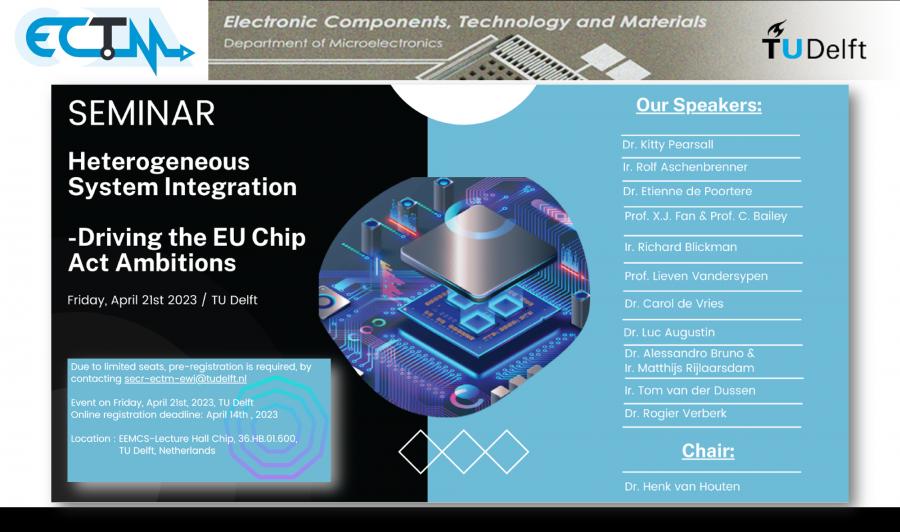
The Netherlands have a strong national ecosystem for quantum, photohics and semiconductor technologies, well connected to international key players. This symposium aims to build on this strength by intensifying collaboration among these domains.
Heterogeneous integration plays a crucial role in enabling future quantum, photonics and semiconductor technologies by creating new functionalities and business opportunities through the integration of different chips, technologies and materials into a single system.
This symposium will discuss the importance of heterogeneous integration and its potential for creating more industry and business value. It also aims to cultivate human resources for heterogeneous integration, further strengthening the Dutch ecosystem.
Join us to explore the exciting opportunities that heterogenous system integration can offer for the Dutch ecosystem and beyond, and to be part of the conversation on driving the EU Chip Act ambitions.

PhD Thesis Defence
- Friday, 3 March 2023
- 09:30-12:00
- Aula Senaatszaal
Yannick Hopf - PhD Defence
Yannick Hopf
Dear Colleagues and Friends,
It is my pleasure to invite you to the defense of my PhD entitled:
Integrated Circuits for 3D High-Frame-Rate Intracardiac Echocardiography Probes
The event will take place in the Senaatszaal/Aula on Friday, 3rd March 2023 and the schedule is as follows:
- 09:30 – Layman’s Talk
- 10:00 – Defense
- 11:30 – Reception
A link for online participation will be shared once provided by the Graduate School.
The thesis can be accessed via:
https://doi.org/10.4233/uuid:7016e74d-c7df-42a8-8257-11326940ad7f
While this marks the end of my PhD project at TU Delft, I will still be around as a postdoc until mid April.
So while I would already like to thank you for all the support and good times, this is not a farewell yet and I’m looking forward to my remaining time in the team!
Best regards,
Yannick
Additional information ...

PhD Thesis Defence
- Tuesday, 31 January 2023
- 15:00-16:30
- Aula Senaatszaal
Ultrasound Imaging through Aberrating Layers
Pim van der Meulen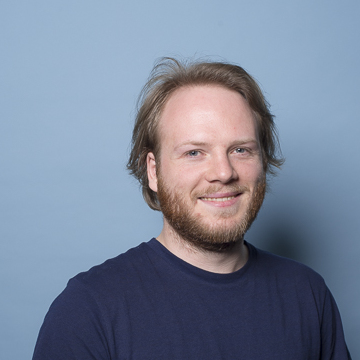
Whereas aberrating layers are typically viewed as forming an impediment to medical ultrasound imaging, they can surprisingly also be used to our benefit. As long as we can model the effect of an aberrating layer,we can utilize ‘model-based imaging’, the imaging technique explored throughout this thesis, to reconstruct ultrasound images where traditional beamforming methodswould fail, employing the ever increasing computational power available to us nowadays. Not only does this allow us to image through layers, but it also leads to interesting applications, such as 3D ultrasound imaging with spatially undersampled data, using an aberrating ‘coding mask’. The formulation of a measurement model, a fundamental part of model-based imaging, also gives insight into the imaging problem mathematically, and allows us to investigate methods for estimating the effect of an aberrating layer ‘blindly’, i.e., without explicitly measuring it.
In this thesis, we thus investigate (a), imaging through a layer when the layer’s aberration effect is known, and how it can be applied to imaging with spatially undersampled data, and (b), methods and algorithms for estimating the effect of the aberrating layer without knowing it a priori.
In the first part of this thesis, we illustrate how using model-based imaging can be utilized for 3D ultrasound imaging using a single ultrasound transducer, and equipping it with a plastic coding mask. The plastic mask acts as an analog coder, that scrambles the transmitted and received waves in a manner that is location dependent. As a result, the temporal shape of an ultrasound echo can be used instead of the traditional method of using phase differences between sensors in a sensor array. Imaging is instead accomplished using model-based imaging. By measuring the pulse-echo response of each pixel, we can form an image by solving a regularized linear least squares problem, which takes into account the measured pixel-specific pulse-echo signals. The proposed device and imaging method is then verified experimentally.
In the following chapter, a coding mask design method is proposed for the aforementioned imaging device. A measurement model is formulatedwhere themask geometry is an explicit parameter to be optimized. After forming this model, a numerical optimization method is proposed and numerically tested. Our numerical experiments show that optimized mask geometries exhibit an energy focusing effect on the region-of-interest, whilst simultaneously decorrelating echo signals between pixels.
In the second part of this thesis, in contrast, we consider methods for calibrating propagation models when the pulse-echo response per pixel is not known. The most important calibration challenge we consider is that of imaging through an aberrating layer in front of an ultrasound array. This could be subcutaneous fat or the human skull, for example. In this thesiswe formulate ameasurement model consisting of a partwhere wave propagation is known (i.e., the assumed homogeneous region behind the aberrating layer, where the contrast image of interest is located), and an unknown propagation part, consisting of the Green’s functions from an array sensor to any point on the the interface of the aberrating layer and the imaging medium. We then investigate methods for finding this set of Green’s functions without explicitly measuring them (so called ‘blind’ calibration).
The first proposed method exploits the singular value decomposition of the measurement data in combination with the assumed Toeplitz structure of the matrices representing the aberrating layer’s Green’s functions. However, the method is lacking in practicality since an additional set ofmeasurements is required with a phase screen mounted on the interface of the aberration layer and the imaging medium. The second method resolves these practical issues by utilizing a covariance matching technique. A sufficiently large set of measurements is obtained where each measurement is different due to e.g. moving particles such as blood flow or micro-bubbles. Using the covariance of the data, algorithms are then defined that can estimate the transfer functions of the aberrating layer from the measurement covariance data.
Finally, we propose a method for estimating the electro-mechanical impulse response of an ultrasound sensor, by simply measuring its pulse-echo response from a flat plate reflector in front of the sensor. Estimating the one-way (electro-mechanical) impulse response then becomes a de-autoconvolution problem, for which we propose a method by solving a semi-definite relaxation of the de-autoconvolution problem.
Additional information ...

PhD Thesis Defence
- Thursday, 15 September 2022
- 12:00-13:30
- Aula Senaatszaal
Advanced Measurement Techniques and Circuits for Array-Based Transit-Time Ultrasonic Flow Meters
Douwe van Willigen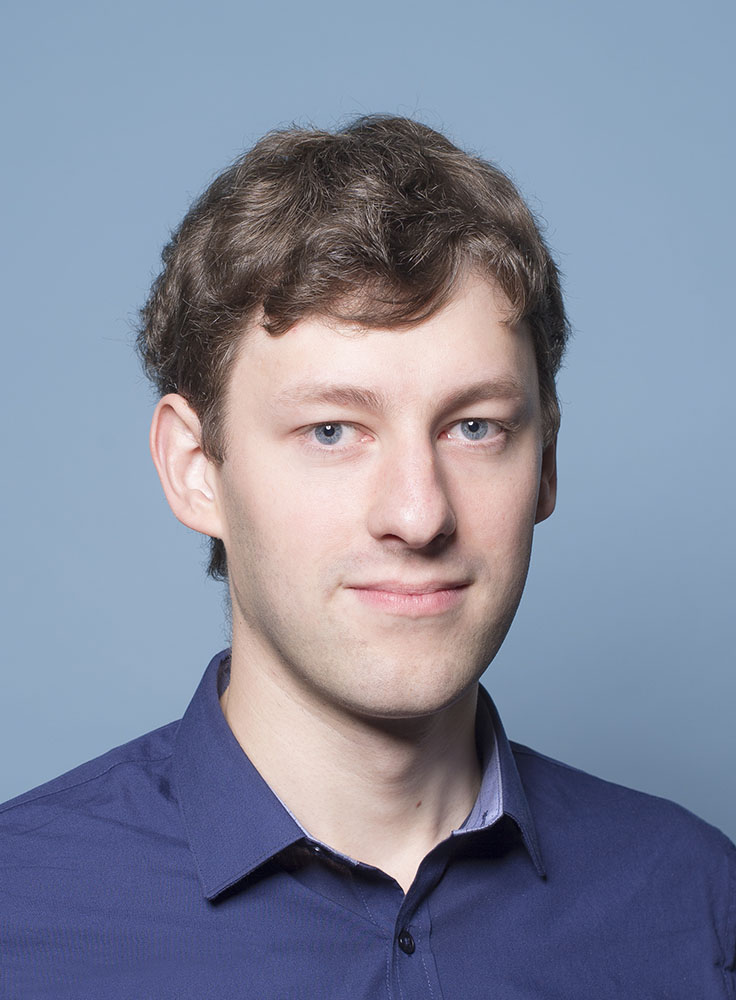
This thesis describes the design, prototyping and evaluation of matrix-based clamp-on ultrasonic flow meters. Several new measurement techniques are presented as well as an Application-Specific Integrated Circuit (ASIC) designed for accurate measurement of flow velocity with matrix transducers.
The influence of circuit topologies on the zero-flow performance of ultrasonic flow meters has been analyzed and an algorithm is presented to reduce the offset. With a linear transducer array, flow measurements have been performed via two different acoustic paths, demonstrating the ability to accurately measure flow with array transducers through a stainless-steel pipe wall. In order to improve signal quality, an ASIC has been designed that is able to drive and read-out 96 piezo transducer elements. The ASIC has been characterized electrically and flow measurements have been performed in combination with the linear transducer arrays.
Several new techniques, enabled using transducer arrays, have also been explored. By tapering the amplitude of the transmit signals, spurious waves can be suppressed. An auto-calibration technique has been developed that uses additional acoustic measurements to estimate the diameter of the pipe and the speed of sound in the pipe wall and liquid. Finally, a simulation study has been performed to explore the possibility of exploiting the beam-steering capabilities of transducer arrays to measure flow velocity profiles by using measurements obtained via multiple acoustic paths.
Thesis:
https://doi.org/10.4233/uuid:e2f4b411-3d8e-4b93-b037-096009c59f61
Collegerama (live stream of the defence):
https://collegerama.tudelft.nl/mediasite/play/571eb84f3e724d47b46df7e8d0eb3a7a1d

PhD Thesis Defence
- Tuesday, 13 September 2022
- 12:00-13:30
- Aula Senaatszaal
Integrated Transceiver Circuits for Catheter-based Ultrasound Probes and Wearable Ultrasound Patches
Mingliang Tan
Promotors: Michiel Pertijs and Ronald Dekker
Thesis: link
Collegerama link (live stream of the defence): link
Abstract: This thesis describes the design, prototyping, and experimental evaluation of transceiver ASICs (application-specific integrated circuits) for catheter-based ultrasound probes and wearable ultrasound patches. Various circuit techniques are proposed to address requirements and implementation bottlenecks in these applications. Prototype chips are presented to demonstrate the effectiveness of these techniques. To reduce the loading effect of micro-coaxial cables in an ICE probe based on capacitive micro-machined ultrasound transducers (CMUTs), an ASIC prototype including element-level high-voltage pulses and low-noise trans-impedance amplifiers has been implemented. Besides reducing the loading effect from micro-coaxial cables, ASICs play an important role in achieving cable-count reduction, which is crucial for 3-D imaging catheters, such as forward-looking IVUS probes. Circuit techniques are proposed to implement a prototype ASIC which only requires 4 cables to interface with a 2D piezoelectric transducer array. Additionally, to address the challenges in interface electronics for wearable ultrasound patches, a prototype ASIC is presented that contains 64 reconfigurable transceiver channels that can interface with different transducer elements by employing channel-parallelizing techniques.
Additional information ...
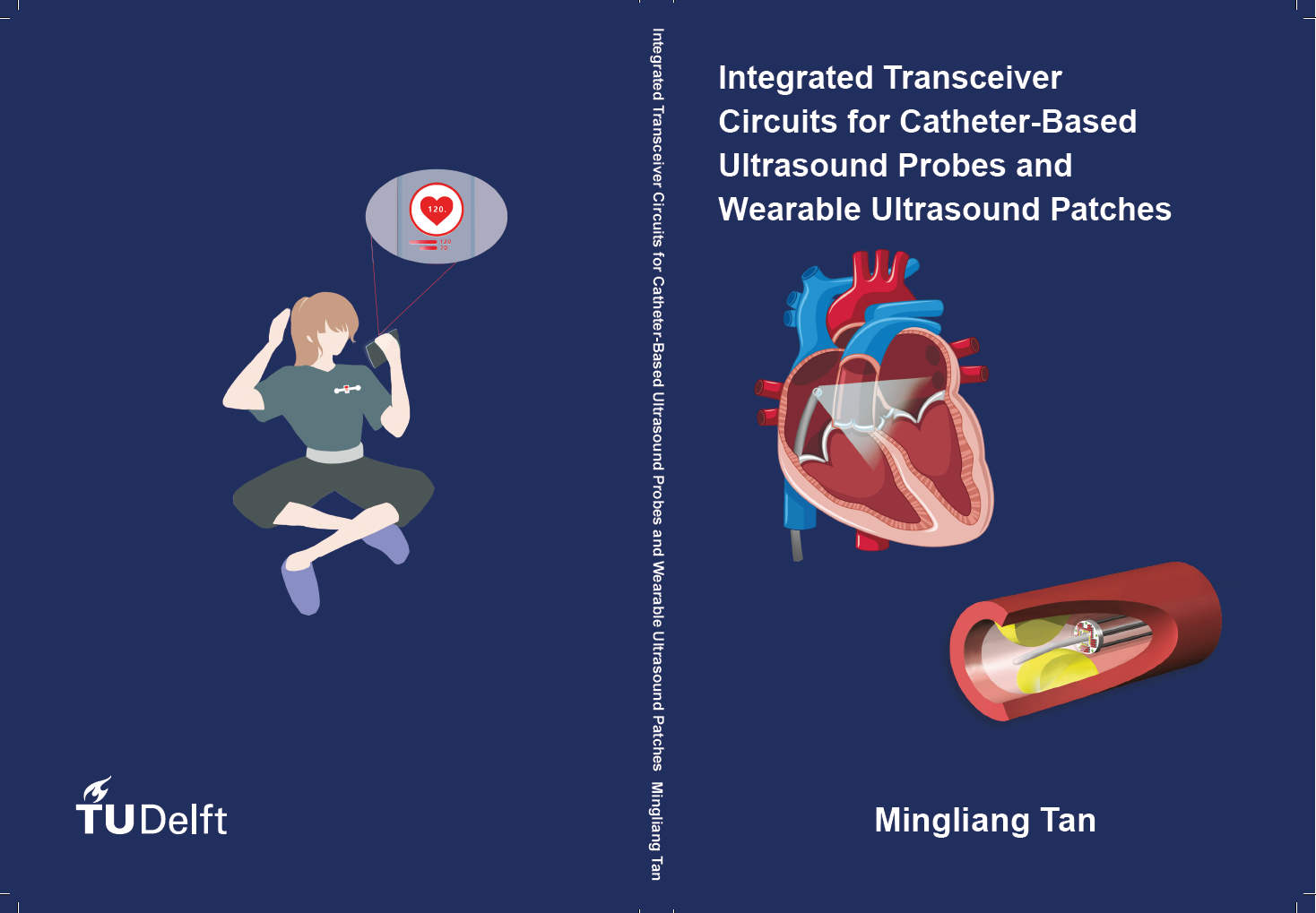
Special EI Colloquium
- Tuesday, 13 September 2022
- 10:00-11:00
- EWI - Lecture Hall F
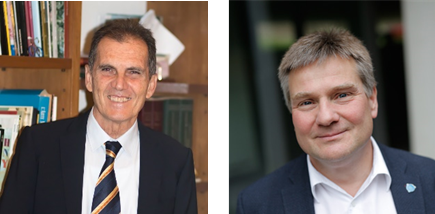
Real-time High-Frame Rate imaging: Novel Methods and Applications
Prof. Piero Tortoli
Microelectronics Systems Design Laboratory
University of Florence, Italy
Medical imaging is increasingly based on High-Frame-Rate (HFR) methods, which are in principle capable of producing one frame (or even one data volume) per transmission event. However, achieving such a goal in real-time implicitly involves the transfer and processing of huge amount of data at high rates, and this can be done only through an appropriate experimental setup.
In this talk, the main characteristics of the hardware-based open scanner ULA-OP 256 are briefly reviewed, and its recent advancements, such as the data transfer acceleration obtained through an architectural change, and the possible expansion toward the control of an unlimited number of probe elements, are reported in detail. The “virtual real-time” modality will also be described as ideal to obtain the best performance from specific HFR imaging modalities. Finally, the combination of ULA-OP 256 with properly designed sparse 2-D arrays will be shown suitable for the investigation of full volumes. The talk will be concluded with the presentation of experimental results in a few sample applications, including multi-plane imaging, HFR CFM and HFR vector Doppler.
Micro- and Nanosystems at ESAT, KU Leuven
Prof. Michael Kraft
ESAT, Micro- and Nano-Systems
KU Leuven, Belgium
This seminar will give an brief overview of the activities in micro- and nanosystems at the Electrical Engineering Department (ESAT) of KU Leuven. It will describe the available infrastructure and give a short overview of current research activities in the division Micro- and Nanosystems (MNS), which currently comprises 24 PhD students, 4 postdoctoral researchers and 2 technicians.
A selection of current active projects and recent highlights will be presented, including work on:
- Coupled resonators for mass sensing applications
- Piezoelectric ultrasound technology arrays for medical imaging and underwater communication
- Micromachined probes for neuro recording and stimulation
- Multi-parameter sensing chip for bioreactor condition monitoring
- Genetic Algorithm for the design of MEMS devices (accelerometers and microgrippers)
Finally, the newly founded Leuven Institute for Micro- and Nano Integration (LIMNI) will be briefly introduced.
Note: This Colloquium precedes the PhD defence of Mingliang Tan, which will take place in the Aula on the same day at 12:00 (layman’s talk), 12:30-13:30 (defence). More information can be found here.
Sensors and CMOS Interface Electronics
- Monday, 9 -- Friday, 20 May 2022
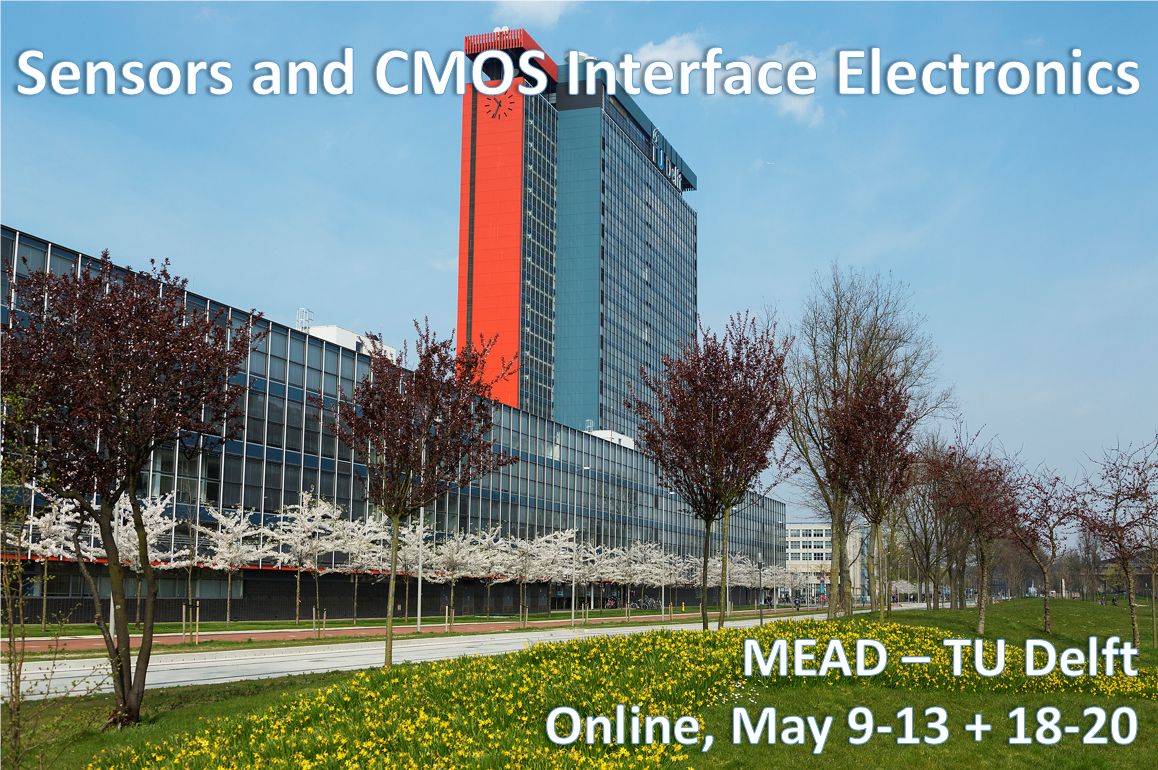
Would you like to learn about smart sensors and interface circuits? Register for our course “Sensors and CMOS Interface Electronics”, co-organized by TU Delft and MEAD Education.
The course will take place online, on 8 days between May 9 and May 20, with two lectures per day timed conveniently for participation from anywhere on the globe.
Topics include smart-sensor design, calibration techniques, references, offset-cancellation, analog-to-digital conversion, instrumentation amplifiers and energy harvesting. Moreover, the course features lectures by experts in the field dedicated to smart inertial sensors, magnetic sensors, temperature sensors, image sensors, ultrasonic sensors, capacitive sensors, implantable medical devices and DNA microarrays.

PhD Thesis Defence
- Monday, 13 September 2021
- 14:30
- Aula Senaatszaal
In-pixel temperature sensors for dark current compensation of a CMOS image sensor
Accel Abarca ProuzaThis thesis describes the integration of temperature sensors into a CMOS image sensor (CIS). The temperature sensors provide the in-situ temperature of the pixels as well as the thermal distribution of the pixel array. The temperature and the thermal distribution are intended to be used to compensate for dark current affecting the CIS. Two different types of in-pixel temperature sensors have been explored. The first type of temperature sensor is based on a substrate parasitic bipolar junction transistor (BJT). The second type of temperature sensor that has been explored is based on the nMOS source follower (SF) transistor of the same pixel. The readout system that is used for the temperature sensors and for the image pixels is based on low noise column amplifiers. Both types of in-pixel temperature sensors (IPTS) have been designed implementing different techniques to improve their accuracy. The use of the IPTSs has been proved by measuring three prototypes chips. Also, a novel technique to compensate for the dark current of a CIS by using the IPTS has been proposed.
For those who cannot attend, you can follow it by using this link:
https://collegerama.tudelft.nl/mediasite/play/84dc9775142d44db81aa38e5532c67ca1d

Ph.D. Thesis Defense of Sining Pan
- Monday, 12 April 2021
- 12:00-13:30
Resistor-based temperature sensors in CMOS technology
Sining Pan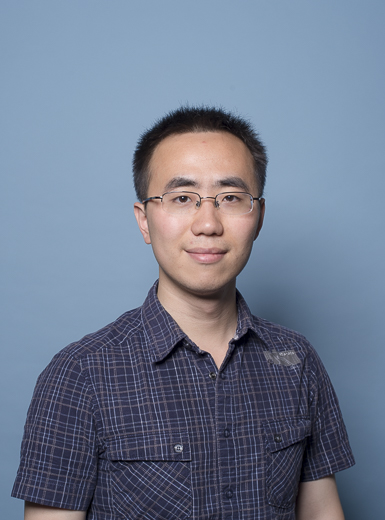
Time: Monday, 12 April 2021, 12:00-12:15 (layman’s talk), 12:30-13:30 (defense)
Abstract: This thesis describes the principle and design of an emerging type of CMOS temperature sensors based on the temperature dependency of on-chip resistors. Compared to traditional BJT-based designs, resistor-based sensors have higher energy-efficiency, better scalability, and can operate under a wider supply range. Nine design examples are shown in this thesis to demonstrate how resistor-based sensors can be optimized for accuracy, energy-efficiency, or other application-driven specifications. Among all the records the designs achieved, the energy-efficiency improvement is the most impressive: 65× better than state-of-the-art before this research, or only 6× away from the theoretical value.
Please feel welcome to join the live stream: http://collegerama.tudelft.nl/mediasite/play/be505395bbf24debb7cf8fd61454a5261d
Thesis: https://doi.org/10.4233/uuid:28108302-2d9b-4560-a806-8ba6d381812e Additional information ...
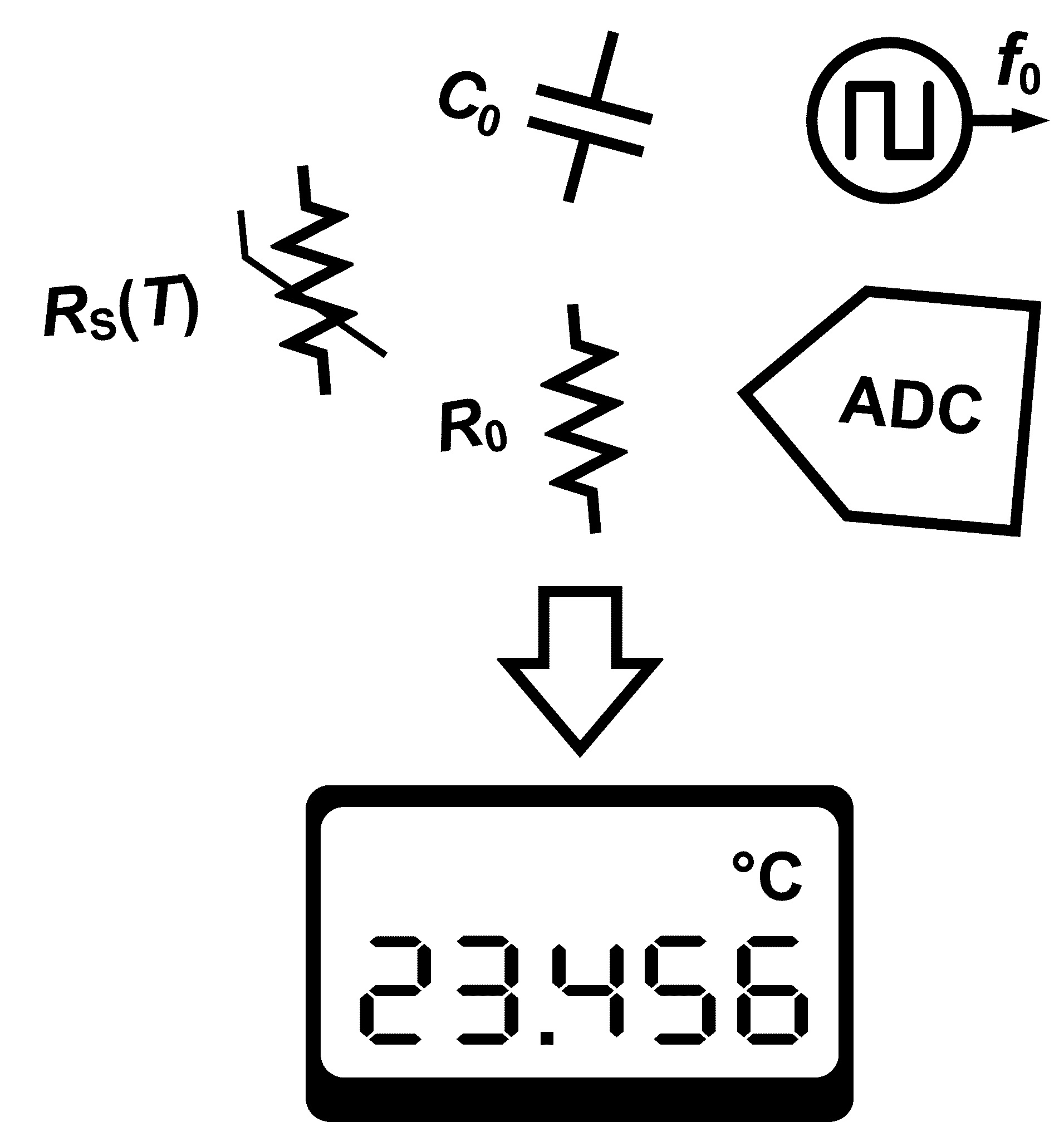
Medical Delta Café
- Thursday, 14 January 2021
- 16:00-17:00
- Online via Teams
Medical Delta Café 'Zorg naar huis, en dan….? Van monitoren tot behandelen'
Wouter Serdijn, Frank Willem Jansen (Medical Delta), Gisela Terwindt (LUMC), Ries Biggelaar van den (ErasmusMC)
In het online Medical Delta Café 'Zorg naar huis, en dan….? Van monitoren tot behandelen' belichten prof. dr. Gisela Terwindt (LUMC) en drs. Ries van den Biggelaar (Erasmus MC) deze kwesties, waarna deelnemers worden uitgenodigd mee te discussiëren en kennis uit te wisselen in een paneldiscussie met onder andere Medical Delta hoogleraar prof. dr. ir. Wouter Serdijn (TU Delft).
Additional information ...
PhD Thesis Defence
- Monday, 21 December 2020
- 14:30-16:00
Integrated Circuits for Miniature 3-D Ultrasound Probes: Solutions for the Interconnection Bottleneck
Zhao Chen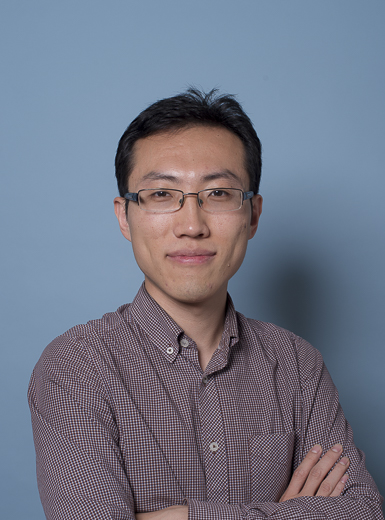
14:30-15:00 (layman’s talk), 15:00-16:00 (defence)
Please feel welcome to join the live stream
Promotors: Michiel Pertijs and Nico de Jong
Abstract: This thesis describes low-power application-specific integrated circuit (ASIC) designs to mitigate the constraint of cable count in miniature 3-D TEE probes. Receive cable-count reduction techniques including subarray beamforming and digital time-division multiplexing (TDM) have been explored and the effectiveness of these techniques has been demonstrated by experimental prototypes. Digital TDM is a reliable technique to reduce cable count, but it requires an in-probe datalink for high-speed data communication. A quantitative study on the impact of the datalink performance on B-mode ultrasound image quality has been introduced in this thesis for data communication in future digitized ultrasound probes. Finally, a high-voltage transmitter prototype has been presented for effective cable-count reduction in transmission while achieving good power efficiency. The application of these techniques is not limited to only the design of TEE probes and can be easily extended to the design of other miniature 3-D ultrasound probes, for instance intracardiac echocardiography (ICE) probes and IVUS probes, which are facing similar interconnect challenges with an increased number of transducer elements to enhance imaging quality.
Additional information ...

Microelectronics Colloquium
- Thursday, 29 October 2020
- 15:30-16:30
- Online
Artificial Retina: A Future Cellular-Resolution Brain-Machine Interface
Dante Muratore
A healthy retina transduces incoming visual stimuli into patterns of neural activity, which are then transmitted to the brain via the optic nerve. Degenerative diseases, like macular degeneration or retinitis pigmentosa, destroy the ability of the retina to transduce light, causing profound blindness. An artificial retina is a device that replaces the function of retinal circuitry lost to disease. Present-day devices can elicit visual percepts in patients, providing a proof of concept. However, the patterns of neural activity they produce are far from natural, and the visual sensations experienced by patients are coarse and of limited use to patients.
A main hurdle is that there are many types of cells in the retina. For example, some cells respond to increases of light intensity, while other cells respond to decreases of light intensity. In order to reproduce a meaningful neural code, it is crucial to respect the specificity and selectivity of these cells. Because cells of different types are intermixed in the circuitry of the retina, cell type specific activation of this kind requires that a future artificial retina be able to stimulate at single cell resolution, over a significant area in the central retina.
To achieve this goal, we are designing an epi-retinal interface that operates in two modes: calibration and runtime. During calibration, the interface learns which cells and which cell types are available for stimulation, by recording neural activity from the retina. During runtime, the interface stimulates the available cells to best approximate the desired scene. I will present a system architecture we are developing that can accomplish the overall performance goals, and the implications of this architecture for brain-machine interfaces.
Additional information ...
MSc TC Thesis Presentation
- Friday, 28 August 2020
- 09:30-10:30
- https://tudelft.zoom.us/j/93624431107
Radar-based vital sign detection and indoor target localization algorithm development
Lin WanIMEC, Eindhoven.
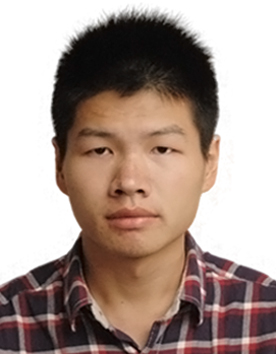
The work is on radar-based vital sign detection and indoor target localization.
Additional information ...
MSc TC Thesis Presentation
- Thursday, 27 August 2020
- 09:00-10:00
- https://tudelft.zoom.us/j/92123895288?pwd=NnlKaGZNbE83S2U1Q0ZqZElOWmZRUT09
Computationally Efficient Conical Horn Antenna Design
Tworit DashASTRON
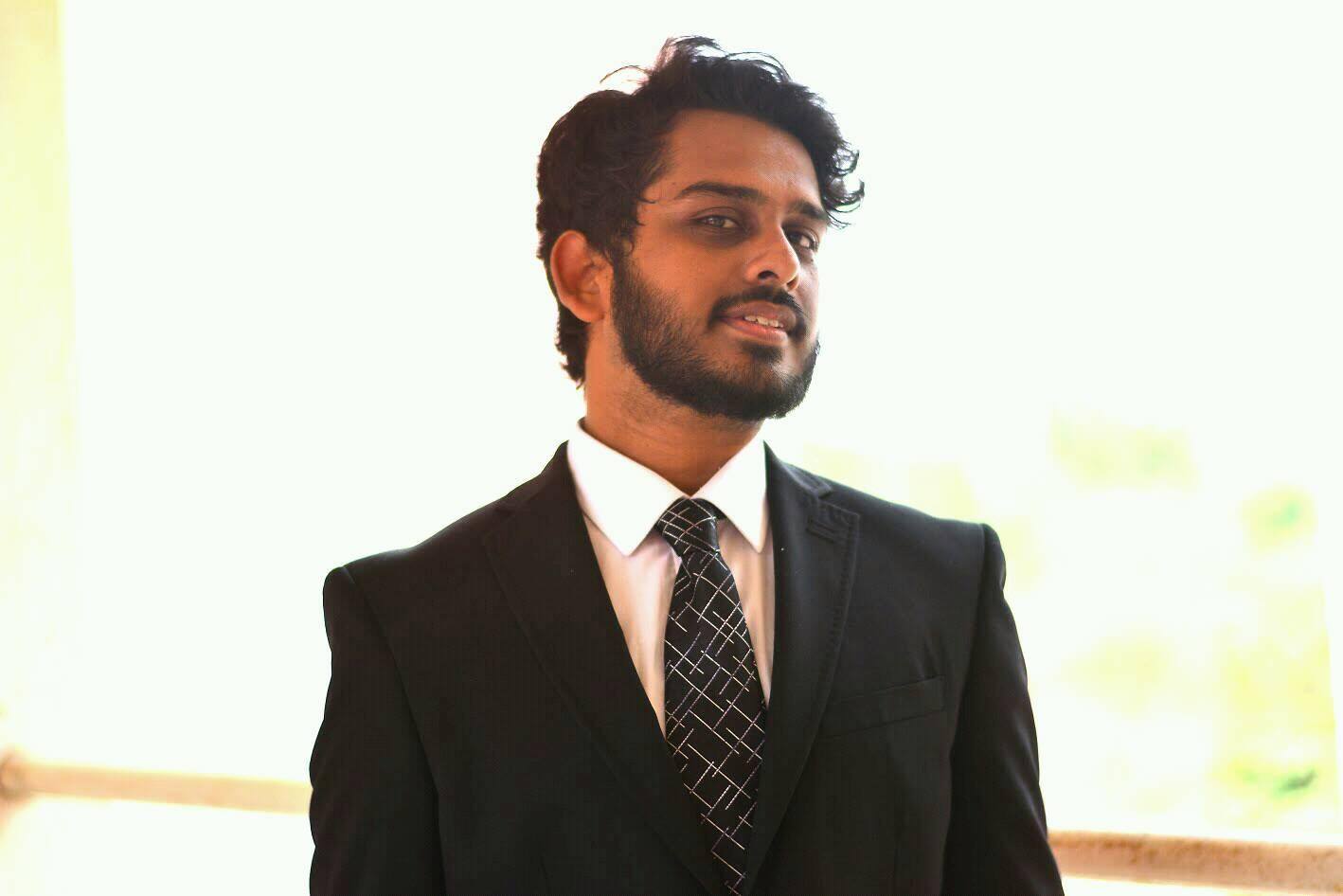
PhD Thesis Defence
- Wednesday, 26 August 2020
- 14:30-16:30
- Aula Senaatszaal
Antenna Array Synthesis and Beamforming for 5G Applications: An Interdisciplinary Approach
Yanki Aslan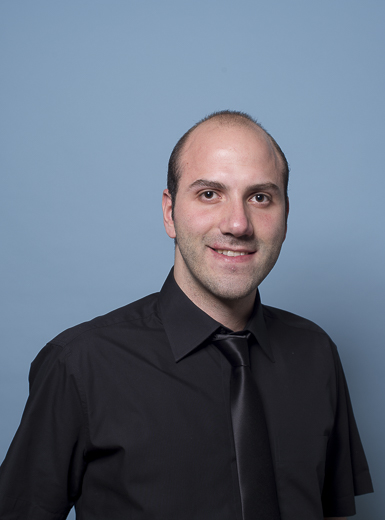
Realization of the future 5G systems requires the design of novel mm-wave base station antenna systems that are capable of generating multiple beams with low mutual interference, while serving multiple users simultaneously using the same frequency band. Besides, small wavelengths and high packaging densities of front-ends lead to overheating of such systems, which prevents safe and reliable operation. Since the strict cost and energy requirements of the first phase 5G systems favor the use of low complexity beamforming architectures, computationally efficient signal processing techniques and fully passive cooling strategies, it is a major challenge for the antenna community to design multibeam antenna topologies and front-ends with enhanced spatial multiplexing, limited inter-beam interference, acceptable implementation complexity, suitable processing burden, and natural-only/radiative cooling.Traditionally, array design has been performed based on satisfying the given criteria solely on the radiation patterns (gain, side lobe level (SLL), beamwidth etc.). However, in addition to the electromagnetic aspects, multi-beam antenna synthesis and performance evaluation in 5G systems at mm-waves must combine different disciplines, including but not limited to, signal processing, front-end circuitry design, thermal management, channel & propagation, and medium access control aspects. Considering the interdisciplinary nature of the problem, the main objective of this research is to develop, evaluate and verify innovative multibeam array techniques and solutions for 5G base station antennas, not yet used nor proposed for mobile communications. The research topics include the investigation of (i) new array topologies, compatible with IC passive cooling, including sparse, space tapered arrays and optimized subarrays, meeting key requirements of 3-D multi-user coverage with frequency re-use and power-efficient side-lobe control, (ii) adaptive multiple beamforming strategies and digital signal processing algorithms, tailored to these new topologies, and (iii) lowcost/competitive and sufficiently generic implementation of the above array topologies and multi-beam generation concepts to serve multiple users with the same antenna(s) with the best spectrum and power efficiencies. This doctoral thesis consists of three parts. Part I focuses on the system-driven aspects which cover the system modeling (including the link budget and precoding), propagation in mm-wave channels and statistical assessment of the Quality of Service (QoS). Although separate comprehensive studies exist both in the field of propagation/system modeling and antennas/beamforming, the link between the two disciplines is still weak. In this part, the aim of the study is to bridge the gap between the two domains and to identify the trade-offs between the complexity of beamforming, the QoS, and the computational cost of precoding in the 5G multi-beam base station arrays for various use cases. Based on the system model developed, a novel quantitative relation between the antenna SLLs/pattern nulls and the statistical QoS is established in a line-of-sight (LoS) dominated mm-wave propagation scenario. Moreover, the potential of using smart (low in-sector side-lobe) array layouts (with simple beam steering) in obtaining sufficiently high and robust QoS, while achieving the optimally low processing costs is highlighted. For a possible pure non-line-of-sight (NLoS) scenario, the system advantages (in terms of the beamforming complexity and the interference level) of creating a single, directive beam towards the strongest multipath component of a user are explained via ray-tracing based propagation simulations. The insightful system observations from Part I lead to several fundamental research questions: Could we simplify the multiple beamforming architecture while keeping a satisfying QoS? Are there any efficient yet effective alternative interference suppression methods to further improve the QoS? How should we deal with the large heat generation at the base station? These questions, together with the research objectives, form the basis for the studies performed in the remaining parts. Part II of the thesis focuses on the electromagnetism-driven aspects which include innovative, low-complexity subarray based multibeam architectures and new array optimization strategies for effective SLL suppression. The currently proposed multi-beam 5G base stations in the literature for beamforming complexity reduction use either a hybrid array of phased subarrays, which limits the field-of-view significantly, or employ a fully-connected analog structure, which increases the hardware requirements remarkably. Therefore, in the first half of this part, the aim is to design low-complexity hybrid (or hybrid-like) multiple beamforming topologies with a wide angular coverage. For this purpose, two new subarray based multiple beamforming concepts are proposed: (i) a hybrid array of active multiport subarrays with several digitally controlled Butler Matrix beams and (ii) an array of cosecant subarrays with a fixed cosecant shaped beam in elevation and digital beamforming in azimuth. Using the active (but not phased) multiport subarrays, the angular sector coverage is widened as compared to that of a hybrid array of phased subarrays, the system complexity is decreased as compared to that of a hybrid structure with a fully-connected analog network, and the effort in digital signal processing is reduced greatly. The cosecant subarray beamforming, on the other hand, is shown to be extremely efficient in serving multiple simultaneous co-frequency users in the case of a fairness-motivated LoS communication thanks to its low complexity and power equalization capability. Another critical issue with the currently proposed 5G antennas is the large inter-user interference caused by the high average SLL of the regular, periodic arrays. Therefore, in the second half of Part II, the aim is to develop computationally and power-efficient SLL suppression techniques that are compatible with the 5G’s multibeam nature in a wide angular sector. To achieve this, two novel techniques (based on iterative parameter perturbations) are proposed: (i) a phase-only control technique and (ii) a position-only control technique. The phase-only technique provides peak SLL minimization and simultaneous pattern nulling, which is more effective than the available phase tapering methods in the literature. The position-only technique, on the other hand, yields uniform-amplitude, (fully-aperiodic and quasi-modular) irregular planar phased arrays with simultaneous multibeam optimization. The latter technique combines interference-awareness (via multibeam SLL minimization in a predefined cell sector) and thermal-awareness (via uniform amplitudes and minimum element spacing constraint) for the first time in an efficient and easy-to-solve optimization algorithm. Part III of the thesis concentrates on the thermal-driven aspects which cover the thermal system modeling of electronics, passive cooling at the base stations, and the role of antenna researchers in array cooling. The major aim here is to form a novel connection between the antenna system design and thermal management, which is not yet widely discussed in the literature. In this part, an efficient thermal system model is developed to perform the thermal simulations. To effectively address the challenge of thermal management at the base stations, fanless CPU heatsinks are exploited for the first time for fully-passive and low-cost cooling of the active integrated antennas. To reduce the size of the heatsinks and ease the thermal problem, novel planar antenna design methodologies are also proposed. In the case of having a low thermal conductivity board, using a sparse irregular antenna array with a large inter-element spacing (such as a sunflower array) is suggested. Alternatively, for the densely packed arrays, increasing the equivalent substrate conductivity by using thick ground planes and simultaneously enlarging the substrate dimensions is proven to be useful. The performed research presents the first-ever irregular/sparse and subarray based antennas with wide scan multi-beam capability, low temperature, high-efficiency power amplifiers, and low level of side lobes. The developed antenna arrays and beam generation concepts could have also an impact over a broad range of applications where they should help overcome the capacity problem by use of multiple adaptive antennas, improve reliability and reduce interference.
Additional information ...

MSc TC Thesis Presentation
- Friday, 21 August 2020
- 09:00-10:00
Vital Signs Monitoring Using Doppler Signal Decomposition
Yuqing Li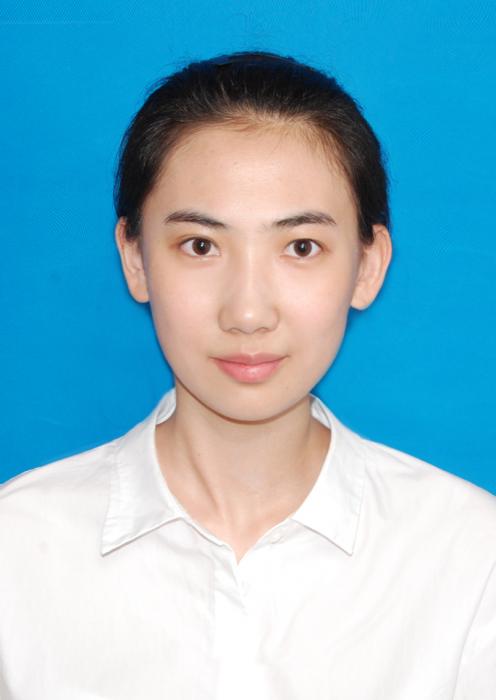
There is an ever-growing demand for vital signs monitoring for a variety of occasions. Non-contact vital signs monitoring can be achieved by detecting the displacement of the human chest using Doppler radar. This method is non-invasive, environment-independent, and suitable for long-term monitoring. However, the real-time detection of cardiopulmonary parameters extraction with radar needs to address the challenges of the limited time duration of the signal for the extraction of cardiopulmonary signals, accuracy of vital signs parameters estimation, and signal processing algorithm complexity. Here we show that empirical and variational signal decomposition methods can be performed to extract respiration and heartbeat signals in the radar system. Hilbert-Huang transform is applied in conjunction with the signal decomposition methods to display the time-frequency-energy distribution of decomposed signals, thus the instantaneous frequencies and amplitudes of vital signs can be obtained. Besides, online signal decomposition approaches are illustrated to achieve the dynamic estimation of vital signs from the radar data stream. The results of our experimental verification demonstrate that Online-VMD has an accuracy of 99.56% and a variance of estimated frequencies of 1.81 x 10−3 when it is applied in FMCW radar system, providing a reliable, accurate and real-time parameter estimation results in vital signs monitoring.
SSCS WYE Webinar
- Friday, 7 -- Friday, 7 August 2020
- 17:00-18:00
To Academia, or to Industry, That is the Question.
Kofi Makinwa, Shin-Lien Lu
Abstract:
You are about to finish graduate school or perhaps a young or seasoned professional, contemplating a career transition. Which is better - a career in academia or industry? What are the pros and cons of one versus the other? How can you start exploring and build up your career accordingly? In this webinar, we will interview Dr. Linus Lu, a professor-turned-industry veteran, and Prof. Kofi Makinwa, an industry veteran-turned-professor, who will share their insights and perspectives from their personal journeys in both academia and industry careers. They will also address what triggered their transitions, how they staged their transitions, and offer their crystal ball projections on present and future career prospects in the solid-state-circuits profession. Additional information ...

Joint Radar and Communication systems using Fractional Fourier Transform
- Friday, 26 June 2020
- 15:00-16:30
- Online
Centre for Signal and Image Processing, University of Strathclyde, Glasgow, UK
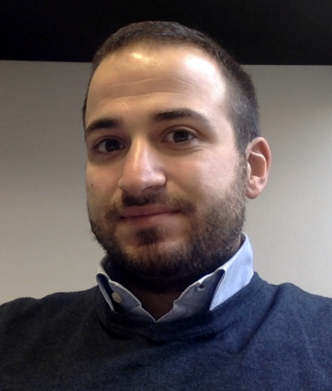
In several applications there is the dual need for a system to perform radar operations while sending data to another cooperative system. Examples are vehicles in an Intelligent Transportation System (ITS) that need to share information in a rapidly changing environment; Synthetic Aperture Radar (SAR) systems that need to share sensed data with ground stations; nodes in a Multiple-Input Multiple-Output (MIMO) radar system for the purposes of surveillance or navigation aid.
A straightforward solution to this problem is the use of two actual systems, one performing the radar task and another in charge of data transmission. This can be achieved by enforcing spectral constraints on the radar and the communication signals, or allowing the radar waveform to dynamically adapt to the presence of communication system, and vice-versa. However, the employment of two separate systems to accomplish the radar and the communication operations may be not efficient, since both of them require their own power, hardware and frequency resources. This is in contrast with the low-SWaP (Size, Weight and Power consumption) requirements that an increasing number of applications demands together with the challenge of spectrum congestion.
In this seminar, a solution to this challenge using a Fractional Fourier Transform Division Muliplexing approach will be introduced, investigating both radar design constraints and communication performance. The approach in pulsed and continuous wave radars is investigated illustrating the performance of the approach and demonstrating it.
Zoom meeting ID can be requested at the MS3 group secretariat.
PhD Thesis Defence
- Wednesday, 29 April 2020
- 15:00-17:30
Joint Parameters Estimation using FMCW UWB Waveform
Shengzhi Xu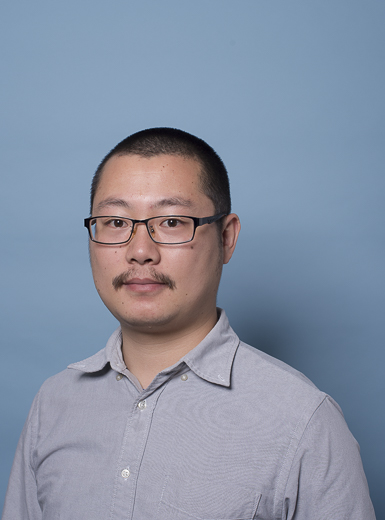
As one of the main sensor in autonomous driving, radar has great advantages over other sensors, especially its capabilities during adverse weather condition and Doppler information extraction.
Performance of the radar in terms of accuracy and target resolution strongly depends on radar waveforms transmitted and signal processing algorithms applied. To achieve high range resolution, an ultra-wideband signal has to be used for sensing, which introduces difficulties to achieve high Doppler and DOA estimation simultaneously due to the range migration. To address this problem, in this thesis new signal processing algorithms are proposed, which pave the way to improved performance of the automotive radar sensor.
As the Frequency-Modulated Continuous Wave (FMCW) radar are widely used in short-range and middle-range applications due to its low-cost and simplicity, FMCW waveform is the main research subject. The FMCW signal model is derived and analysed in Chapter 2 which for the first time takes both the range migration and wideband DOA problems into account at the same time.
The point-like moving targets are considered in Chapter 3 where their Doppler velocities are within the maximum unambiguous velocity of the radar. A novel improved MUSIC algorithm with the dynamic noise-subspace method is proposed to address both the range migration and wideband DOA problems. The algorithm releases the great potentials of the conventional MUSIC algorithm in the presence of the range migration. Moreover, an efficient algorithm based-on Rayleigh-Ritz step is introduced for the proposed method resulting in a considerable reduction of computational requirements without any performance degradation. Comparison with the conventional narrow-band MUSIC, Keystone-MUSIC, inversion-MUSIC and corresponding CRB using simulations, reveals the superiority of the method proposed in terms of accuracy, resolution and efficiency.
The problems similar to those considered in Chapter 3 but in the presence of the Doppler ambiguity are considered in Chapter 4. A spectral norm-based algorithm is proposed to address the coupling terms for a single moving point-like target. The algorithm for the first time abandons the integration-based method for ambiguous velocity estimation. The spectral-norm based algorithm provides a new tool to resolve the ambiguity problem which outperforms the conventional integration-based algorithm by avoiding the off-grid problems with limited data size. Moreover, combined with the modified CLEAN techniques and Greedy algorithm, the proposed algorithm can be extended to multiple moving targets. Furthermore, the power iteration algorithm is smartly adopted for an efficient implementation of the proposed method.
After addressing the point-like targets, the moving extended targets are studied in Chapter 5 especially when multiple extended targets cannot be separated both in range and beam profile. The Doppler difference is used to recognise them and ISAR concept is adopted to split and image the targets separately. The conventional entropy minimisation approach is applied to the signal model for not only the Fourier spectrum but also the eigenspectrum as well for the first time. The Fourier spectrum has a relatively high resolution in higher-order motion (e.g. acceleration) while eigenspectrum has a better resolution in Doppler separation. The advantages of both spectra are utilised to separate multiple extended targets by a simple but powerful combination. Via numerical simulation, the applicability of the algorithm in the automotive application is demonstrated.
Last in Chapter 6, by processing the experimental data from automotive radar, we present a novel and fast imaging algorithm for slow-moving targets which provides super-resolution on DOA. The range information is processed via FFT for efficiency while the DOA is estimated by the MUSIC algorithm for super-resolution. Since the MUSIC spectrum is pseudo-spectrum and can not represent the correct dynamic range of the imaging results, a novel normalisation method is introduced to vividly indicate the energies of different targets. In comparison with conventional FFT-BF, a cleaner range-azimuth image is obtained with the proposed algorithm demonstrating higher angular resolution and without strong side-lobes.
Although the research presented in this thesis is served for automotive application, some of the algorithms and ideas can be easily generalised for a broad spectrum of diverse applications.

PhD Thesis Defence
- Wednesday, 1 April 2020
- 15:00-17:30
Reconfigurable Range-Doppler Processing and Interference Mitigation for FMCW Radars.
Sharef Neemat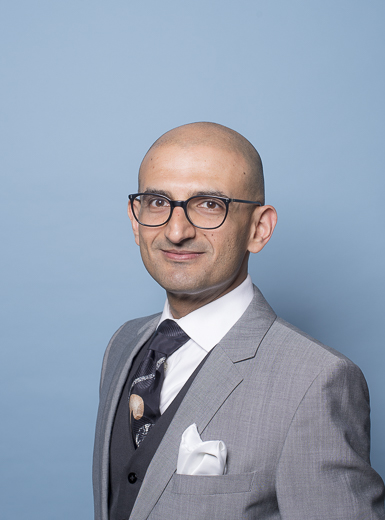
Deramping Frequency Modulated Continuous Wave (FMCW) radars with chirp-sequence waveforms are widely used in numerous applications. The research objective behind this dissertation was to develop methods and waveforms for the operational enhancement of that class of radars. This is in the sense that there was a desire to take FMCW radars beyond their existing state of the art performance limitations, and increase their resistance to interference. To achieve these objectives, the following research questions were addressed:
Is there a way to mitigate FMCW radar interferences where the developed mitigation method restores any SNR loss due to the interference and/or the mitigation technique itself? Can the method be evaluatable in performance in the range-Doppler domain (as opposed to only in a range-profile)?
Is there a way to decouple the Doppler velocity ambiguity interval -- defined by the PRF -- from parameters like the maximum operational range, range resolution, all while maintaining the same transmitted chirp-rate? Would it be possible to liberate the radar from the design/operational trade-offs associated with these parameters? Particularly in the scenario in which the PRF is to be increased for the observation of fast(er) moving targets.
Is there a way to overcome the existence of the transient (fly-back) region in deramping FMCW radar beat-signals? This is in the sense that its existence limits the maximum observation time in a single sweep. Would manoeuvring it then allow the coherent chaining of beat-signals -- from multiple sweeps -- in a way that could improve the {target response function width}? {Could it also improve the SNR}? And since the beginning of a sweep and the transient region are related -- and therefore the Doppler velocity ambiguity interval is related too in de facto -- could overcoming the presence of the transient region then allow for Doppler processing PRFs that are different from the transmitted PRF?
The novelty, main results and implications of the research presented are:
• A method was developed to mitigate FMCW radar interferences. The method restored any SNR loss due to the interference, and was evaluatable in performance in the range-Doppler domain (as opposed to only in a range-profile). It was {the first ever} interference mitigation method for deramping FMCW radar receivers via {model-based} beat-signals interpolation in the time-frequency domain. It allowed the introduction of an optional linear prediction interpolation coefficients reconfigurable estimation mode for CPI processing. Coefficients are estimated for the current observation scene using a known single interference-free sweep. These coefficients are then reused for the restoration of subsequent interference-contaminated sweeps in the CPI. It was also suitable for real-time implementation, with a predictable execution delay (latency), based on FT banks and fixed-length extrapolation filters, as opposed to iterative methods relying on algorithm convergence. The evaluation of the method's performance was done in the range-Doppler domain. The aim was to additionally showcase the maintenance of the radar's coherence over a CPI after interference mitigation.
• A method was developed to decouple the Doppler ambiguity interval -- defined by the PRF -- from parameters like the maximum operational range and range resolution, all while maintaining the same transmitted chirp-rate. It was the first ever processing method for the coherent integration of frequency multiplexed chirps within one sweep/PRI -- for deramping FMCW radar in the time-frequency domain. It constructed a single fast-time slow-time matrix -- with an extended Doppler ambiguity interval, while maintaining the range resolution and CPI processing gain -- in one go. It did not use iterative algorithms with unpredictable latencies, nor requires any detection or a-priori information about the observed scene, and is applicable to very-extended targets like rain/clouds.
• A method was developed to overcome the existence of the transient (fly-back) region in FMCW radar. It was the first ever method for deramping FMCW radar sweeps coherent concatenation in the time-frequency domain. It allowed for {target response function width} improvement without transmitting additional bandwidth. It offered the ability to -- in parallel -- generate different size fast-time slow-time matrices, and allowed for Doppler processing PRFs that are different from the transmitted PRF, without compromising on the total CPI processing gain. This offered the ability to observer different unambiguous Doppler velocity intervals in one CPI.
MS3 seminar
- Friday, 13 March 2020
- 15:00-16:00
- EWI Timmanzaal
Unambiguous Recovery of Multistatic SAR Data for Nonzero Cross Track Baseline Case
Ozan Dogan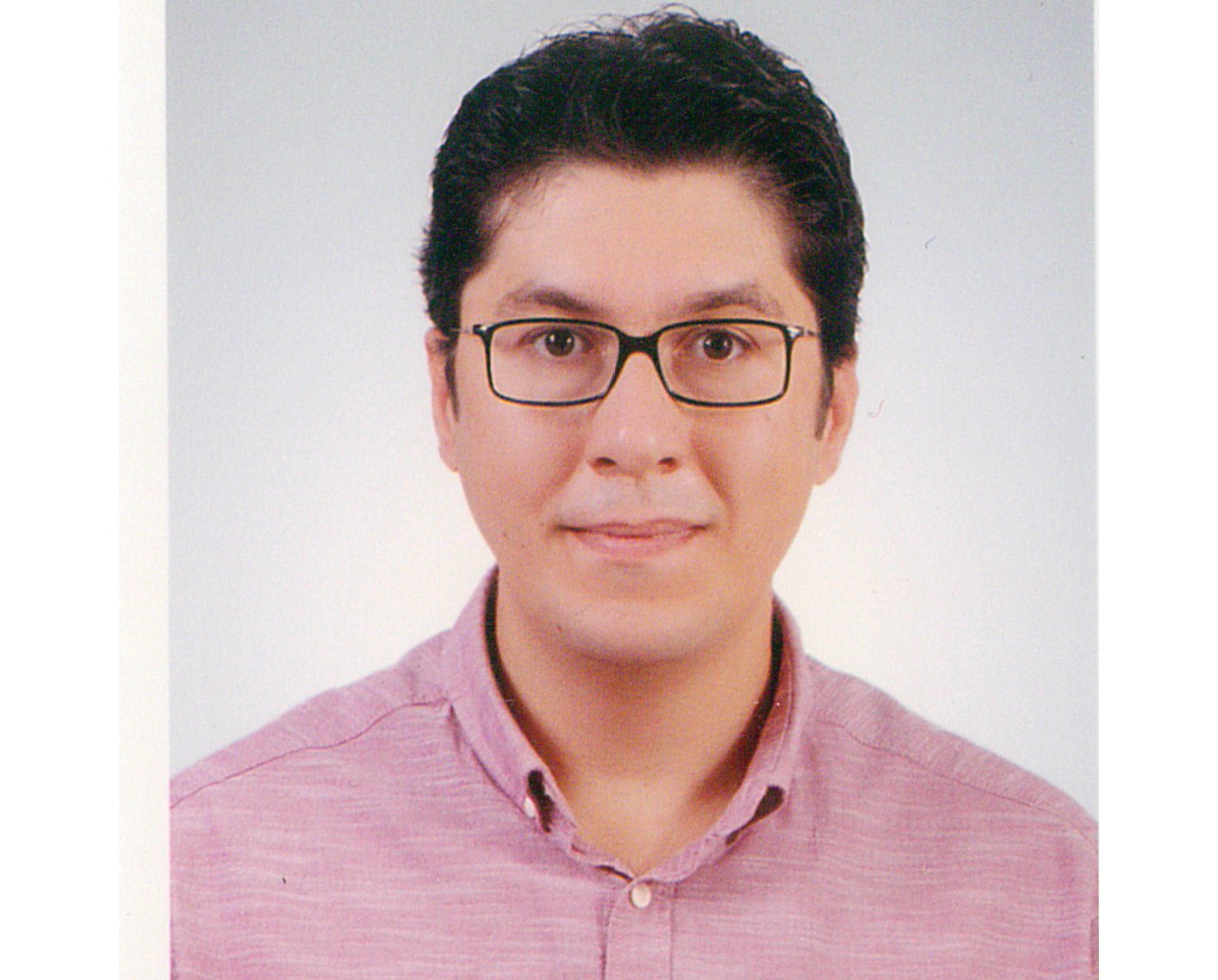
A wide-swath synthetic aperture radar (SAR) image is known to be achievable by merging multistatic aliased data that is collected with an appropriate along track displacement. However, in terms of both flexibility requirements like potentiality of both along track and cross track (XT) interferometry and design requirements like orbital safety etc., a cross track baseline is not only demanded but also unavoidable. In this work, a method is proposed in order to merge SAR data to recover the Doppler spectrum unambiguously for the non zero XT baseline case. The algorithm is compared and validated by simulating an azimuth invariant multistatic SAR satellite constellation. The results are promising in terms of dealing with XT baselines.
Additional information ...
MS3 seminar
- Friday, 6 March 2020
- 15:00-16:30
- HB 09.150
Multi-modal perception at the TU Delft Intelligent Vehicles group
Julian Kooij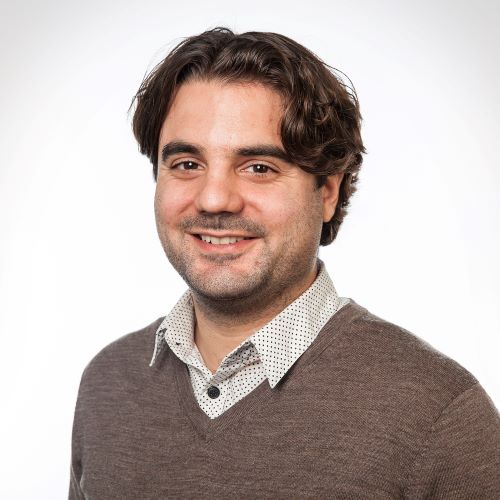
In my talk, I will introduce research on multi-modal perception at the Intelligent Vehicles group, part of the Cognitive Robotics department at the 3mE faculty.
After a short overview of the group, the presentation will present our vehicle demonstrator: a Toyota Prius equipped with radars, stereo camera, lidar, and even microphones. The demonstrator is used for data collection, and for testing real-time perception, planning and control with on-board computers.
Finally, I will present the research from our PhD students’ on environment perception using various sensor modalities, and videos of the methods running on our own vehicle, including demonstrations of fully autonomous driving tasks.
MS3 seminar
- Friday, 28 February 2020
- 13:30-15:00
- HB 09.150
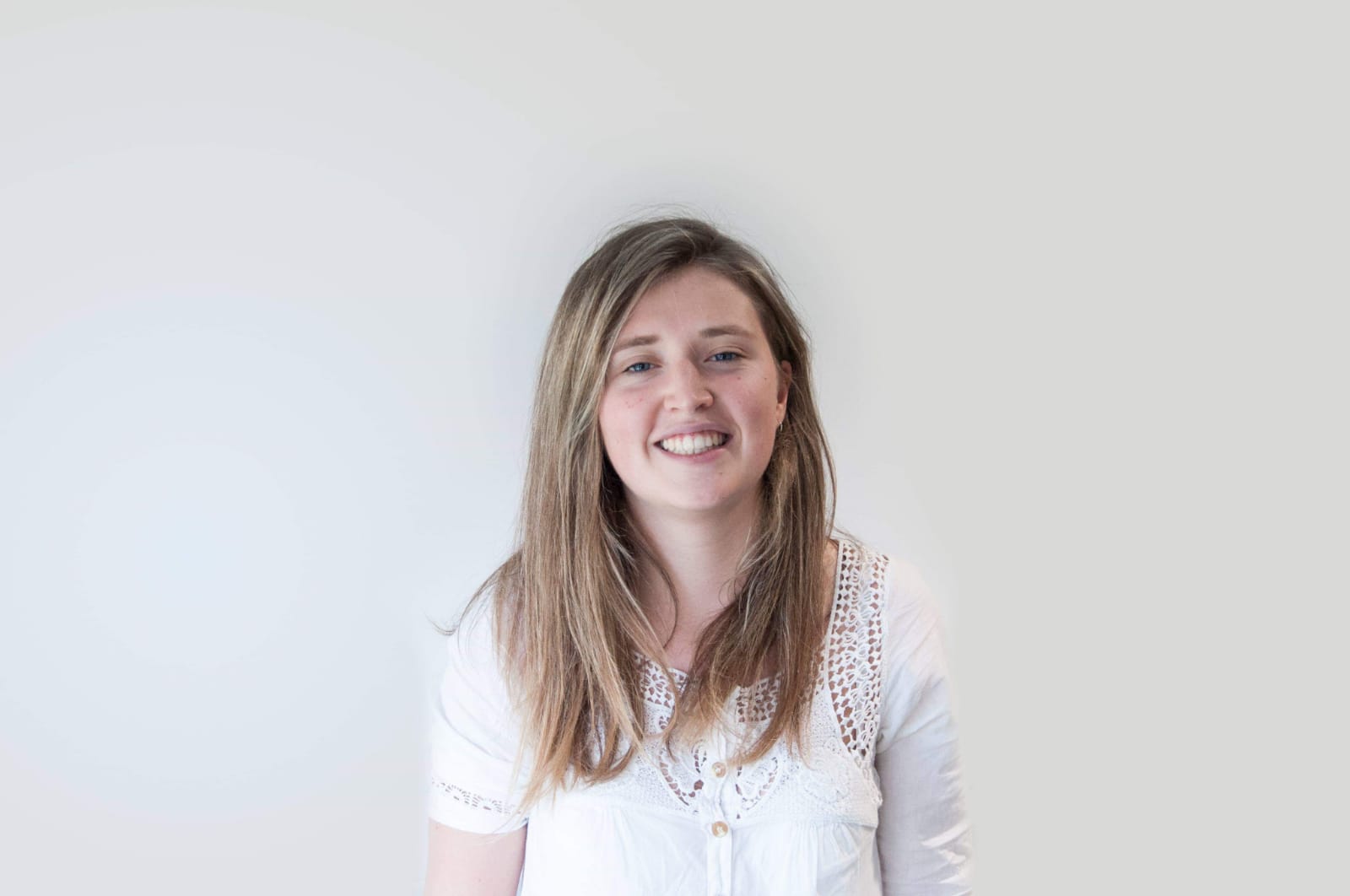
My name is Hannah Garcia-Doherty and I am an Advanced Development Engineer at Thales Nederland. I work on radar research and development, mainly involving radar signal processing and algorithm design, for example for target classification tasks.
In my talk I will present my research project published at the European Radar Conference 2019. In this work I built a Generative Adversarial Network (GANs) and trained it with micro-Doppler radar data, which revealed how well GANs (and some other network variants) can learn specific target features, without giving the algorithm any prior knowledge of the type of target.
Personally, I am quite an advocate of outreach science communication… so even if you are not familiar with deep learning, in this talk I will explain my paper in a comprehensible manner which will hopefully be understandable for all, regardless of the specific background of the audience.
Microelectronics colloquium
- Thursday, 27 February 2020
- 15:30-17:00
- EEMCS, Restaurantzaal
Radar; Compressive Sensing, Information Geometry and Neural Networks in Radar /Radar – Old but gold
Radmila Pribić (Thales/TUD), Francesco Fioranelli (TUD)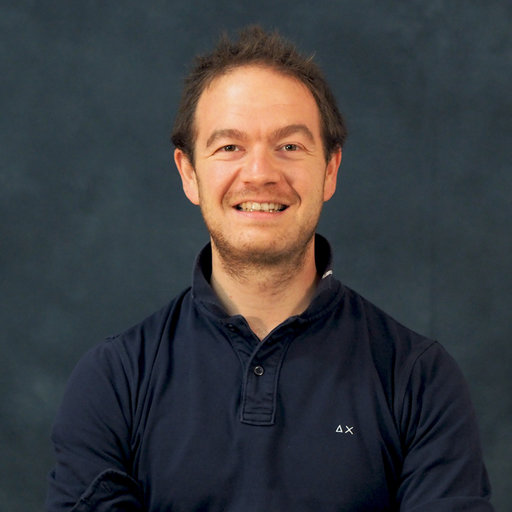
Abstract Radmila Pribić
Radar; Compressive Sensing, Information Geometry and Neural Networks in Radar
Compressive Sensing (CS) is a recent paradigm in sensing (since 2006) that works with fewer data because it is optimized to information in data rather than to the sensing bandwidth only. Most promising benefits of CS in radar are fewer data, high resolution and multi-target analysis.
Information geometry (IG) is an approach to stochastic signal processing (since the eighties) whose most promising benefits have been found in using information distances for resolution bounds, parameter estimation and analysis of accuracy and detection.
Neural networks (NNs) provide mighty numerical tools for learning radar-sensing models directly from data. IG and CS work naturally with NNs in the probabilistic inferences.
The mixture of CS, IG and NNs enables an elegant and straightforward framework for optimizing the demands of data acquisition and signal processing in radar.
Abstract Francesco Fioranelli
Radar – Old but gold
On the birthday cake for Radar we put this year 116 candles – it was indeed in 1904 that German engineer Christian Hülsmeyer publicly demonstrated for the first time radar technology to detect ships even in foggy conditions from a bridge in Köln (Cologne). However, research in sensing using transmitted and received electromagnetic signals is still enjoying exciting developments, as detecting and recognising objects at large distances and in all weather conditions is still a significant need today in aviation, navigation, autonomous systems, security.
One of these recent developments is the combination of modern artificial intelligence with radar based classification, to make our radar systems more capable, intelligent, autonomous. In my talk I will present some recent results and outstanding challenges from research activities in my previous post at the University of Glasgow and those planned and started here at TU Delft. Specifically, I will discuss applications of radar imaging (micro-Doppler signatures but not only) to the domain of human activities/gait identification in the context of healthcare, and classification of small Unmanned Aerial Vehicles (drones), relevant in security/defense context.
Additional information ...
.png)
MS3 seminar
- Wednesday, 26 February 2020
- 15:00-16:00
- EWI Timmanzaal
Unambiguous Recovery of Multistatic SAR Data for Nonzero Cross Track Baseline Case
ozan dogan
A wide-swath synthetic aperture radar (SAR) image is known to be achievable by merging multistatic aliased data that is collected with an appropriate along track displacement. However, in terms of both flexibility requirements like potentiality of both along track and cross track (XT) interferometry and design requirements like orbital safety etc., a cross track baseline is not only demanded but also unavoidable. In this work, a method is proposed in order to merge SAR data to recover the Doppler spectrum unambiguously for the non zero XT baseline case. The algorithm is compared and validated by simulating an azimuth invariant multistatic SAR satellite constellation. The results are promising in terms of dealing with XT baselines.
MS3 seminar Hannah Garcia-Doherty (Thales)
- Thursday, 20 February 2020
- 14:00-15:00
- EWI Timmanzaal

My name is Hannah Garcia-Doherty and I am an Advanced Development Engineer at Thales Nederland. I work on radar research and development, mainly involving radar signal processing and algorithm design, for example for target classification tasks. In my talk I will present my research project published at the European Radar Conference 2019. In this work I built a Generative Adversarial Network (GANs) and trained it with micro-Doppler radar data, which revealed how well GANs (and some other network variants) can learn specific target features, without giving the algorithm any prior knowledge of the type of target.
Personally, I am quite an advocate of outreach science communication… so even if you are not familiar with deep learning, in this talk I will explain my paper in a comprehensible manner which will hopefully be understandable for all, regardless of the specific background of the audience.
MSc TC Thesis Presentation
- Thursday, 30 January 2020
- 10:00-12:00
- HB 09.150
Conformal Phased Array for DISTURB
Wietse Bouwmeester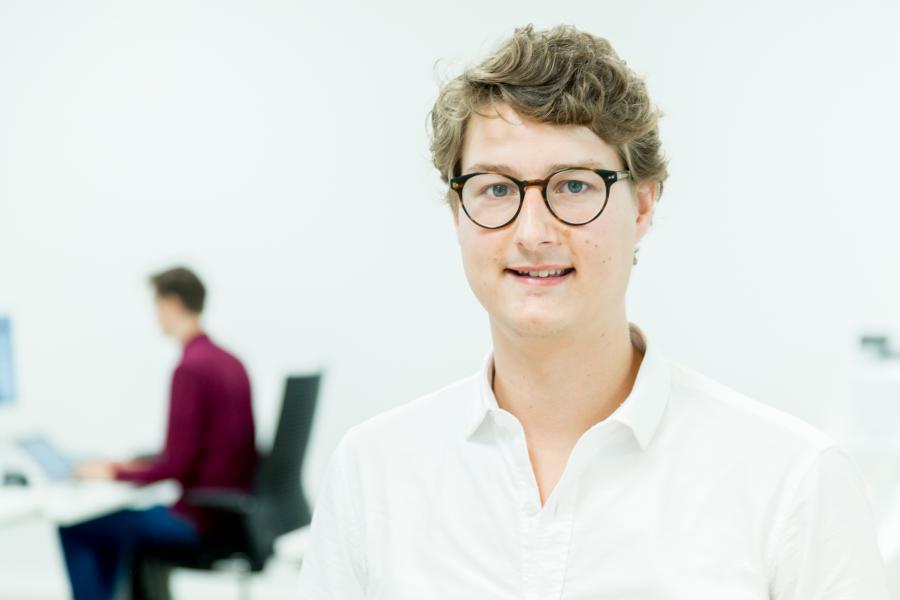
Mankind becomes ever more reliant on wireless technology like mobile communications, navigation and radar. This development has resulted in more sensitive receivers, but this increased sensitivity also has increased the susceptibility of these receivers to interference from external sources. One of these sources that is known to disrupt terrestrial communications is the Sun.
The DISTURB project aims to provide the means to observe and study interference phenomena generated by the Sun between frequencies of 10 MHz and 3 GHz. Furthermore, DISTURB stations should provide the ability to observe the Sun from sunrise to sunset, at any location in the world and thus require full hemispherical coverage.
This master thesis project is concerned with the design of a conformal phased array antenna for a novel application in radio astronomy. The goal of this project is to provide an initial conformal array design that is able to provide full hemispherical coverage in the 1500 MHz to 3 GHz band of the DISTURB project.
A quasi-spherical array of radius 1.55 metres and with 343 crossed modified bow-tie antenna elements, distributed using a novel geodesic topology, is proposed and found to satisfy DISTURB requirements in the frequency range of 1.3 to 3 GHz. Hence, the designed array is found to achieve a fractional bandwidth of 79% and therefore even exceeds the initial design goal.
Finally, the designed array is compared to a parabolic reflector antenna, resulting in an insight in the complexity of a conformal phased array antenna design and the advantages and disadvantages such a conformal phased array antenna may bring to the DISTURB project.
MSc TC Thesis Presentation
- Wednesday, 22 January 2020
- 09:30-12:00
- HB 09.150
Localization of Autonomous Vehicle using 1D Automotive Radar Sensor
Robin van Gaalen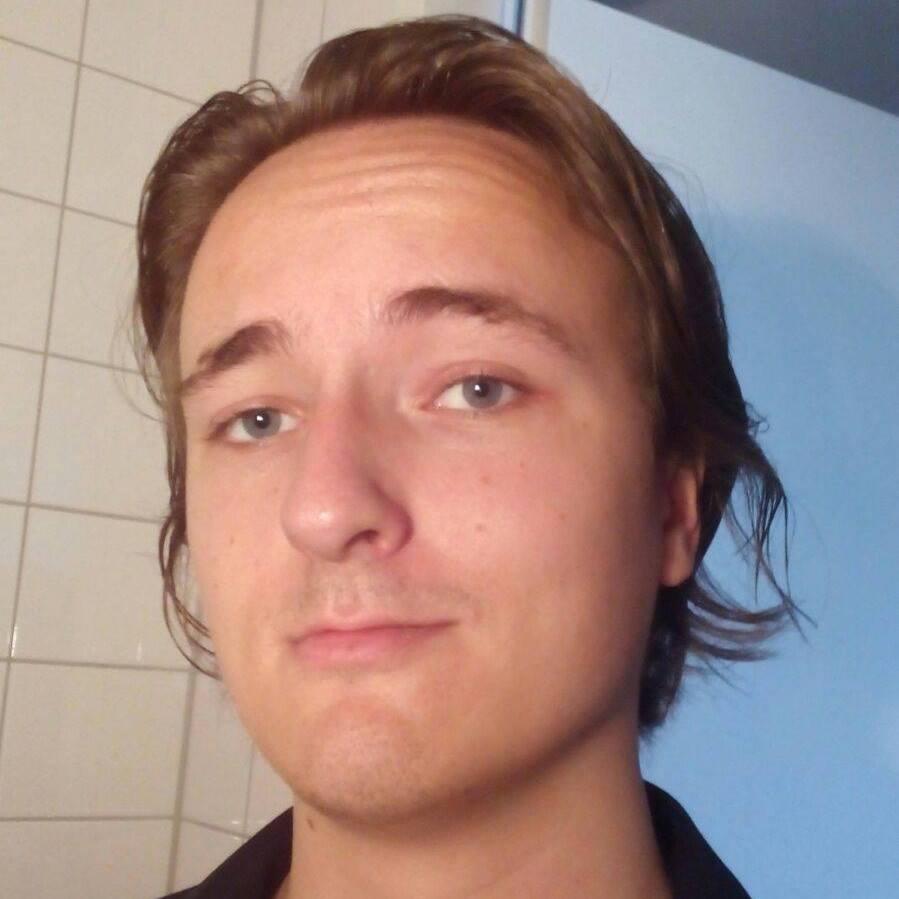
The overall purpose of this study is to establish novel methods of vehicle localization and mapping using a 1D linear automotive radar array in conjuncture with pre-existing lidar maps,and to test if the generated radar map can be made to be 3 dimensional. The reason for creating a novel localization method was to try and alleviate some of the weaknesses of existing localization techniques, such as GPS'(Global Positioning System)inability to localize in tunnels and other large structures, or lidar based positionings' low quality of service in certain weather conditions.
The basic design of this study was to implement a SLAM(Simultaneous Localization And Mapping) system that co-registers radar data to radar data, and to then attempt to register radar data to lidar data, all taken from experiments with cars with these sensors driving around the TU Delft campus.
After the execution of experiments, both on simulations and on real world data, it was established that it is in fact possible to localize the car by relating observed radar data to premade lidar maps, and to continually add to a cumulative map made with the radar data that can further aid the localization process.
Furthermore, it can be observed that the radar map created using the 1D linear automotive array can be made to be 3D, though more experiments to establish the full potential of this capability are recommended.
MS3 seminar
- Friday, 17 January 2020
- 15:30-17:00
- LB 01.220 (van der Poelzaal)
Coded-Radar for Interference Suppression in Super-Dense Environments
Utku Kumbul
Millimeter-wave radar belongs to key sensors in any modern advanced driver assistant system (ADAS). As the automotive radar market increases, present automotive radar sensors suffer from radar-to-radar interference between multiple cars due to sharing limited spectrum. The mutual interference degrades the functionality of the radar systems and increases the chance of miss detection. The detection and tracking of objects, especially that have low radar cross sections such as pedestrians, are very critical in autonomous driving system and hence it is important to effectively mitigate mutual interference from radar signal. In the framework of the project entitled Coded-Radar for Interference Suppression in Super-Dense Environments (CRUISE), we are working on implementation of phase-coding (PC) for frequency modulated continuous wave (FMCW) radar to improve radar coexistence. During the seminar, the challenges of using PC-FMCW and related research outputs will be discussed.
Additional information ...

Development of custom multi-band LTE antenna for telemetric application
- Monday, 9 December 2019
- 14:00-15:00
- HB 09.150 Vassiliadiszaal
Development of custom multi-band LTE antenna for telemetric application
Kees HogenhoutThe final goal of this thesis is to figure out if it is possible to design an eight-band LTE antenna for <$0,20 with the same performance, quality and tunability as the current available eight-band LTE antennas. In the introduction the state of the art is presented where the most common currently available comparable antennas and modules are explored. Based on the state of the art, the requirements for the new antenna are set, consisting of a low band of 698-960MHz, a mid band of 1710-2170MHz and a high band of 2496-2690MHz. Based on this the solution is presented and finally 3 antennas are suggested. Antenna I shares the same mid and high band, but operates from 698-894 MHz, while antenna II operates from 805-960MHz due to limitation on the original antenna topology. The third antenna includes a meandered arm for the low band which adds a resonance peak at 960MHz and in this way the bands requirement is met. The antenna was synthesized in two designs and the second design still needs an experimental verification. It was concluded that with the given requirements it is possible to design an antenna for below $0,20, but a more in depth experimental verification is needed to check if all the requirements were met.
PhD Thesis Defence
- Tuesday, 19 November 2019
- 14:30
- Aula Senaatszaal
Capacitively-Coupled Bridge Readout Circuits
Hui Jiang
This Ph.D. dissertation describes the design and realization of energy efficient readout integrated circuits (ROICs), that have an input referred noise density < 5 nV/√Hz and a linearity of < 30 ppm, as required by Wheatstone bridge sensors used in precision mechatronic systems. Novel techniques were developed, at both the system-level and circuit-level, to improve the ROIC’s energy-efficiency, while preserving its stability and precision. Two prototypes are presented, each with best-in-class energy efficiency, to demonstrate the effectiveness of the proposed techniques.
Additional information ...

PhD Thesis Defence
- Monday, 11 November 2019
- 12:00-14:30
- Aula Senaatszaal
High-Speed Interfaces for Capacitive Displacement Sensor
Sha XiaThis thesis describes the theory, design, and implementation of high-speed capacitive displacement sensor interface circuits. The intended application is to readout the capacitive displacement sensor used in a servo loop, where the measurement time needs to be low to ensure loop stability. The work employs baseline-capacitance cancellation technique to reach a high energy-efficiency and high conversion speed.

MS3 seminar
- Friday, 25 October 2019
- 14:00-16:00
- Vassiliadiszaal (HB 09.150)
Reconfigurable Range-Doppler Processing and Range Resolution Improvement for FMCW Radar
Sharef Neemat
Abstract: “ In this seminar I will present a reconfigurable range-Doppler processing method for FMCW radar by concatenating beat-frequency signals from more than one sweep. As a result, continuous targets’ observation time is extended beyond that of a single chirp duration, leading to range resolution improvement. The created continuous beat frequency signal can be split in the digital domain to any twodimensional slow-time fast-time matrices with the same number of elements as in the original signals, which offers a realization of a software defined pulse/sweep repetition rate in Range-Doppler processing. The signal concatenation is done in the Short-time Fourier Transform (STFT) domain, where beat-frequency slices are extrapolated to compensate for the observation time lost in the transient region between sweeps, then a phase correction is applied to each frequency-slice as appropriate, followed by an Inverse STFT (ISTFT). The proposed technique is verified with simulation and experiments with an FMCW radar for stable and moving target scenarios. We found that the method allows for range resolution improvement without the transmission of additional bandwidth, and allows for the ability to observe different resolution granularities in parallel from one CPI. It additionally allows the decoupling of the transmitted PRF from the Doppler processing PRF, permitting the facility to observe different unambiguous Doppler velocity intervals from one CPI, without compromising on the total CPI processing gain”
Additional information ...
Master thesis defence
- Wednesday, 23 October 2019
- 13:30-16:00
- Vassiliadiszaal (HB 09.150)
“Robust Feature Extraction Algorithm for analysis of Radar Targets using Multi-Object Tracking on Range Doppler Space”
Nagesh, Saravanan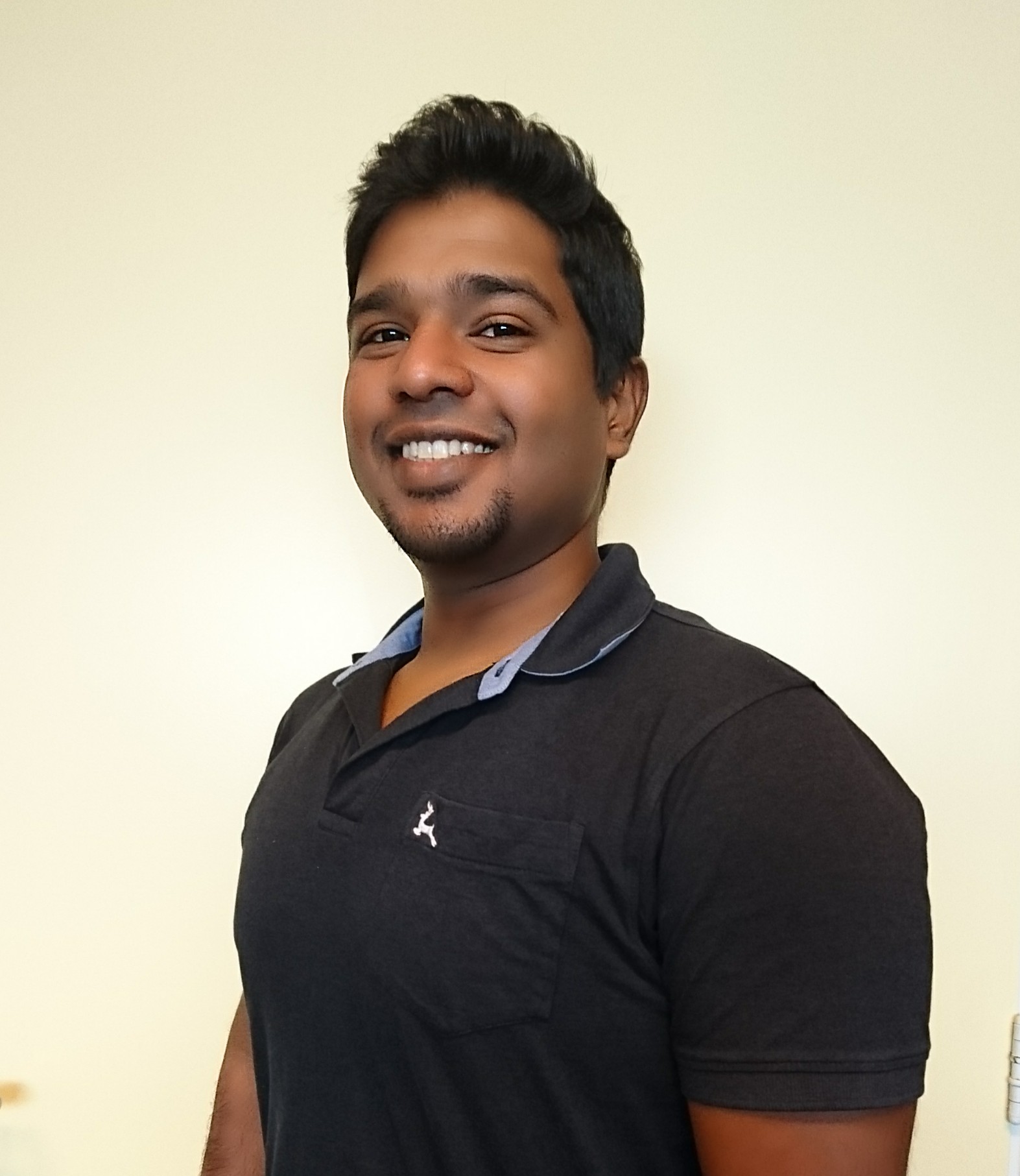
In this thesis, we propose, a Robust data extraction algorithm capable of extracting reliable target features of multiple moving targets of different classes over all channels of a S Band Doppler Polarimetric Radar – PARSAX. The proposed algorithm is capable of generating a time series data by tracking, clusters of detections - representing extended targets using a multi target tracker modified to track on sequential frames of Range Doppler Maps .The targets considered in this study are Automobiles of different classes (4 wheel drive and above). A performance analysis of the algorithm, for data extraction possibility with respect to target density has been presented. In addition the possibility to use the extracted features for Radar Classification has been investigated.
MS3 seminar
- Wednesday, 16 October 2019
- 15:30-18:00
- Snijderzaal
Ultra Wide Band Surveillance Radar
Dr. Mark E. Davis, IEEE Fellow, IEEE Distinguished LecturerIEEE
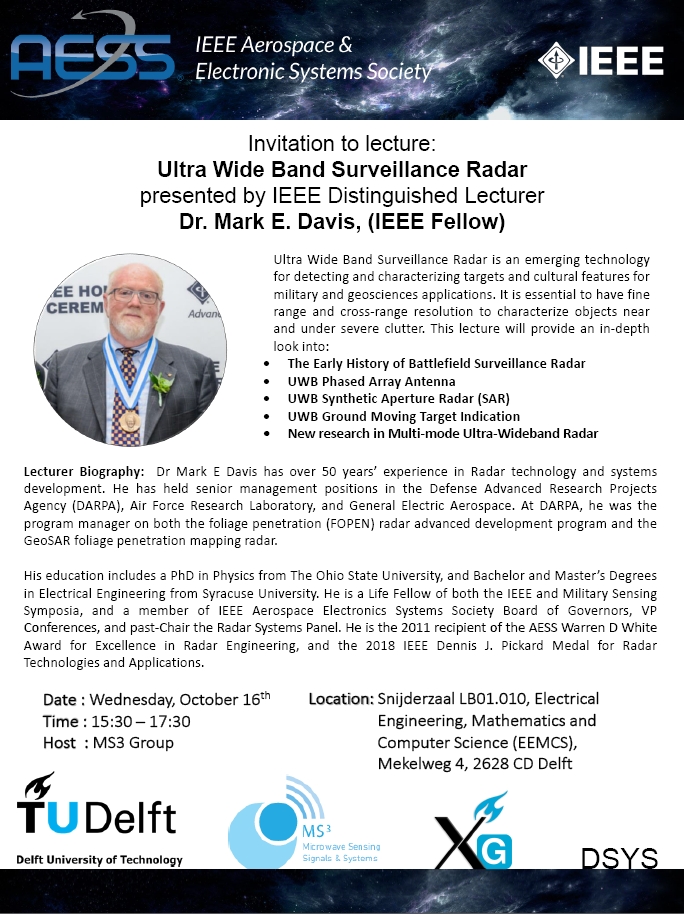
Ultra Wide Band Surveillance Radar is an emerging technology for detecting and characterizing targets and cultural features for military and geosciences applications. It is essential to have fine range and cross-range resolution to characterize objects near and under severe clutter. This lecture will provide an in-depth look into:
- The early history of battlefield surveillance radar
- UWB phased array antenna
- UWB Synthetic aperture radar (SAR)
- UWB ground moving target indication
- New research in multi-node ultra wind band radar
Lecturer Biography: Dr Mark E Davis has over 50 years’ experience in Radar technology and systems development. He has held senior management positions in the Defense Advanced Research Projects Agency (DARPA), Air Force Research Laboratory, and General Electric Aerospace. At DARPA, he was the program manager on both the foliage penetration (FOPEN) radar advanced development program and the GeoSAR foliage penetration mapping radar.
His education includes a PhD in Physics from The Ohio State University, and Bachelor and Master’s Degrees in Electrical Engineering from Syracuse University. He is a Life Fellow of both the IEEE and Military Sensing Symposia, and a member of IEEE Aerospace Electronics Systems Society Board of Governors, VP Conferences, and past-Chair the Radar Systems Panel. He is the 2011 recipient of the AESS Warren D White Award for Excellence in Radar Engineering, and the 2018 IEEE Dennis J. Pickard Medal for Radar Technologies and Applications.
Master thesis Defence
- Wednesday, 16 October 2019
- 13:00-15:30
- Snijderszaal
STEREOID data processor: Design and Performance analysis
Prithvi Laguduvan Thyagarajan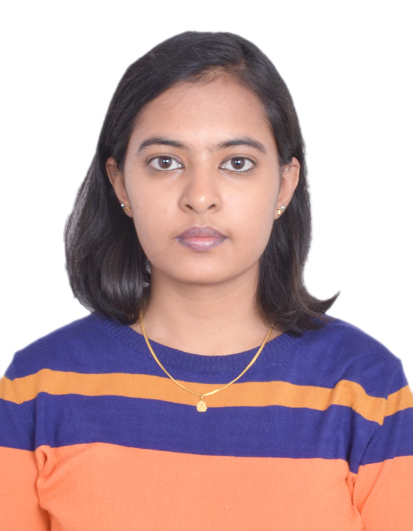
Abstract: Stereo Thermo-Optically Enhanced Radar for Earth, Ocean, Ice, and land Dynamics (STEREOID) is one of the candidates of the ESA (European Space Agency) , Earth Explorer 10 missions. The novel constellation system will consist of the active Sentinel-1 satellites and two passive spacecrafts, which can provide flexible baseline configurations. The main objective of the mission liesin monitoring the variation of spatially diverse ice sheets, the eruptions of earthquakes, the volcano activities, and the landslides, playing therefore an extremely important role in understanding the global climate dynamics and the geophysical processes involved. The purpose of the thesis is to develop an end-to-end simulator incorporating the STEREOID bistatic configuration operating in TOPS ( Terrain Observation by Progressive Scans) mode and evaluate its performance. To achieve this goal, the key component of the simulator, the SAR (Synthetic Aperture Radar) processing kernel was first implemented. The kernel employs an imaging algorithm which assists in image formation and focusing for different bistatic geometries generated by relevant working modes of the STEREOID mission. This is further extended to bistatic TOPS acquisition mode with azimuth beamforming under dual antenna receiver configuration of STEREOID. The performance of STEREOID mission is evaluated under different bistatic geometries and the dual beamforming strategy is evaluated for parameters such as resolution, pointing errors and gain imbalances. This is evaluated to analyse and understand the importance of calibration errors introduced into the system.
MS3 seminar
- Monday, 23 September 2019
- 14:00-15:00
- EWI Timmanzaal
Trial presentations for European Microwave Week in Paris
Yanki Aslan
1) Presentation in the Workshop: "Integration and multi-physics challenges in 5G mm-wave system design" organized by Chalmers University of Technology and Ericsson. Title: Thermal-Aware Multi-Beam Antenna Synthesis in 5G Abstract: Compact 5G antenna system designs in mm-wave frequency bands require the use of highly dense transceiver chips that include DACs/ADCs, PAs, LNAs, PLLs, Tx/Rx switches, filters and so on. The power dissipated by all these components (mostly by the inefficient PAs) makes cooling a significant issue. Besides, the highly-packed front-end circuitry at mm-waves makes integration of the cooling systems challenging. Furthermore, high-volume 5G market favors a fully-passive, easy to maintain and low-cost cooling solution to be employed at the base stations. In this talk, phased array cooling strategies will be revisited with a special focus on the design challenges at mm-waves. The advantages and disadvantages of using passive CPU coolers at the 5G base stations will be discussed. A multidisciplinary study, modeling and dual goal function optimization for both electromagnetic and thermal control performance of multi-beam arrays for future 5G base stations will be presented. Sparse arrays with interference-aware layouts and thick ground plane arrays with enhanced heat conduction capabilities will be introduced as potential cooling solutions for further passive heat removal at the active integrated antennas. 2) Poster presentation Title: Passive Cooling of mm-Wave Active Integrated 5G Base Station Antennas Using CPU Heatsinks Abstract: The challenge of cooling in mm-wave chip-integrated base station antenna arrays is addressed. Several approaches in thermal modeling of electronics are revisited and discussed. The two-resistor compact thermal model is applied to predict the junction temperatures of the beamformer chips. Thermal simulations are performed for two fabricated arrays having 16 chips (single-polarized) and 32 chips (dual-polarized). Two commercial passive CPU heatsinks with different capabilities are modeled and attached to the chips. The simulation results are validated through experiments using the temperature sensor readings. The reasons of discrepancies between the simulated and measured results are explained. 3) Oral presentation of S. Salman's Master thesis work Title: System Modeling and Simulation in 5G: A Hybrid Beamforming Approach With Power Flux Equalization in the Elevation Plane Abstract: This paper presents a 5G downlink system model for a hybrid multi-user beamforming technique at the base station. The presented technique employs power flux equalization in the elevation plane using a fixed analog cosecant-shaped beam and digital beamforming in the azimuth plane. The system performances of various beamforming algorithms are investigated via Monte-Carlo simulations by creating simultaneous co-frequency beams towards the randomly-located users. The simulation results show that the proposed cosecant subarray hybrid beamforming statistically performs better than the state-of-the-art hybrid beamforming techniques and provides reduced complexity.
Additional information ...
MS3 seminar
- Thursday, 19 September 2019
- 11:00-12:30
- HB 01.230 (Elektron)
Simulation of Radar Micro-Doppler Patterns for Multi-Propeller Drones and Radar Recognition of Multi-Propeller Drones using Micro-Doppler Linear Spectra
Oleg Krasnov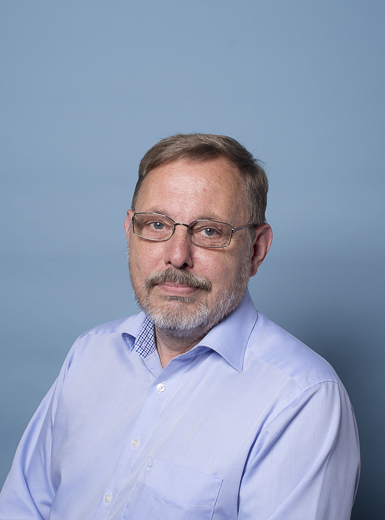
RADAR – 2019 conference in Toulon, France (23-27.09.2019): Yefeng Cai, Oleg Krasnov, Alexander Yarovoy “Simulation of Radar Micro-Doppler Patterns for Multi-Propeller Drones” Abstract: Presents an electromagnetic (EM) model of multi-propeller drone that generates drone micro-Doppler pattern efficiently as a function of radar parameters and propeller properties. Experimental results of propeller micro-Doppler pattern measured in anechoic chamber was investigated and used to validate the results produced by thin-wire model of single propeller in S-band and X-band. Then the thin-wire model was expanded to multi-propeller drones and reproduced linear micro-Doppler patterns of multi-propeller drone measured by radar system in long Coherent Processing Interval (CPI) circumstance. The model-based replica was shown to be useful in radar micro-Doppler analysis of multi-propeller drones, especially to study the influence of propellers synchronisation and in long CPI circumstances. EuRAD – 2019 conference in Paris, France (02-04.10.2019): Yefeng Cai, Oleg Krasnov, Alexander Yarovoy “Radar Recognition of Multi-Propeller Drones using Micro-Doppler Linear Spectra” Abstract: We propose to perform radar recognition of multi-propeller drones using micro-Doppler linear spectral pattern in long Doppler coherent processing interval (CPI) circumstances. It focuses on the investigation of the influence of geometry design and motion variables, such as blade number, blade shape, drone’s design geometry and propeller synchronisation, on the micro-Doppler spectral pattern. We propose suitable scalar features for the characterisation of these patterns measured within a long (relatively to propellers rotation period) CPI. A thin-wire model was used to simulate drones micro-Doppler spectra for various input variables. Proposed features are extracted from the simulated micro-Doppler spectra for further processing in a support vector machine (SVM), with the purpose of demonstrating the radar recognition of multi-propeller drones based on these features. Both presentations are based on results of Yefeng Cai’s MSc project.
Additional information ...

Master thesis defence
- Friday, 30 August 2019
- 13:30-15:30
- HB 13.100
Deep Learning-based identification of human gait by radar micro-Doppler measurements
Vasileios Papanastasiuo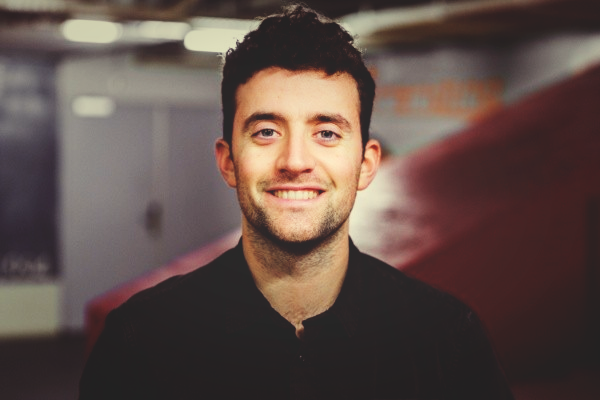
The radar micro-Doppler (m-D) signature of human gait has already been used successfully for a few classification tasks of human gait, for instance walking versus running and determining the number of humans under observation. How ever, the more challenging problem of personnel identification has not been solved yet. The aim of this study is to prove that the human walking gait differs between individuals and that it can be used for personnel identification using CW X-band radar measurements. This study investigates the effect of human walking gait characteristics such as speed and stride as well as the gender on leading to distinctive m-D signatures. Both simulated data and measurements of 22 subjects walking from and towards the radar were used. Unsupervised learning based on Adversarial Autoencoders was used to map the m-D signatures to a latent space. TDistributed Stochastic Neighbor Embedding and Uniform Manifold Approximation and Projection were then used for clustering and visualization. This study shows that even very slight changes in the walking gait characteristics mentioned above lead to distinctive m-D signatures mapped into closely located points in the latent space. A VGG-16 convolutional neural network was used to identify the walking subjects based on their measured m-D signature. Accuracy of above 93.5% was achieved, proving that CW X-band radar m-D signature of human walking gait can be used for accurate personnel identification which is reliable for 22 participants.
Master thesis defence
- Friday, 30 August 2019
- 10:00-12:00
- HB 13.100
A X-Band Patch Antenna Array with Low Cross-pol for Weather Radar Applications
Vizcarro, Marc
Meaningful dual-polarized radar estimations suitable for radar meteorology require a cross-polarization discrimination (XPD) and isolation (XPI) in excess of 30 dB to reach a differential reflectivity accuracy of 0.1 dB. A planar dual-polarized patch antenna array featuring low cross-polarization is presented meeting this requirement via a simple implementation of imaged feeding and candidates as a cost-effective active electronically steerable array (AESA) for short-range X-band weather radars. In this M.Sc. Thesis a 4x4 sub-array tile has been conceived, designed, manufactured and validated. Using a feed rotation technique and carefully designing a feeding network, high isolation and low cross-polarization suppression are achieved up to scanning in elevation. Through this initial prototype, a low-cost AESA concept has been demonstrated, a crucial step that will enable further advancements leading to the final array design for Weather Radar applications at Fraunhofer FHR.
Master thesis defence
- Thursday, 29 August 2019
- 10:00-12:00
- Vassiliadiszaal (HB 09.150)
Super-resolution Algorithm for Target Localization using Multiple FMCW Automotive Radars
Jiadi Zhang
Master thesis defence
- Wednesday, 28 August 2019
- 13:30-15:30
- Timmanzaal (LB 01.170)
Detection of vital signs of auto driver and passengers using (distributed) radars inside auto
Guigeng Su
Master thesis defence
- Monday, 26 August 2019
- 11:00
Multiple-input Multiple-output Grating Lobe Selection Scheme for Radar Applications
Nick Cancrinus
Master thesis defence
- Friday, 23 August 2019
- 10:00-12:00
- Vassiliadiszaal (HB 09.150)
Multi-Channel Waveform Agile Radar: Experimental performance evaluation of Advanced Space-Time Adaptive Processing (ASTAP) radar system
Ahmed, Sheeraz
Recent advancements in Multiple Input Multiple Output (MIMO) radar techniques has created a paradigm shift in the overall radar technology to increase degrees of freedom in multi-function radar capabilities. The underlying principle of MIMO transmissions is to use colored transmission by simultaneously radiating specific waveforms from each antenna elements/sub-arrays in different directions to achieve ‘space-time coding’. This can be explained as colored spatial distribution (multiple coded beams to probe the radar environment) instead of the white spatial distribution (single wide beam), such that the transmitted signals are now function of time as well as space. Recently, a novel multi-channel waveform agile demonstrator namely ASTAP (Advanced Space-Time Adaptive Processing) radar system has been designed and developed in Microwave Sensing, Signals and Systems (MS3) group, capable of generating and transmitting independent arbitrary waveforms specific for each transmit channel simultaneously . It consists of eight transmit channels with a single receive channeland hence can also be called as co-located Multiple-Input Single Output (MISO) radar. However, the transmission of different coded waveforms with a radar system such as ASTAP demonstrator requires that the desired measurements exclude the unwanted system response as much as possible. This includes waveform amplitude distortion, RF channels cross-talk and phase-misalignment, microwave components gain/phase variations and antenna mutual coupling. These effects can disturb the transmission signal waveforms and the orthogonality between them severely. For system performance analysis and beamforming applications, Over-the-Air (OTA) measurements have been done to eliminate the ASTAP system response significantly and obtain the near-ideal waveform responses. Furthermore, it is investigated that to what extent it is possible to separate signals corresponding to each transmit channel from the composite received signal in a single receive channel. This study is extended further to generate and transmit two orthogonal beams occupying the same frequency band simultaneously and the corresponding transmit radiation patterns are recovered from the composite received signal matched filtering. Finally, conclusions along with future aspects and recommendations have been discussed.
Master thesis defence
- Friday, 23 August 2019
- 13:30-15:30
- Van der Poelzaal (LB 01.220)
Model-based Interference Mitigation for FMCW Radar System
Min DIng
MSc TC Thesis Presentation
- Thursday, 22 August 2019
- 13:30-15:00
- Vassiliadiszaal (HB 09.150)
PRORISC and SAFE 2019
- Thursday, 4 -- Friday, 5 July 2019
- Aula Conference Centre of TUDelft
PRORISC and SAFE 2019

PRORISC is an annual conference on Integrated Circuit (IC) design and SAFE is an annual conference on Microsystems, Materials, Technology and RF-devices. Both conferences are organized together within the three technical Dutch universities Twente, Delft and Eindhoven. The conference is organized by PhD students and is intended for PhD candidates to expand their network and share their research ideas, which provides a unique opportunity for future collaborations. Each year, one of the technical universities will be responsible for the organization of the two conferences. In 2019 the PRORISC will be held at at the campus of Delft University of Technology.
Additional information ...

Migrating Target Detection in Wideband Radars
- Friday, 21 June 2019
- 10:00-12:00
- Science Center, Mijnbouwweg 120

Modern surveillance radars are designed to detect moving targets of interest in an adverse environment, which can encompass strong unwanted reflections from ground or sea surface, clouds, precipitation, etc. Detection of weak and small moving targets in environmental clutter remains, however, a challenging task for the existing radar systems.
One of the main directions for modern radar performance improvement is the application of wideband high-resolution waveforms, which provide detailed range information of objects at the observed scene. Together with such inherent advantages of wideband waveforms as multi-path separation, clutter reduction and improved target classification, additional benefits can be obtained by exploiting target range migration (range walk), essential for fast moving targets in the high-resolution mode.
This thesis aims at the development of novel signal processing techniques for migrating target detection in wideband radars. It involves both resolving range-velocity ambiguities and improvement in target discrimination from ground clutter by accounting for target range migration.
Additional information ...

MS3 seminar
- Friday, 21 June 2019
- 14:00-16:30
- EWI Van der Poelzaal
Diversity and nonlinear processing: trends for future radar systems
Prof. Dr. Stéphanie BidonDepartment of Electronics, Optronics and Signal at ISAE-SUPAERO, Université de Toulouse, France
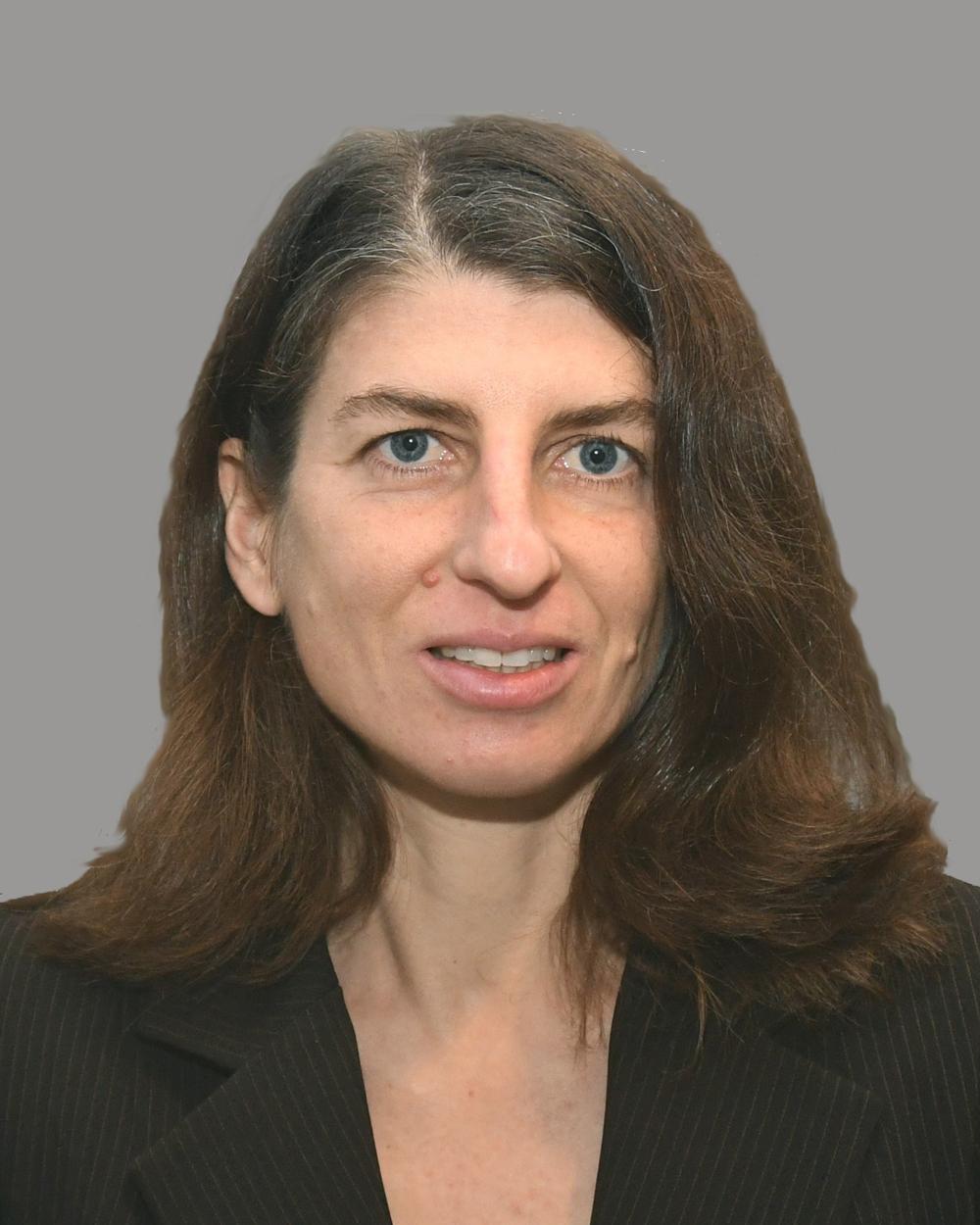
Radar is an exciting field where systems are constantly evolving thanks to technical advances in several domains including RF, electronics and signal processing. Focusing on the latter, this talk illustrates two important trends that are contributing to the development of future radar systems, namely diversity and nonlinear techniques. On the one hand, diversity brings redundant information about the radar scene thereby enabling target discrimination in a given space. On the other hand, nonlinear techniques produce outputs that are not linearly related to the input signals thereby enabling relevant processing in complex scenarios. Benefits of combining both diversity and nonlinear algorithms will be presented in two radar applications: 1) to estimate range migrating targets in blind velocities with a wideband waveform 2) to estimate targets hidden in the pedestal inherent to a multicarrier waveform.
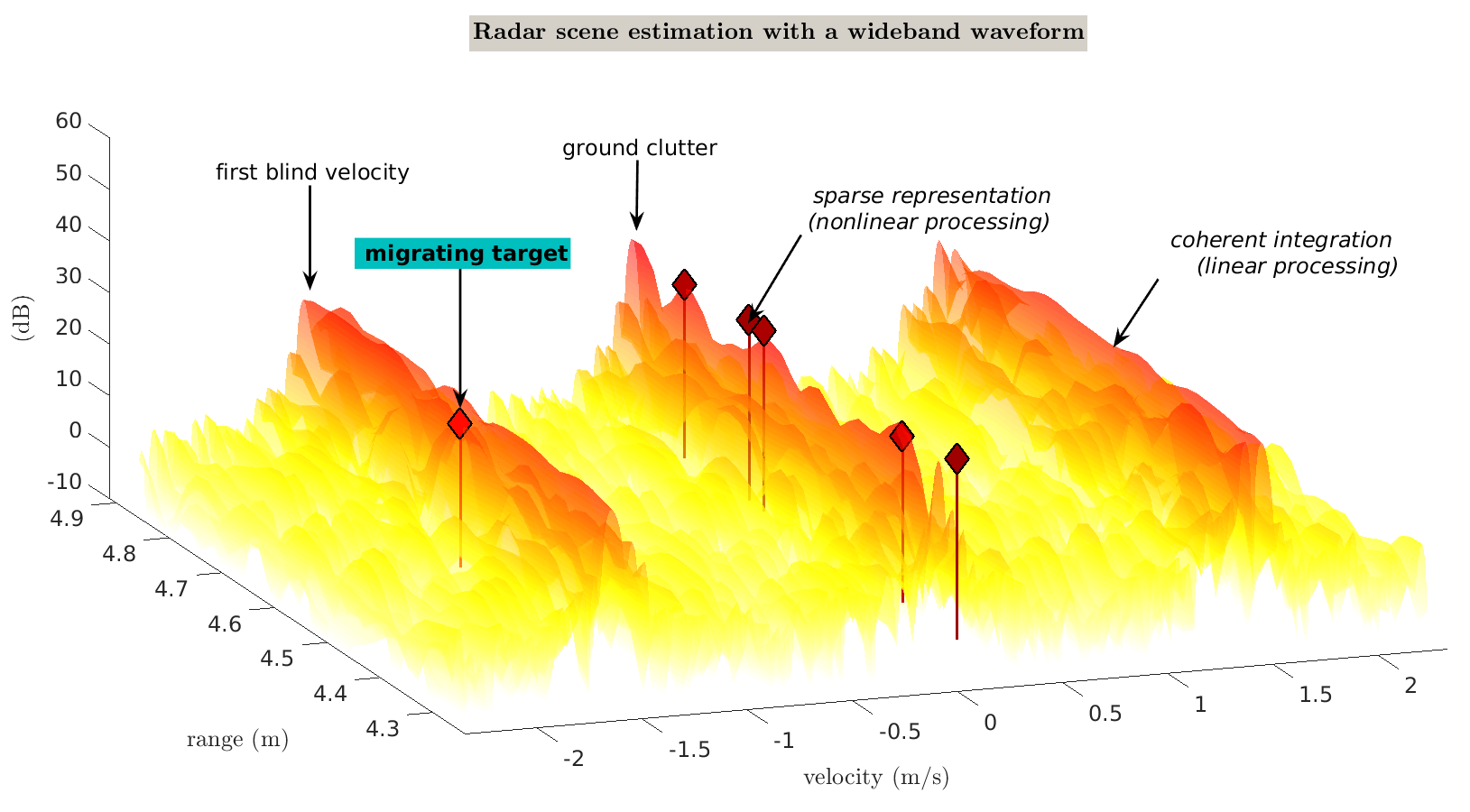
Short bio
Stéphanie Bidon received the engineer degree in aeronautics and the master degree in signal processing from ENSICA, Toulouse, in 2004 and 2005 respectively. She obtained the Ph.D. degree and the Habilitation à Diriger des Recherches in signal processing from INP, Toulouse, in 2008 and 2015 respectively.
She is currently with the Department of Electronics, Optronics and Signal at ISAE-SUPAERO, Université de Toulouse, France, as a professor.
Her research interests include digital signal processing particularly with application to radar systems (STAP, wideband radar detection, RadCom) and GNSS (robust phase tracking).

MS3 seminar
- Friday, 21 June 2019
- 14:00-16:30
- EWI Van der Poelzaal
Misspecification, Robustness and Cognition in Radar Signal Processing: Some Results
Prof. Dr. Maria Sabrina GrecoDept. of Information Engineering of the University of Pisa
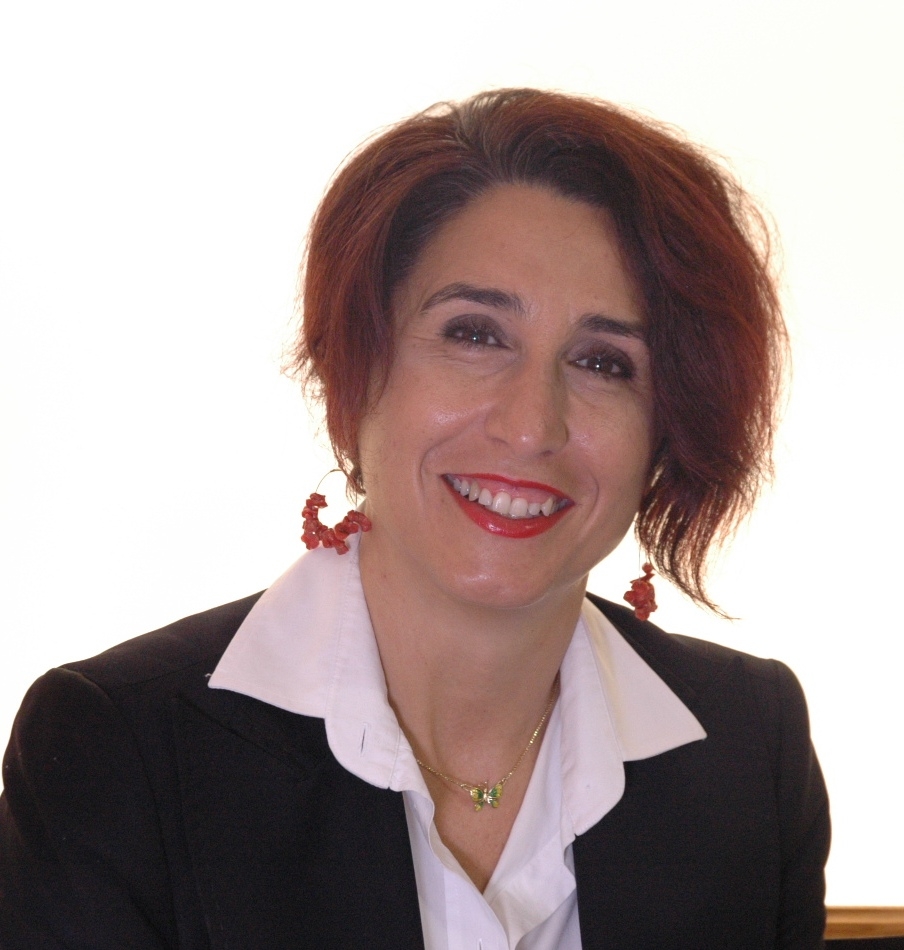
After a brief survey of the activities of the Radar Signal Processing Group of the Dept. of Information Engineering, University of Pisa, the talk will focus on some of the recent and on-going research topics in which Prof. Greco is involved.
Any scientific experiment which aims to gain some knowledge about a real-word phenomenon, in radar systems as in other applications, starts with the data collection. In statistical signal processing, all the available knowledge about a physical phenomenon of interest is summarized in the probability density function (pdf) of the collected observations. In practice, the pdf or/and its characteristic parameters are partly or fully unknown, then any inference procedure starts with its estimation. The easy case is when the hypothesized statistical model and the true one are the same, so they are matched. However, a certain amount of mismatch is often inevitable in practice. The reasons for a model misspecification can be various: it may be due to an imperfect knowledge of the true data model or to the need to fulfill some operative constraints on the estimation algorithm (processing time, simple hardware implementation, and so on).
The first part of the talk aims at providing a short overview on the misspecified estimation framework with a particular focus on the Misspecified Cramér-Rao bound (MCRB). Then a possible approach to minimize the misspecification risk is presented. Specifically, a more general semiparametric characterization of the statistical behavior of the collected data is addressed and some application to the radar scenario is shown.
The talk will then continue with a short introduction to the concept of cognition applied to passive and active radars highlighting the limits and the path forward and will describe some new results regarding the application of some machine learning techniques to “cognitive” MIMO radar.
Short Bio
Maria Sabrina Greco graduated in Electronic Engineering in 1993 and received the Ph.D. degree in Telecommunication Engineering in 1998, from University of Pisa, Italy. From December 1997 to May 1998 she joined the Georgia Tech Research Institute, Atlanta, USA as a visiting research scholar where she carried on research activity in the field of radar detection in non-Gaussian background.
In 1993 she joined the Dept. of Information Engineering of the University of Pisa, where she is Full Professor since 2017. She’s IEEE fellow since Jan. 2011 and she was co-recipient of the 2001 and 2012 IEEE Aerospace and Electronic Systems Society’s Barry Carlton Awards for Best Paper and recipient of the 2008 Fred Nathanson Young Engineer of the Year award for contributions to signal processing, estimation, and detection theory. In May-June 2015 and in January-February 2018 she visited as invited Professor the Université Paris-Sud, CentraleSupélec, Paris, France.
She has been general-chair, technical program chair and organizing committee member of many international conferences over the last 10 years. She has been guest editor of the special issue on “Machine Learning for Cognition in Radio Communications and Radar” of the IEEE Journal on Special Topics of Signal Processing, lead guest editor of the special issue on "Advanced Signal Processing for Radar Applications" of the IEEE Journal on Special Topics of Signal Processing, December 2015, guest co-editor of the special issue of the Journal of the IEEE Signal Processing Society on Special Topics in Signal Processing on "Adaptive Waveform Design for Agile Sensing and Communication," published in June 2007 and lead guest editor of the special issue of International Journal of Navigation and Observation on” Modelling and Processing of Radar Signals for Earth Observation published in August 2008. She’s Associate Editor of IET Proceedings – Sonar, Radar and Navigation, member of the Editorial Board of the Springer Journal of Advances in Signal Processing (JASP), and Senior area chair of the IEEE Transactions on Signal Processing. She’s member of the IEEE AESS Board of Governors and has been member of the IEEE SPS BoG (2015-17) and Chair of the IEEE AESS Radar Panel (2015-16). She has been as well SPS Distinguished Lecturer for the years 2014-2015, and now she's AESS Distinguished Lecturer for the years 2015-2019, and AESS VP Publications.
Her general interests are in the areas of statistical signal processing, estimation and detection theory. In particular, her research interests include clutter models, coherent and incoherent detection in non-Gaussian clutter, CFAR techniques, radar waveform diversity and bistatic/mustistatic active and passive radars, cognitive radars. She co-authored many book chapters and more than 190 journal and conference papers.
Radar Micro-Doppler Patterns for Drone's Characterisation
- Wednesday, 29 May 2019
- 10:00-14:00
- Lipkenszaal (LB 01.150)
Radar Micro-Doppler Patterns for Drone's Characterisation
Yefeng Cai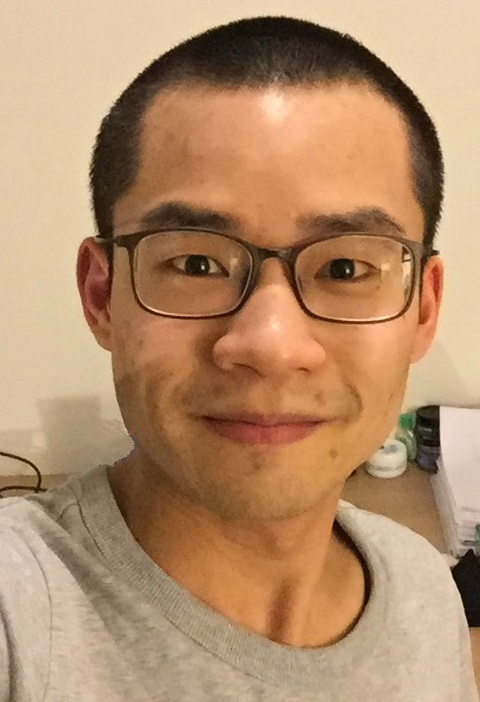
Micro-Doppler patterns of multi-propeller drones measured by radar systems are widely used in the classification of different drones, since the micro-Doppler patterns illustrate the velocity and motion properties of the drones. However, on this topic, there are a few issues the current researches have not tackled yet, and these will be discussed in this presentation. First of them is the lack of mathematical description of the micro-Doppler patterns. and most research works are based on real measured data so far. In this thesis, an EM backscattering model in HH plane of drone propeller is developed, simplifying the propeller’s geometry structure as a few cylinder thin wires. Radar signal model and micro-Doppler model are subsequently developed for the thin-wire propeller model when it is rotating. Second, most current researches focus on the micro-Doppler patterns achieved in short CPI cases that are valid for radar systems with PRI much shorter than the rotation period of the drone’s propellers. In this thesis, the drone micro-Doppler patterns in long CPI circumstances are investigated. Features are proposed to characterise the amplitude and frequency distribution of the simulated micro-Doppler spectrum. Applying these features to SVM gives good classification accuracy for the simulated micro-Doppler data. Third, most researches at present are carried out in short range for static or stable hovering drones, while from a practical point of view, it is also of great interest to investigate the drone micro-Doppler patterns in long range and dynamic scenarios. In this thesis, the micro-Doppler patterns of different drones at a distance of 9 kilometres are achieved by S-band radar in long CPI circumstance. Applying the previously proposed features to the real measured micro-Doppler spectra to SVM gives good classification accuracy for drones in hovering and manoeuvring flight modes.
Signal Processing Seminar
- Friday, 24 May 2019
- 14:30-15:30
- HB 17.150
Adaptive classification of radar emitters
Aybuke ErolMETU, Turkey
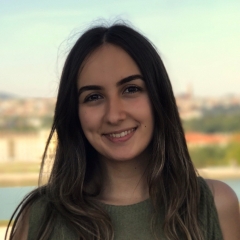
Radar receivers collect interleaved signals from all electromagnetic sources in the environment. The ultimate goal of electronic intelligence is to separate these sources (deinterleaving) and find their types (emitter identification). Knowing the type of a source, it is possible to comment on its mission and operation. All in all, deinterleaving and emitter identification together build a system that solves an adaptive classification problem. One of the biggest challenges in this problem is that the system does not know all emitter types in the world since a great part of this information is confidential within each country. In addition, radar receivers sequentially provide radar pulses to the system. Therefore, the classifier should be able to increase its number of classes whenever an unfamiliar emitter type is encountered. What’s more, it should be able to distinguish between the unfamiliar emitter types, which enforces online learning.
The proposed system solves deinterleaving using fuzzy ARTMAP due to several reasons. First, it is supervised which makes the system able to start with a priori information or data. Secondly, it works with sequential input and enables online learning. Last but not least, it can increase its number of classes. After fuzzy ARTMAP, radar clusters are formed. Next, a representation for each cluster should be found, to be compared with the representations of already known emitter types. The challenge here is that describing an emitter type by single numeric values would not be fair as radar features are generally interval based. For example, emitters today do not operate on a single frequency, they rather have a frequency range in which they can operate. Hence, the representation and comparison of emitter types and radar clusters are considered under symbolic data analysis. Both parts, solved with fuzzy ARTMAP and symbolic data analysis, are improved in terms of classification accuracy from their baseline methods with the use of Jaccard index.
Inauguration Earl McCune and Cicero Vaucher
- Friday, 17 -- Friday, 17 May 2019
- 15:00-18:00
- TU Delft Auditorium
Who's talking, who's listening?
Earl McCune, Cicero VaucherTU Delft
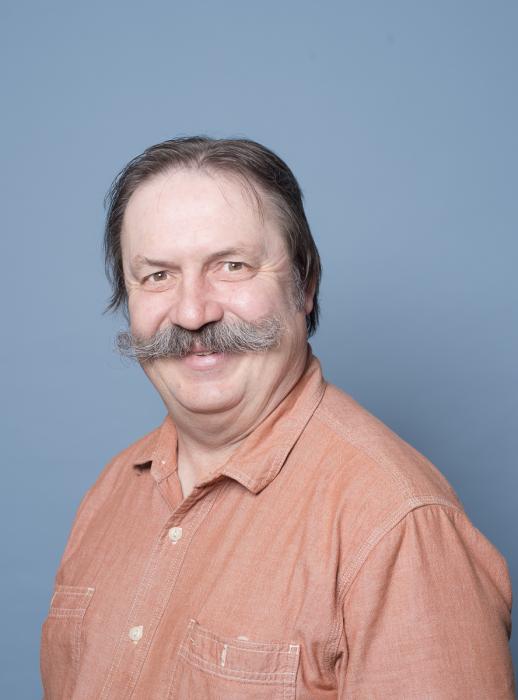
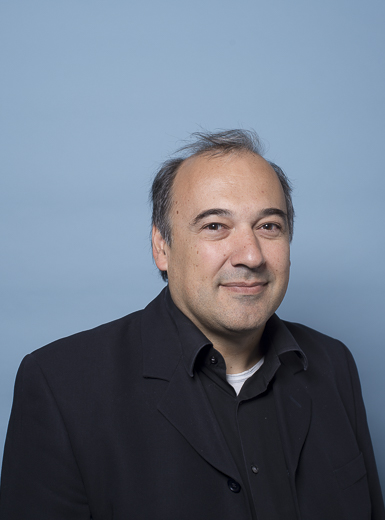
Micro electronics colloquium
- Thursday, 28 March 2019
- 15:30-17:00
- EEMCS, Restaurantzaal
High performance data converters; Rethink analog IC design
Nan Sun, Muhammed Bolatkale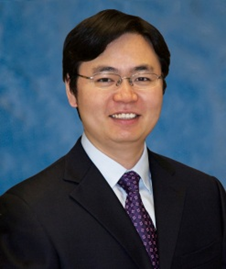
Nan Sun: Rethink Analog IC Design
I will present several unconventional data conversion architectures. First, I will talk about how we can make use of noise, which is usually deemed as an undesirable thing, to estimate the conversion residue and increase the SNR of a SAR ADC. It is an interesting example of stochastic resonance, in which the presence of noise can lead to not SNR degradation but SNR enhancement. Second, I will talk about how we can perform data conversion below the Nyquist rate by exploiting the sparsity of the input signal. I will show two example compressive sensing ADCs and how the effective ADC conversion rate can be reduced by 4 times but without losing information. Third, I will show how we can prevent the seemingly inevitable kT/C noise in a Nyquist-rate pipelined ADC by using a continuous-time SAR based 1st-stage. This can substantially reduce the requirement on the ADC input capacitance, greatly reducing the ADC driver power and reference buffer power
Biography of Nan Sun
Nan Sun is Associate Professor at the University of Texas at Austin. He received the B.S. from Tsinghua in 2006 and Ph.D. degree from Harvard in 2010. Dr. Sun received the NSF Career Award in 2013. He serves on the Technical Program Committee of the IEEE Custom Integrated Circuits Conference and the IEEE Asian Solid-State Circuit Conference. He is an Associate Editor of the IEEE Transactions on Circuits and Systems – I: Regular Papers, and a Guest Editor of the IEEE Journal of Solid-State Circuits. He also serves as IEEE Circuits-and-Systems Society Distinguished Lecturer from 2019 to 2020.
Muhammed Bolatkale: High Performance Data Converters
A next generation automotive radio receiver, an all-digital Class-D amplifier, and an advanced Bluetooth transceiver have one thing in common: they rely on high-performance data converter architectures to enable best in class performance. This talk will give an overview of GHz-sampling data converters, especially focusing on wideband delta-sigma and hybrid data converter architectures. We will touch upon state-of-the-art systems and circuit level designs fabricated in advance CMOS nodes.Bio Muhammed Bolatkale
Muhammed Bolatkale is Senior Principle Scientist at NXP Semiconductors and part-time Associate Professor in the Electronics Instrumentation Laboratory at Delft University of Technology. He received his B. Sc. (high honors) degree from Middle East Technical University, Turkey, in 2004 and the M. Sc. (cum laude) and Ph.D. degrees in Electrical Engineering from Delft University of Technology, the Netherlands, in 2007 and 2013. Since 2007, Dr. Bolatkale has worked for NXP Semiconductors, specializing in wideband Delta-Sigma ADCs for wireless communications and automotive applications. Dr. Bolatkale received the ISSCC 2016 and 2011 Jan Van Vessem Award for Outstanding European Paper and the IEEE Journal of Solid-State Circuits 2016 and 2011 Best Paper Award.Additional information ...
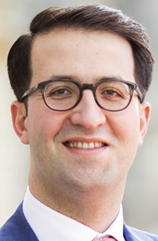
MS3 seminar
- Friday, 22 March 2019
- 09:30-10:30
- EWI Snijderzaal (LB01.010)
Radar Adaptivity: Antenna Based Signal Processing
Alfonso FarinaIEEE SPS Distinguished Industry Speaker
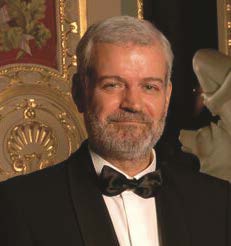
This lecture will provide an in-depth look into the history of radar systems and radar signal processing, from the beginning of radar to adaptive antenna arrays, including examples such as ground based radar systems, land and naval phased arrays, STAP for airborne radars, knowledge-based STAP, and Over the Horizon radar systems.
Biography
Alfonso FARINA , LFIEEE, FIET, FREng, Fellow of EURASIP, received the doctor degree in Electronic Engineering from the University of Rome (IT) in 1973. In 1974, he joined Selenia, then Selex ES, where he became Director of the Analysis of Integrated Systems Unit and subsequently Director of Engineering of the Large Business Systems Division. In 2012, he was Senior VP and Chief Technology Officer of the company, reporting directly to the President. From 2013 to 2014, he was senior advisor to the CTO. He retired in October 2014.From 1979 to 1985, he was also professor of “Radar Techniques” at the University of Naples (IT). He is the author of more than 800 peer-reviewed technical publications and of books and monographs (published worldwide), some of them also translated in to Russian and Chinese.
Radio-frequency engineering for space
- Tuesday, 5 March 2019
- 13:45-15:45
- lecture hall Boole, EWI building
European Space Agency

The key challenges in the design of radio-frequency instruments for space will be reviewed. Space environmental aspects will be discussed as well as the practical measures that need to be implemented to assure a high level of reliability. Selected examples will be presented, covering a wide spectrum of applications: from new satellite communication trends, such as active reconfigurable antennas to future scientific RF instruments that will be placed on other planets. Special focus will be put on high-power amplification concepts and integration solutions.
Speaker Bio: Václav Valenta was born in Czechoslovakia and received Master and Doctoral degrees in radio engineering and mathematics from the Brno University of Technology in the Czech Republic and Université Paris-Est in France, respectively. In the past, Dr. Valenta has designed and demonstrated active and passive radar systems operating up to a frequency of 140 GHz. His expertise is in the area of multi-functional RFIC design (SiGe BiCMOS and III-V) covering key functions from amplification, frequency generation/conversion, modulation/demodulation, and heterogenous RFIC integration. Dr. Valenta is currently with the European Space Agency, RF Equipment and Technology Section, running and supporting several R&D projects. Dr. Valenta is responsible for the development of the radio-science instrument "LaRa", which is a scientific payload that will be launched to Mars in the frame of the mission ExoMars 2020.
PhD Thesis Defence
- Thursday, 24 January 2019
- 14:30-16:30
- Aula Senaatszaal
Efficient computational methods in Magnetic Resonance Imaging
Jeroen van Gemert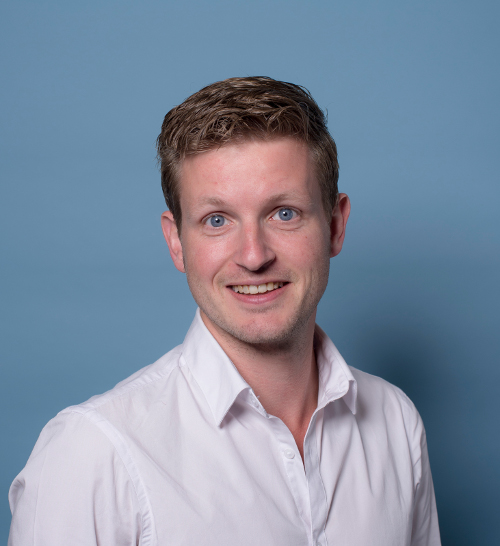
This dissertation describes how to design dielectric pads that can be used to increase image quality in Magnetic Resonance Imaging, and how to accelerate image reconstruction times using a preconditioner.
Image quality is limited by the signal to noise ratio of a scan. This ratio is increased for higher static magnetic field strengths and therefore there is great interest in high-field MRI. The wavelength of the transmitted magnetic RF field decreases for higher field strengths, and it becomes comparable to the dimensions of the human body. Consequently, RF interference patterns are encountered which can severely degrade image quality because of a low transmit efficiency or because of inhomogeneities in the field distribution. Dielectric pads can be used to improve this distribution as the pads tailor the field by inducing a secondary magnetic field due to its high permittivity. Typically, the pads are placed tangential to the body and in the vicinity of the region of interest. The exact location, dimensions, and constitution of the pad need to be carefully determined, however, and depend on the application and the MR configuration. Normally, parametric design studies are carried out using electromagnetic field solvers to find a suitable pad, but this is a very time consuming process which can last hours to days. In contrast with these design studies, we present methods to efficiently model and design the dielectric pads using reduced order modeling and optimization techniques. Subsequently, we have created a design tool to bridge the gap between the advanced design methods and the practical application by the MR community. Now, pads can be designed for any 7T neuroimaging and 3T body imaging application within minutes.
In the second part of the thesis a preconditioner is designed for parallel imaging (PI) and compressed sensing (CS) reconstructions. MRI acquisition times can be strongly reduced by using PI and CS techniques by acquiring less data than prescribed by the Nyquist criterion to fully reconstruct the anatomic image; this is beneficial for patient's comfort and for minimizing the risk of patient's movement. Although acquisition times are reduced, the reconstruction times are increased significantly. The reconstruction times can be reduced when a preconditioner is used. In this thesis, we construct such a preconditioner for the frequently used iterative Split Bregman framework. We have tested the performance in a conjugate gradient framework, and show that for different coil configurations, undersampling patterns, and anatomies, a five-fold acceleration can be obtained for solving the linear system part of Split Bregman.
Additional information ...

PhD Defence
- Wednesday, 16 January 2019
- 14:45-16:00
- Aula- Senaatszaal
Radar remote sensing of wind vector and turbulence intensity fields from raindrop backscattering
Albert Oude Nijhuis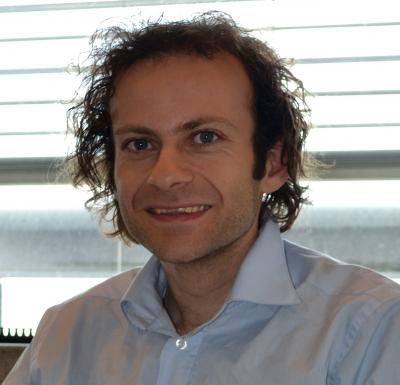
Nowadays, well-validated (experimentally and theoretically) formulas exist for the raindrop terminal fall velocity, based on a balance between the forces acting on a raindrop. In Chapter 2 the next step is taken, and raindrop inertial parameters are derived by considering an imbalance of forces acting on a raindrop. Based on the `sudden jump' case, inertial distance and inertial time parameters are derived for each raindrop size, with different formulations for the x/y-direction and the z-direction. These parameters are essential for the development of models and retrieval techniques that take the influence of measuring from imperfect air tracers (read: raindrops) into account. A new raindrop inertia correction model was proposed that can easily be integrated into existing turbulence models and retrieval techniques as an extra factor. From simulations, it was derived that for large radar total sampling scales ( 30 m), the influence of raindrop inertia on retrieved turbulence intensities becomes negligible. For radar total sampling scales comparable to or smaller than 30 m, the raindrop inertia correction model was suggested. For small radar total sampling scales ( 10 m) and large raindrops (e.g. 4 mm), the application of the proposed correction model becomes limited, because the uncertainty in the retrieved turbulence intensity becomes very large as a result of the influence of raindrop inertia. In Chapter 3, state-of-the-art and commonly-used turbulence intensity retrieval techniques are assessed, when they are applied to raindrop-backscattering radar Doppler measurements. The inertia correction model was not used here for two reasons: (1) it is assumed that often a good estimation of the drop size distribution (DSD) is not available; and (2) it can be expected that the influence of inertia is negligible when a large total sampling scale is used. The quality of retrieved values for the energy dissipation rate (EDR) was optimized, based on comparisons with in situ measurements from a sonic anemometer. As a result, the most optimal technique is the wind speed variance (WSV) EDR retrieval technique, which uses the full 3D wind vector from a profiling radar, TARA. Other turbulence intensity retrieval techniques, which rely on terminal fall velocity corrections, and thus depend on accurate estimation of the DSD, are compromised by errors in the estimated turbulence spectral width. For further applications, it is recommended that the concept of EDR is applied cautiously, because of complex estimation errors. It is suggested to always estimate a minimal retrievable EDR, give uncertainty estimates for the retrieved EDR value, and provide the sampling and total sampling scales that were used in the EDR retrieval technique. In Chapter 4 the focus is on radar-based retrieved wind vectors. From a few simulations of raindrop motions in predefined wind fields, it was concluded that only for very special weather conditions a substantial influence of raindrop inertia on the retrieved wind vectors can be expected. As this work is not aimed at such special weather conditions, the influence of raindrop inertia is not accounted for in wind vector retrieval techniques that are proposed and studied in this work. A new wind vector retrieval technique was developed and implemented, which is the four-dimensional variational analysis (4D-Var) wind vector retrieval technique, which provides a more coherent and realistic wind field in comparison to other existing techniques. With the 4D-Var wind vector retrieval technique, it is also possible to show the solution space of wind vectors, which are associated with measurements from a single scanning Doppler radar. In the case of insufficient or no in situ wind vector measurements for validation, an alternative approach for quantitative validation of radar-based retrieved wind vectors is desired. Therefore, measures for curl and divergence of the wind vector field are used to qualify and optimize the retrieved wind vectors. By selecting the right settings for a wind vector retrieval technique, retrieval of spurious wind vectors can be prevented, which are related to the implementation and configuration of an algorithm. In Chapter 5, the application of raindrop-backscattering radar-based turbulence intensity retrieval techniques to small sampling scales is studied in detail. With ``small sampling scales'' the radar resolution volume scale of modern research weather radars is meant, which has a typical spatial scale of 30 m. A non-stochastic turbulence implementation to model radar observables is developed, the so-called ``ensemble of isotropic vectors'' approach, which can be used in radar-based turbulence intensity retrieval techniques. The goal for this turbulence implementation is to get the same turbulence-intensity dependencies in the polarimetric radar observables as for stochastic turbulence implementations. A novelty of this ``ensemble of isotropic vectors’' approach is that it implicitly reproduces the canting angle distribution of raindrops, on which so many polarimetric radar observables depend. The performance of the proposed technique is demonstrated in a case study. It was not possible to use radar-based estimations of the DSD in this case study at small sampling scales, because several state-of-the-art radar-based DSD estimations overestimated the Doppler spectral width due to raindrop terminal fall velocities. Therefore, in situ ground-level DSD measurements have been used in this case study. With the ground-level DSD information, the application of the raindrop inertia correction model is demonstrated for radar-based turbulence intensity retrieval techniques applied to the small sampling scales of modern research weather radars during the rain. In Chapter 6, the application of raindrop-backscattering radar-based retrieval techniques is demonstrated at an airport. This was done within the UFO project and can be used in the future to reduce wind hazards at airports. The 4D-Var wind vector retrieval technique is recommended, as it has several advanced processing features. In particular, this technique gives more control and versatility in the solutions. For turbulence intensity retrieval techniques applied at airports, it is recommended to avoid corrections for raindrop inertia, which relies on accurate estimation of the DSD.
Additional information ...
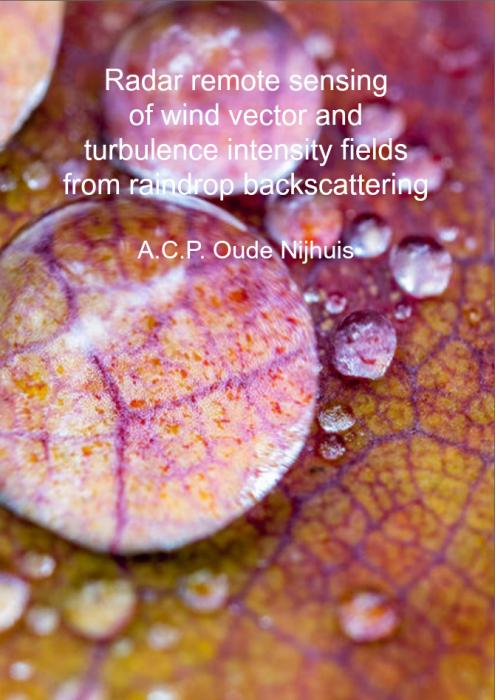
PhD Thesis Defence
- Thursday, 10 January 2019
- 15:00-17:00
- Aula Senaatszaal
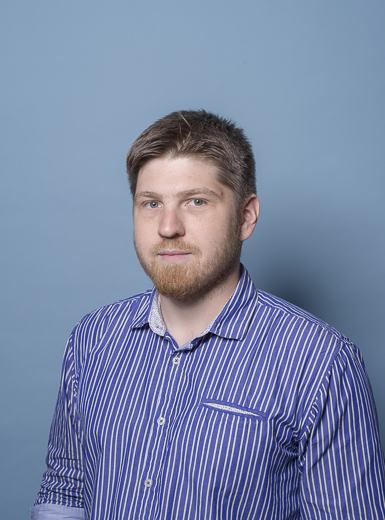

PhD Thesis Defence
- Monday, 26 November 2018
- 12:30-14:00
- Aula Senaatszaal
Surface Acoustic Mode Aluminium Nitride Transducer for micro-size liquid sensing applications
Thu Hang Bui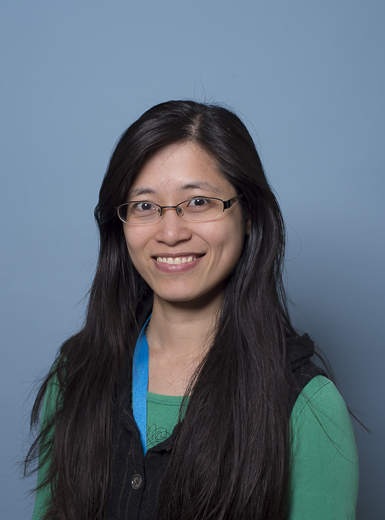

ME tenure track colloquium
- Wednesday, 21 November 2018
- 15:00-17:00
- EWI, Snijderszaal
Radar; the eyes of the future autonomous vehicles, The Next Generation of Wireless TX, V
Morteza Alavi, Masoud Babaie, Faruk Uysal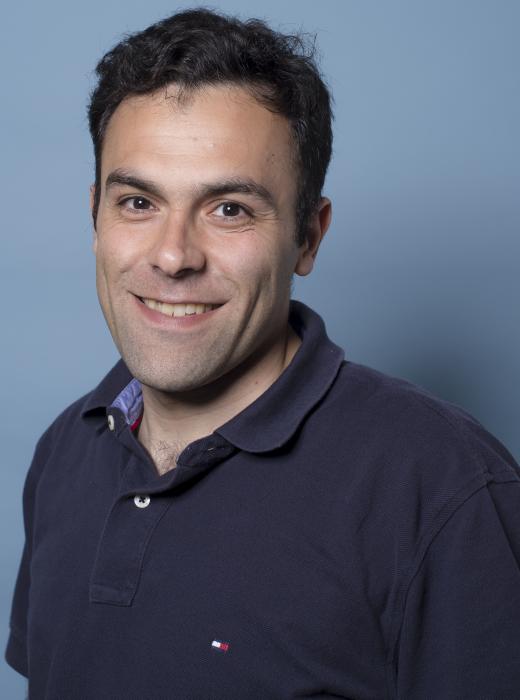
Faruk Uysal (Microwave sensing, signals and systems) Radar; the eyes of the future autonomous vehicles
Radar is becoming the eyes of autonomous vehicles due to its all-weather, day and night capabilities. The coexistence of multiple radars in close proximity soon will be an issue with the increasing number of radar-equipped devices such as autonomous cars on the roads. To address this emerging issue in autonomous vehicles, the first part of my presentation concentrates on current problems; interference mitigation and advanced angle of arrival estimation; as well as future technologies like phase-coded radar, to support distributed radar processing. Finally, I will mention how other radar systems also take advantages of distributed radar network.
Morteza Alavi (Electronics research laboratory) The Next Generation of Wireless TX
Wireless technologies such as 5G and WiFi-6 are on the horizon and developing at a faster pace than ever before. These life-changing communication networks will impact every sector of society. They are increasing the data throughput more than 100×, boosting the network’s latency more than 15×, expanding the area coverage, facilitating the adoption of more new technologies such as augmented/virtual reality (AR/VR), machine learning (ML), drones, self-driving cars, and enabling the massive deployment of Internet of Thing (IoT) devices by connecting more machines to the wireless networks. Offering such advantages requires massive signal bandwidth, less complexity, more agility, considerable radiated power, and remarkable signal processing. More importantly, the energy efficiency and form factor of such systems are significantly critical. To address these challenging issues, this talk reflects on some of ELCA’s ongoing research activities focusing on advanced transmitters ranging from UHF up to W frequency band.
Masoud Babaie (Electronics research laboratory) RF Battleground for Biomedical and Quantum Applications
The focus of the first half of the presentation is on the design of a radar transceiver for detecting vital human signs such as heart and respiration rates. The proposed radar operates at ~7GHz UWB frequency band due to the lower path loss compared to millimeter-wave frequencies. However, it needs to satisfy the stringiest FCC requirements on the transmitting peak, average, and sideband power spectral density (PSD). Hence, it is challenging not impossible for pulse-based radar to fulfill the side-lobe PSD requirement without compromising detection range. On the other hand, frequency-modulated continuous wave (FMCW) radars have low sideband emission. However, they can easily violate the UWB average PSD requirement due to their continuous operation. To tackle the abovementioned challenges, a heavily duty-cycled FMCW radar with an innovative chirp generation is introduced to satisfy the FCC requirements while achieving a record-low power consumption of 680W. I then switch to the second part of the presentation on the design of cryogenic frequency synthesizers and low-noise amplifiers for future quantum computers. Unfortunately, the channel current noise of CMOS transistors does not scale linearly by the temperature due to the dominance of flicker and shot noise at the cryogenic temperatures. It directly degrades the receiver (PLL) noise figure (phase noise). To tackle this issue and truly benefit from the operation in the cryogenic temperatures, the first CMOS parametric amplifier is revealed here.
Additional information ...
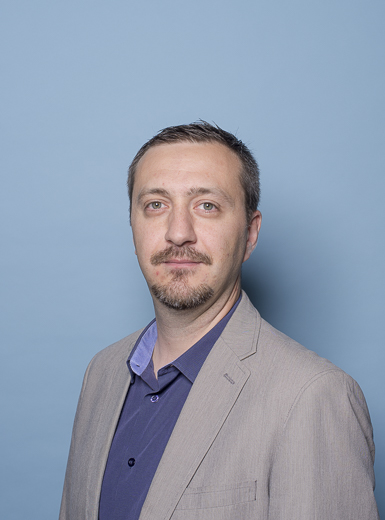
PhD Thesis Defence
- Wednesday, 24 October 2018
- 12:30-14:00
- Aula Senaatszaal
Free standing interconnects for stretchable electronics
Shivani Joshi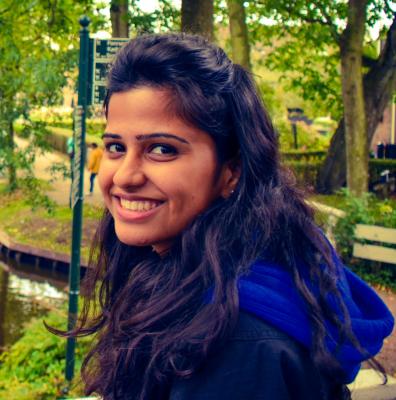

PhD Thesis defence
- Monday, 15 October 2018
- 12:30
- TU Delft, Aula
Spatio-Temporal Environment Monitoring Leveraging Sparsity
Venkat Roy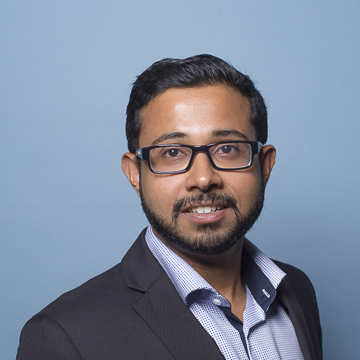
PhD Thesis Defence
- Monday, 15 October 2018
- 12:30-13:30
- Aula Senaatszaal
Spatio-temporal environment monitoring leveraging sparsity
Venkat Roy
Linking sensor measurements to unknown field intensities, with application to rainfall monitoring from cellular networks
Additional information ...

MSc SS Thesis Presentation
- Thursday, 23 August 2018
- 14:00-15:00
- LB 01.170 Timmanzaal
Multidomain Graph Signal Processing: Learning and Sampling
Guillermo Ortiz Jiménez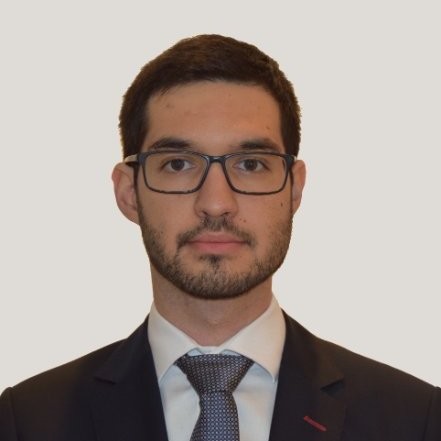
In this era of data deluge, we are overwhelmed with massive volumes of extremely complex datasets. Data generated today is complex because it lacks a clear geometric structure, comes in great volumes, and it often contains information from multiple domains. In this thesis, we address these issues and propose two theoretical frameworks to handle such multidomain datasets. To begin with, we extend the recently developed geometric deep learning framework to multidomain graph signals, e.g., time-varying signals, defining a new type of convolutional layer that will allow us to deal with graph signals defined on top of several domains, e.g., electroencephalograms or traffic networks. After discussing its properties and motivating its use, we show how this operation can be efficiently implemented to run on a GPU and demonstrate its generalization abilities on a synthetic dataset. Next, we consider the problem of designing sparse sampling strategies for multidomain signals, which can be represented using tensors. To keep the framework general, we do not restrict ourselves to multidomain signals defined on irregular domains. Nonetheless, this particularization to multidomain graph signals is also presented. To do so, we leverage the multidomain structure of tensor signals and propose to acquire samples using a Kronecker-structured sensing function, thereby circumventing the curse of dimensionality. For designing such sensing functions, we develop several low-complexity greedy algorithms based on submodular optimization methods that compute near-optimal sampling sets. To validate the developed theory, we present several numerical examples, ranging from multi-antenna communications to graph signal processing.
Additional information ...
5G Phased Arrays
- Monday, 25 -- Friday, 29 June 2018
- TU Delft
International Summer School on 5G Phased Arrays

Understanding of phased array operation requires multi- disciplinary approach, which is based on the antenna array, microwave circuit and signal processing theories. By bringing these three areas together, the school provides integral approach to phased array front-ends for 5G communication systems.
At the school the phased array foundations will be considered from antenna, RF technology and signal processing points of view. Realization of 5G capabilities such as high data-rate communication link to moving objects will be discussed. The education will be concluded by a design project.
The summer school is open for all young specialists and researchers from both industry and academia. The attendees should have basic knowledge about EM, electrical circuits and signal processing (graduate courses on electromagnetic waves, electrical circuits including microwave (RF) circuits, and signal processing).
Topics:
- Foundations of antenna arrays
- Antenna array topologies for 5G applications
- Analog and digital beamforming in antenna arrays
- Front-end architecture and performance
- 5G applications and system requirements
Additional information ...
Conferences
- Thursday, 7 -- Friday, 8 June 2018
- 10:30-17:30
- University of Twente, Eschede
PRORISC 2018 Conference

Annual conference on Integrated Circuit (IC) design, organized within the three technical Dutch universities Twente, Delft and Eindhoven
Additional information ...

Conferences
- Thursday, 7 -- Friday, 8 June 2018
- 10:30-17:30
SAFE 2018 Conference

Annual conference on Micro-systems, Materials, Technology and RF-devices, organized within the three technical Dutch universities of Twente, Delft and Eindhoven.
Additional information ...

Electronic Instrumentation Colloquium
- Monday, 30 April 2018
- 11:00-12:00
- Snijderszaal (LB01.010)
Reducing Switching Artifacts in Chopper Amplifiers
Yoshinori Kusuda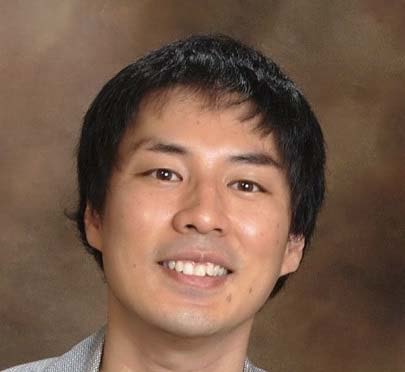
Abstract
Chopping is a technique with which amplifier offset can be reduced to sub-μV levels, at the expense of reduced signal bandwidth due to chopping artifacts such as up-modulated ripple and glitches. In this talk, some circuit techniques to reduce such artifacts are proposed.These circuit techniques have been used in three commercially-available operational amplifiers, whose design and measured performance will be discussed. Lastly, some of the challenges associated in testing low-offset amplifiers in mass-production will be discussed..
BiographyYoshinori Kusuda received the B.S. degree in electrical and electronic engineering in 2002, and M.S. degree in PhysicalElectronics in 2004, both from Tokyo Institute of Technology. Upon his graduation in 2004, he joined the Japan DesignCenter of Analog Devices (ADI) as an IC design engineer. He is currently based in San Jose, CA, U.S.A., working for the Linear and Precision Technology Group of ADI. The focus of his work is on precision CMOS analog designs, including stand-alone amplifiers and application specific mixed-signal products. This has resulted in presentations and papers at IEEE conferences and journals, as well as nine issued U.S. patents. Since August2015, he has been a guest researcher at the ElectronicInstrumentation Laboratory of the TU Delft.
Smart Sensor Systems 2018
- Monday, 16 -- Friday, 20 April 2018
- 09:00-12:30
- TU DELFT
Smart Sensor Systems 2018
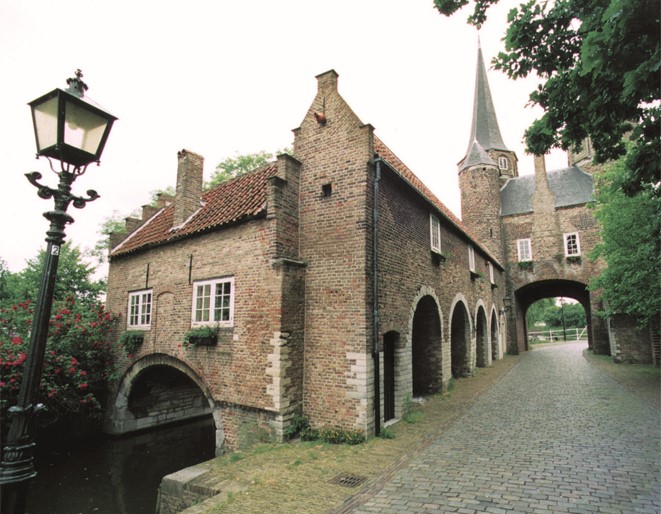
This course addresses the design and development of smart sensor systems. After a general overview, various key aspects of sensor systems are discussed: measurement and calibration techniques, the design of precision sensor interfaces, analog-to-digital conversion techniques, and sensing principles for the measurement of magnetic fields, temperature, capacitance, acceleration and rotation. The state-of-the-art smart sensor systems covered by the course include smart magnetic-field sensors, smart temperature sensors, physical chemosensors, multi-electrode capacitive sensors, implantable smart sensors, DNA microarrays, smart inertial sensors, smart optical microsystems and CMOS image sensors. A systematic approach towards the design of smart sensor systems is presented. The lectures are augmented by case studies and hands-on demonstrations.
Additional information ...
Imaging
- Thursday, 5 April 2018
- 10:00-11:00
- Aula
Forward-Looking Ultra-Wideband Synthetic Array Imaging
Jianping Wang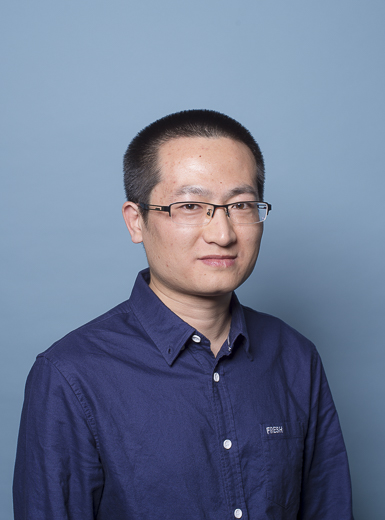
Forward-Looking Ultra-Wideband Synthetic Array Imaging Radar imaging extends human’s “vision”, and improves people’s awareness to unknowns and invisible objects in the surrounding living environment. A motivation for the research presented in the thesis is to develop a forward-looking ground penetrating radar (GPR) system to predict hazards ahead of tunnel boring machines (TBM) during tunnel excavation. In this circumstance, GPR antennas mounted on the cutter-head of a TBM acquire electromagnetic (EM) signals with the rotation of the cutter-head, which leads to a new imaging modality termed as the Radial-scanned Synthetic Aperture Radar (RadSAR). The rotation of the antenna array benefits the formation of the RadSAR but also makes it distinct from traditional Synthetic Aperture Radar (SAR) modalities. In this research, we have thoroughly investigated the feasibility of the RadSAR for high-quality, high-resolution imaging by combining both the Ultra-wideband (UWB) and full polarimetry techniques. Moreover, taking advantage of the forward motion of the antenna platform (e.g. the advancement of a TBM during tunnel excavation), the RadSAR has also been extended to the Elevation-RadSAR (E-RadSAR). Compared to the RadSAR, the E-RadSAR provides the potential to get comparable imaging capability by using even fewer antennas, which is very attractive for building compact and/or cost-efficient imaging systems. To address the three-dimensional spatial sampling problem of the E-RadSAR, a general multi-dimensional sampling framework has been developed which enables to fully exploit spatial-, frequency- and polarization-diversities for signal acquisition by an advanced microwave imaging system. Beyond the applications in TBMs, some of the research results can also be extended to other applications, for instance, automotive driving and medical imaging.
Additional information ...
PhD Thesis Defence
- Tuesday, 3 April 2018
- 12:00-14:00
- Aula Senaatszaal
Front-End ASICs for 3-D Ultrasound: From Beamforming to Digitization
Chao Chen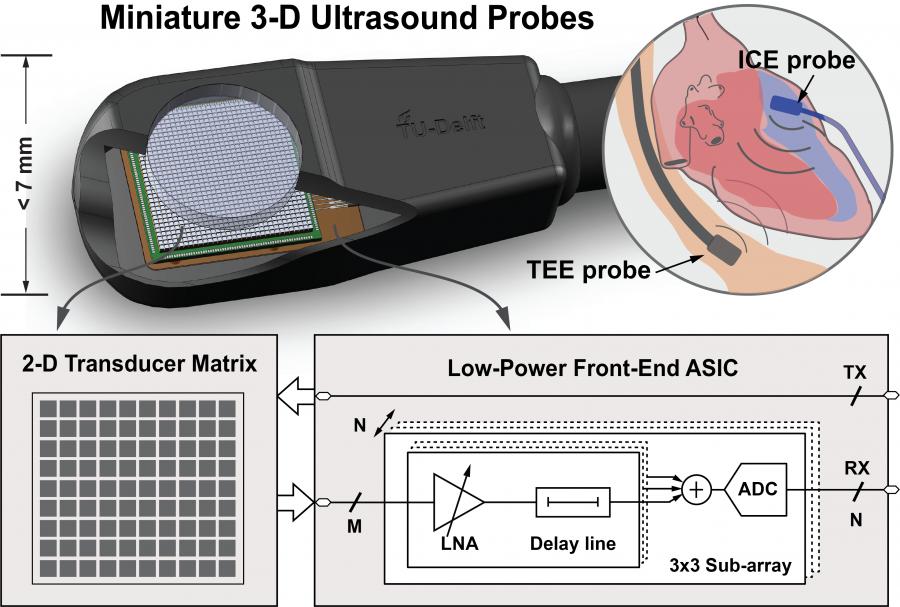
Program:
12:00 - 12:15 Introductory presentation
12:30 - 13:30 Public defense
13:45 - 14:00 Diploma ceremony
Address: Senaatszaal of the Aula Congress Center
SUMMARY
This thesis describes the analysis, design and evaluation of front-end application-specific integrated circuits (ASICs) for 3-D medical ultrasound imaging, with the focus on the receive electronics. They are specifically designed for next-generation miniature 3-D ultrasound devices, such as transesophageal echocardiography (TEE), intracardiac echocardiography (ICE) and intravascular ultrasound (IVUS) probes. These probes, equipped with 2-D array transducers and thus the capability of volumetric visualization, are crucial for both accurate diagnosis and therapy guidance of cardiovascular diseases. However, their stringent size constraints, as well as the limited power budget, increase the difficulty in integrating in-probe electronics. The mismatch between the increasing number of transducer elements and the limited cable count that can be accommodated, also makes it challenging to acquire data from these probes. Front-end ASICs that are optimized in both system architecture and circuit-level implementation are proposed in this thesis to tackle these problems.
The techniques described in this thesis have been applied in several prototype realizations, including one LNA test chip, one PVDF readout IC, two analog beamforming ASICs and one ASIC with on-chip digitization and datalinks. All prototypes have been evaluated both electrically and acoustically. The LNA test chip achieved a noise-efficiency factor (NEF) that is 2.5 × better than the state-of-the-art. One of the analog beamforming ASIC achieved a 0.27 mW/element power efficiency with a compact layout matched to a 150 µm element pitch. This is the highest power-efficiency and smallest pitch to date, in comparison with state-of-the-art ultrasound front-end ASICs. The ASIC with integrated beamforming ADC consumed only 0.91 mW/element within the same element area. A comparison with previous digitization solutions for 3-D ultrasound shows that this work achieved a 10 × improvement in power-efficiency, as well as a 3.3 × improvement in integration density.
The dissertation can be found in the TU Delft repository: http://doi.org/10.4233/uuid:a5002bb0-4701-4e33-aef6-3c78d0c9fd70
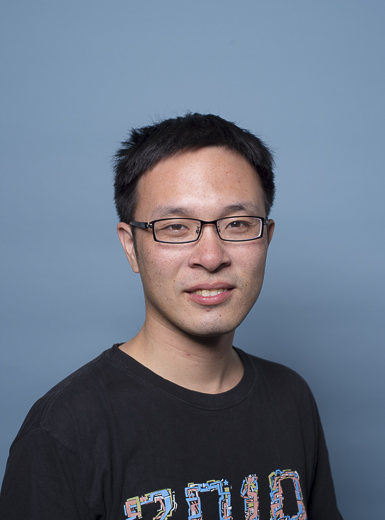
MEST Symposium
- Friday, 16 February 2018
- Aula Lecture Hall C
Mini Symposium on Hardware Security

Three talks from leading companies in the industry: Brighsight, Intrinsic ID and Riscure with the following topics:
- “Past , Present and Future of Hardware Attacks on Smart Cards and SOCs” by Gerard van Battum, Sr. Security Evaluator at Brightsight;
- “Removing the barriers of securing a broad range of IoT devices” by Dr. Georgios Selimis, Senior Security Engineer, Intrinsic ID;
- “How to use Deep Learning for hardware security testing?” by Marc Witteman (MSc), Chief Executive Officer, Riscure.
Free but required registration at the link below.
Additional information ...
PhD Thesis Defence
- Wednesday, 24 January 2018
- 15:00
- TUD Aula, senaatszaal
Efficient computational methods in magnetic resonance imaging
Jeroen van GemertTechnical University Delft
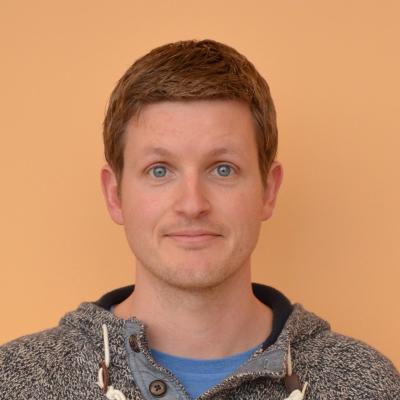
Antenna designs for 5G communications
- Friday, 1 December 2017
- 13:00-14:00
- Snijderszaal
Antenna designs for 5G communications
Jan Puskely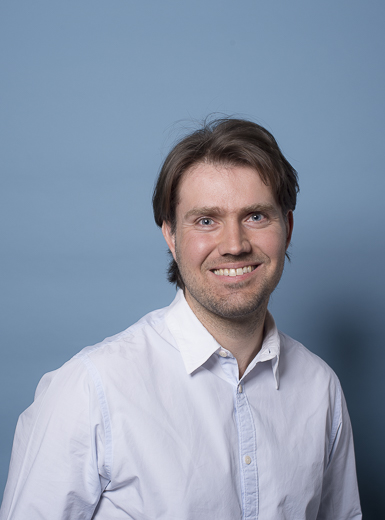
The seminar will be focused on design of future antenna system for 5G. I will give you short introduction into the problematic of Substrate Integrated Waveguide technology and its exploitation in antenna designs.
Additional information ...
5G Multi-Beam Antenna Topologies
- Friday, 24 November 2017
- 14:30-15:30
- HB17.150
5G Multi-Beam Antenna Topologies
Yanki Aslan
Description: Using the concept of beam-division multiple access, a base station can communicate with multiple users sharing the same time and frequency resources. In this seminar, I will talk about possible ways to design low-cost 5G phased array base station antenna systems at mm-waves for multiple beam forming with enhanced spatial multiplexing, limited interference, acceptable power consumption, passive cooling and suitable processing complexity and speed.
Additional information ...
- Friday, 20 October 2017
- 14:00-15:00
- EWI, Snijderszaal (LB 01.010)
Distributed and MIMO radar
Marc LesturgieONERA, France
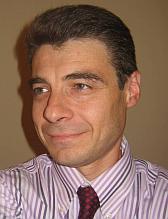
MIMO (multiple-input multiple-output) radar refers to the use of multiple transmitters and receivers, for sensing the environment and the targets present in this environment. Basically MIMO radar uses multiple antennas that transmit correlated or uncorrelated waveforms. For the last ten years MIMO has led to extensive research and publications, both in communications and Radar domains. Why such interest for MIMO in radar? Beside the prolific amount of publications, how to assess the interest of MIMO to overcome the current limitations of conventional radar?
Additional information ...
Scientific seminar on radar technology
- Thursday, 6 July 2017
- EEMCS, Chip/Lijm & Cultuur, Chaos

EEMCS Chip 10.30-11.00 Walk in, with coffee and tea 11.00-11.10 Welcome by Alexander Yarovoy (TUD) 11.10-11.45 Nikita Petrov (TUD), ‘ Range migrating targets detection with wideband radar”. (TUD) 11.50-12.30 Pascal Aubry (TUD) , ’ Coloured transmission at MS3’ Lijm & Cultuur, Chaos 14.00-14.05 Welcome by Leo Ligthart (em. prof. TUD) 14.05-14.40 Willem Hol (Thales NL) 14.45-15.20 Stephanie Bidon (Université Toulouse , ‘Bayesian sparse estimation of migrating targets in wideband radar’ 15.25-16.00 Stephane Kemkemian (Thales Fr) , ‘Advance in airborne AESA radars over 3 decades. From slotted plane arrays to multi functions AESA’ 16.00-16.35 Cyrille Enderli (Thales Fr) ‘Detection of extended targets with wideband radars’ Drinks
Microelectronics IoT Pitch
- Wednesday, 5 July 2017
- 15:00-18:00
- New Sports Cafe - TU Deft
and Summer Drink

All ME-MSc’s and ME-employees are cordially invited to make a 2-minute pitch for an interesting and unexpected IoT application.
The format is free like the level of seriousness and feasibility are but there is a meaningful purpose as the event is meant to inspire the definition of technology integrating projects in the field of IoT. The pitches will be ‘graded’ by measuring the intensity of the applause.
The pitch wil be followed by the yearly Summer Drink of the Microelectronics Department.
Chip Design Workshop
- Tuesday, 23 May 2017
- 12:30
- Theatre, TU Delft unit Cultuur, Mekelweg 8-10
IEEE Solid-State Circuits Society

Program: 12:30 Coffee, 12:50 Welcome, Kofi Makinwa, TU Delft, 13:00 Introduction, Patrick Reyanert, KU Leuven, 13:15 – 13:40 A Dynamic Zoom ADC with 109 dB DR for Audio Applications, Burak Gönen, TU Delft, 13:40 – 14:00 A 0.3-2.6 TOPS/W Precision-Scalable Processor for Real-Time Large-Scale ConvNets - Bert Moons, KU Leuven, 14:20 – 14:45 Coffee Break, Talks by Benelux Chip Design Contest Winners: 14:0 – 14:20 A 94.6%-Efficiency Fully Integrated Switched-Capacitor DC-DC Converter in 40nm - Nicholas Butse, KU Leuven, Talks by Invited Speakers: 14:45 – 15:15 Design mistakes you’d rather not talk about, Klaas Bult 15:15 – 15:45 Cryo-CMOS for Quantum Computing, Fabio Sebastiano, TU Delft,
Seminar autonomous driving
- Monday, 15 May 2017
- 11:00-14:00
- EEMCS, Snijderszaal
Autonomous driving
Leo de Vreede, Alexander Yarovoy, Cicero Vaucher, Riender Happee, Dariu Gravila, Rossiza Gourova, Joris Domhof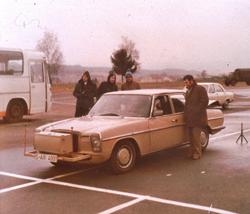
Program 11.00 - 11.05 Opening (by Alexander Yarovoy and Leo de Vreede 11.05 - 11.35 S4-Drive project (PhD’s Rossiza Gourova (EEMCS) and Joris Domhof (3ME)) 11.35 - 12.05 Dariu Gavrila,‘Autonomous driving' 12.05 – 13.35 Riender Happee,‘Human Factor on autonomous driving’ Lunch break Lipkenszaal 13.00 - 13.30 Cicero Vaucher,‘Automotive radars’ 13.30 -14.00 CRUISE project proposal (Cicero Vaucher, Masoud Babaie and Faruk Uysal)
5G Multi-Beam Antenna Topologies
- Friday, 12 May 2017
- EEMCS, Snijderszaal
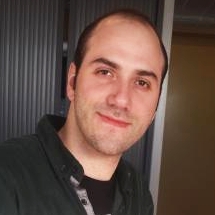
5G Multi-Beam Antenna Topologies 5G communication systems are expected to achieve approximately 1000x communication capacity growth and less than 1ms latency in transferred data stream while supporting massive Internet of Things. To achieve the capacity and throughput requirements of 5G technology, a vast amount of spectrum with sufficient frequency re-use is necessary. Therefore, the concept of beam-division multiple access in millimeter-wave systems will be studied in this project. Transmissions in the millimeter-wave bands have significantly less favorable link budgets due to low power amplifier output powers, reduced receiving effective aperture and decreased diffraction and dispersion effects. To mitigate these drawbacks, large scale antenna arrays with tens or hundreds of elements are expected to be deployed in 5G systems. Using a transceiver behind every antenna element will consume unacceptable amounts of power and will likely be cost prohibitive. In fact, being high volume markets, 5G, or in general mobile communication, systems have strict cost requirements. Therefore, this research targets to satisfy the ambitious performance criteria of 5G by developing novel and advanced multi-beam antenna arrays integrated with low cost front-ends. In this seminar, I will talk about RF-oriented and hybrid (RF and baseband) beamforming approaches to design sparse and sub-array based antennas with wide scan multi-beam capability, low heat dissipation, high efficiency power amplifiers and low level of side lobes.
Additional information ...
Midterm presentation Ruoyu Feng
- Wednesday, 10 May 2017
- EEMCS, HB 17.150
DOA Estimation Using MIMO-Monopulse for 79GHz Automotive FMCW Radar
Ruoyu Feng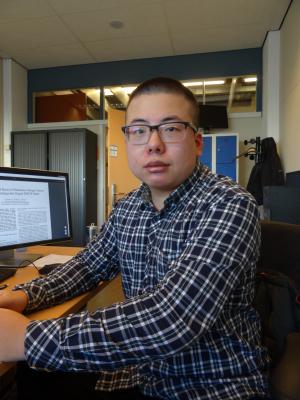
Automotive radar is widely used for driving safety support and it is a key element of future autonomous vehicles. Radar sensors have the property that theperformance is not to be affected by low vision conditions compared with camera sensors or lazer radar sensors, which makes it critical for autonomous driving system. Automotive radar system utilizes millimeter-wave band to detect the range,Doppler velocity and direction of arrival(DOA). Commercial 24 GHz and 77GHz radar has been well developed in vehicle applications at present, and the future trendis 79 GHz solutionm with wider 4 GHz bandwidth, which has been defined by the European Commission in 2004 as the frequency allocation for automotive shortrange radar systems. The main modulation method of automotive radar is Frequency-ModulatedContinous-Wave(FMCW), which holds advantages including high resolution distance measurement,quick updating and good functions in the various weather condition. The resolution and accuracy with which the angle of arrival can be estimated depends on the number of used antennas and their physical size. To improve the performance advanced algorithms and antenna configurations can be used. So called super resolution techniques (such as Music and Esprit)can improve the estimation performance but suffer when few measurements are available. Moreover, these algorithm pose restriction on the configuration of the antenna array. Monopulse is an established technique for radars for precision angle estimation. Conventional monopulse with one transmitter and two receivers and phased ar-ray monopulse are well developed especially in tracking radar system. MIMO-monopulse has been studied in some literature, but most of them utilize dis-tributed MIMO. The research and application of colocated MIMO-monopulseare still potential.In this master thesis, we try to figure out the solution of anangle estimation algorithm using MIMO-monopulse based on an actual automo-tive radar from NXP which has 3 transmitters and 4 receivers MIMO antennas.
Seminar Nikita Petrov
- Wednesday, 19 April 2017
- EEMCS, Snijderszaal
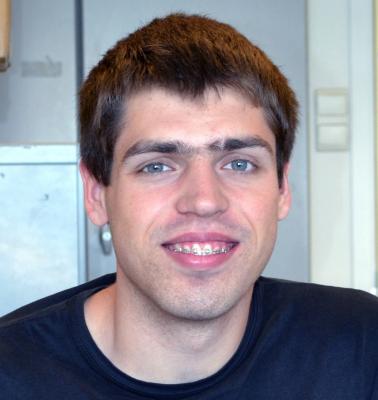
Conferences
- Friday, 14 April 2017
- 10:00-12:00
Eurosensors dead-line

Seminar Kishor Chandra
- Thursday, 13 April 2017
- EEMCS, Snijderszaal
Embedded software
Seminar Jianping Wang
- Friday, 7 April 2017
- EEMCS, Van der Poelzaal
Sampling Design for Linear Inversion Problems
Jianping Wang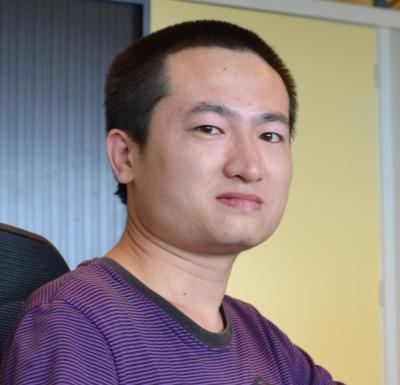
How to properly take cost-efficient samples/sensing is a critical problem for linear inversion problems. For microwave imaging, it is manifested as properly taking advantage of space, frequency and polarization diversities of EM fields to get abundant observations for image formation. To fully exploit these diversities, we treat the microwave imaging as a linear inversion problem and formulate the sampling design as a sample selection problem. By analyzing the observation vectors in the sensing matrix, a greedy algorithm, named as Clustered Maximum Projection on Minimum Eigen-space (CMPME), is proposed to sequentially select the most informative observations by gradually expanding the observation space. Some numerical examples are shown to demonstrate the applications for non-regular ultra-wideband array design and three-dimensional array design with polarization diversities.
Additional information ...
Seminar Shilong Sun
- Friday, 24 -- Friday, 24 March 2017
- EEMCS, Snijderszaal
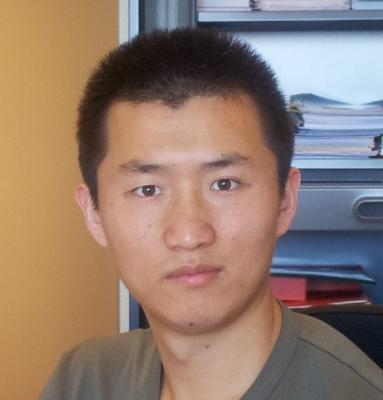
Seminar Sharef Neemat
- Thursday, 16 March 2017
- EEMCS, DI 01.180
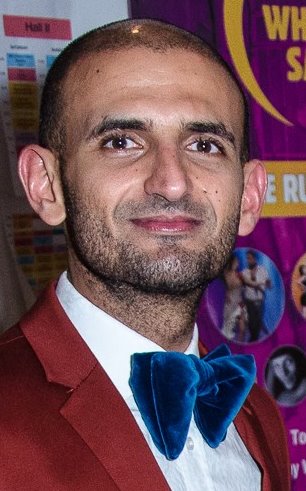
Inverse Problems in Electromangetics
- Thursday, 23 February 2017
- 12:45-13:45
- EWI: Lecture Room Chip
Challenges and New Frontiers
IEEE AP-Sdistinguished Professor Andrea lecturer: MASSAUniversity of Trento and Director Eledia Research Center

Inverse problems arise when formulating and addressing many synthesis and sensing applications in modern electromagnetic engineering. Indeed, the objective of antenna design, microwave imaging, and radar remote sensing can be seen as that of retrieving a physical quantity (the shape of the radiating system, the dielectric profile of a device under test, the reflectivity of an area) starting from (either measured or “desired”) electromagnetic field data. Nevertheless, the solution of the well‐known theoretical features (including ill‐posedness, non‐uniqueness, ill‐conditioning, etc.) of electromagnetic inverse problems still represents a major challenge from the practical viewpoint. Indeed, developing and implementing robust, fast, effective, and general‐purpose techniques able to solve arbitrary electromagnetic inverse problem still represent a holy grail from the academic and industrial viewpoint. Accordingly, several ad‐hoc solutions (i.e., effective only for specific application domains) have been developed in the recent years
In this framework, one of the most important research frontiers is the development of inversion techniques which enable the exploitation of both the information coming from the electromagnetic data and of that which is provided by prior knowledge of the scenario, application, or device of interest. Indeed, exploiting a‐priori information to regularize the problem formulation is known to be a key asset to reduce the drawbacks of inversion processes (i.e., the its ill‐posedness). However, properly introducing prior knowledge within an inversion technique is an extremely complex task, and suitable solutions are available only for specific classes of scenarios (e.g., comprising sparseness regularization terms).The aim of this talk is to provide a broad review of the current trends and objectives in the development of innovative inversion methodologies and algorithms. Towards this end, after a review of the literature on the topic, different classes of methodologies aimed at combining prior and acquired information (possibly in an iterative fashion) will be discussed, and guidelines on how to apply the arising strategies to different domains will be provided, along with numerical/experimental results. The open challenges and future trends of the research will be discussed as well
MS3 seminar
- Wednesday, 15 February 2017
- 16:00-17:00
- EEMCS, Snijderszaal
Capabilities and Research Activities at the University of Oklahoma Advanced Radar Research Center
Prof. Nathan A. GoodmanThe Advanced Radar Research Center (ARRC) at the University of Oklahoma
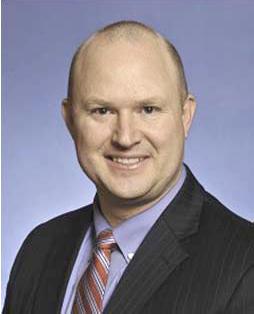
The Advanced Radar Research Center (ARRC) at the University of Oklahoma consists of a vibrant group of faculty and students from both engineering and meteorology, focused on solving challenging radar problems and preparing the next generation of students. Through the collaborative nature instilled in its members, the ARRC has proven effective at developing synergy between science and engineering in the field of radar. The ARRC resides in state-of-art Radar Innovations Laboratory, a one-of-a-kind and unrivalled facility for radar research, development, and education. This 35,000-sqft facility includes microwave labs, advanced fabrication capability, and two anechoic chambers.
Bio Prof. Goodman: Nathan A. Goodman received the B.S., M.S., and Ph.D. degrees in electrical engineering from the University of Kansas, Lawrence, in 1995, 1997, and 2002, respectively. From 1996 to 1998, he was an RF systems engineer for Texas Instruments, Dallas, TX., and from 2002 to 2011, he was a faculty member in the ECE Department of the University of Arizona, Tucson. He is now a Professor in the School of Electrical and Computer Engineering and Director of Research for the Advanced Radar Research Center at the University of Oklahoma, Norman.
MS3 seminar
- Monday, 13 February 2017
- 15:30-18:00
- EWI Snijderszaal
MS3 Master Event
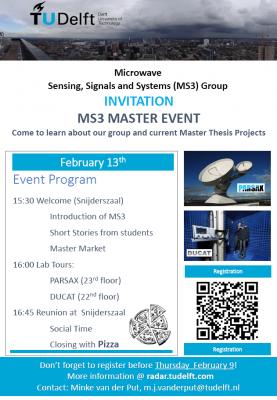
Come to learn about our group and current Master Thesis Projects...
Additional information ...
Master thesis defence Yalin Gürcan
- Monday, 16 January 2017
- 10:00
- EEMCS, Snijderszaal

The problem of estimation of these three parameters of scatterers in an area can then be simplified as a problem of spectral estimation over three separate domains. The recent algorithms for solving such a problem in the context of array based radar applications range from adaptive, nonparametric methods, subspace based parametric methods and sparse recovery methods. However, these methods mostly ignore the inter- and intra- pulse Doppler effects of multiple moving targets. Furthermore, with demand for more resolution, investigation of wideband effects on range-azimuth-Doppler estimation is necessary. In this thesis, we firstly develop a MATLAB based MIMO radar simulator, on which the theoretical models are to be tested. The first aim of the thesis is to investigate the joint range-azimuth estimation methods and the shortcomings of narrowband assumptions, especially on the DoA estimation problem. We propose a novel signal model specifically for LFMCW radar systems and two methods of joint estimation using this model. The next aim is to investigate the effects of the movement of the targets on accuracy of the estimation problem. We study these effects firstly on the range-azimuth estimation problem and provide a more detailed signal model, which, theoretically also allows for the joint estimation of range, azimuth and velocity parameters using only a single chirp. Then we look into joint estimation in three domains and provide a subspace based algorithm, using the proposed signal model, capable of solving this problem. The accuracy of the new signal model and performance of the estimation algorithm is then tested on data generated by the MATLAB based simulator. Comparisons are made with respect to state of the art, MUSIC based joint estimation algorithm and theoretical bounds. Furthermore, range-Doppler estimation is performed on real life data, taken from the Dolphin prototype NXP automotive radar system. Future works based on this model is proposed.
MS3 seminar
- Friday, 13 January 2017
- 11:00-11:45
- EWI, Snijderszaal (LB 1.010)
Dynamic rainfall monitoring using microwave links
Venkat Roy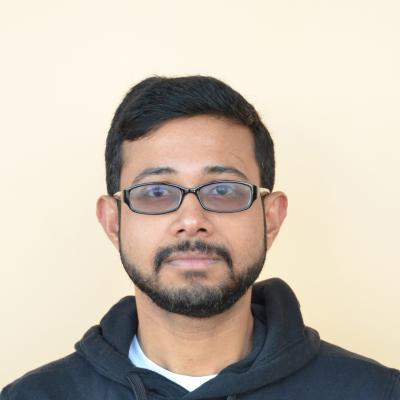
We propose a sparsity-exploiting dynamic rainfall monitoring methodology using rain-induced attenuation measurements from microwave links. To estimate the rainfall intensity dynamically from a limited number of non-linear measurements, we exploit the physical properties of rainfall such as spatial sparsity and non-negativity along with the dynamics of the rainfall. We develop a dynamic state estimation algorithm, where the aforementioned spatial properties are utilized as prior information. To exploit spatial sparsity, we use a basis function to tailor the sparse representation of the rainfall intensity. The developed methodology is applied to dynamically monitor the rainfall field intensity in an area with a specified spatial resolution using less number of simulated non-linear measurements than pixels. The proposed methodology can be generalized for any dynamic field reconstruction, where the limited number of non-linear measurements are field intensities integrated over a linear path.
Additional information ...
PhD Thesis Defence
- Tuesday, 13 December 2016
- 10:00
- Aula
Radar networks performance analysis and topology optimization
Inna Ivashko
Inna Ivashko succesfully defended her defence on December 13th.
Additional information ...
Microelectronics Introduction Colloquium
- Monday, 12 December 2016
- Theatre - Culture Building 38, Mekelweg 10
Introduction 3 new Tenure Trackers
Masoud Babaie, Morteza Alavi, Faruk Uysal
On December 12 we organize the next Microelectronics Colloquium to introduce three new Assistant Professors (Tenure Trackers) of the Microelectronics department. They are happy to present a lecture about their research.
The colloquium start at 15.00 hrs. there will be a drink afterwards in the foyer.
Location: Theatre of Culture Builing (38) Mekelweg 10.
Please
register online if you want to attend, latest December 5.
- Masoud Babaie: Pushing The Limits of CMOS Circuits for Emerging Technologies
Within the next few years, quantum processors, Fifth Generation (5G) cellular systems and the wireless Internet-of-Things (IoT) are expected to see significant deployment to realize more integration between the physical and digital worlds, promising enormous computation power, high data rate communications and enabling more objects to be remotely sensed and controlled.
This talk will address some of the main challenges in the design and implementation of IoT devices, mm-wave 5G transceivers, and cryogenic CMOS controller for quantum computers. An overview of my past and ongoing research activities will be also presented, with emphasis on novel solutions to improve power efficiency and spectral purity of RF/mm-wave transceivers.
- Morteza Alavi: Universal Transmitters for 5G
Today, our daily activities are intertwined with the Internet. The ever-growing demand to swiftly get access to the data-cloud systems leads to huge data traffic. In order to seamlessly transmit and receive these gigantic data, _ 40 GB, agile radio-frequency (RF) transceivers are inevitable.
These radios must be capable of supporting the current and future communication standards such as 5th generation of wireless mobile communications. The ultimate goal is that they can be implemented as universal radios whose modes of operation can be defined by their clients. To address these demands, RF transmitters are currently reinvented and are directed towards digital-intensive architecture. In this short presentation, we will briefly describe the strengths,possibilities, and challenges that exist for these advanced transmitters. First and foremost, the concept of RF-DAC based transmitters will be introduced. Next, the talk will review various RF-DAC based transmitters that have already been implemented at ELCA. Eventually, the presentation will concisely unveil the future directions of the research of these software-defined transmitters at ELCA.
- Faruk Uysal: Distributed Radar Networks: Beyond a single radar
The number of operational radar is rapidly increasing due to the growing demand of the remote sensing. Software defined radio and emerging single-chip radar technology make use of radars in every aspect of life such as autonomous driving, safety and security applications. With the increase of active transmitters, spectrum management and coexistence started to become a concern for some radar systems. In this talk, the previous applications of waveform, frequency agility will be reviewed to bring multi-functionality to the modern radar system. Finally, we will discuss the future research for distributed radar networks and how to fuse data from various radars to acquire different aspects of a target to be viewed simultaneously.
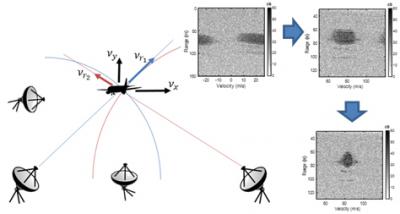
Master theis defence Nannan Chen
- Thursday, 24 November 2016
- 15:00-16:00
- EEMCS, Lecture hall K
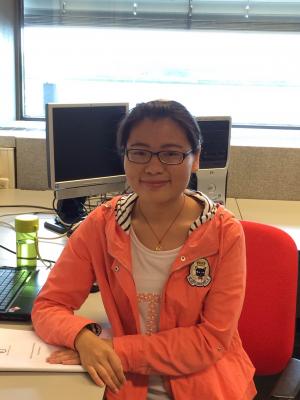
Poster event 2016
- Thursday, 24 November 2016
- 12:00
PhD's from MS3 will present their posters in our annual poster event
Master thesis defence Wilco Tempert
- Friday, 11 November 2016
- EEMCS. Lecture hall Chip
Design of a Particle Filter for robust target tracking in object-induced clutter
Master thesis defence Jeroen Keijsers
- Friday, 21 October 2016
- 10:00-11:00
- EEMCS, Snijderszaal
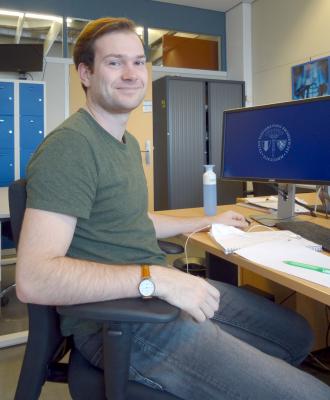
Master thesis defence Michael Hambalis
- Friday, 23 September 2016
- EEMCS
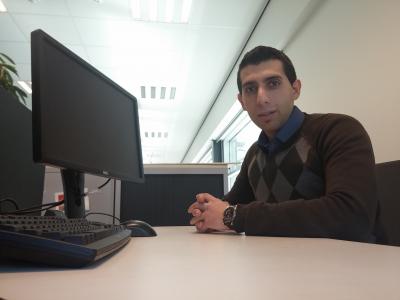
- Monday, 19 September 2016
- 15:00-17:30
- Aula, committee room A3
Special Celebrative Seminar: New model of Sino-Dutch R&D cooperation
Since the establishment of TU Delft's Beijing Research Centre (BRC) in 2012, 10 PhD researchers have been enrolled for this unique program in close cooperation with our Chinese Academic Partners. We are very pleased that the first two BRC PhD candidates will have their PhD thesis defence on September 19 2016, in the Aula of Delft University of Technology.
To celebrate this important milestone, we would like to invite you to join a special seminar after the defences, about the New model of Sino-Dutch R&D cooperation, to share the experiences, look to the future and raise the glass together.
Additional information ...
- Thursday, 15 September 2016
- 14:00-14:45
- EWI lecture hall G
Multivariate signal processing for "big data" sensing
Gabri?l VasileGIPSA lab, Grenoble
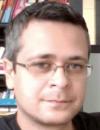
Big data?sensing brings a strong impact on many sensor-oriented application fields, such?as disaster control and monitor, healthcare services, and environment?protection. This presentation aims at providing an?overview on several application-driven?signal processing schemes, which have been carried out?in the field of environment protection at the?Grenoble-Image-sPeech-Signal-Automatics?Lab.
Master thesis defence Roel Berns
- Thursday, 23 June 2016
- 02:00-04:00
- EWI, lecture hall Chip
Master theis defence Roeland Trommel
- Wednesday, 22 June 2016
- 11:00
- EWI, lecture hall Chip
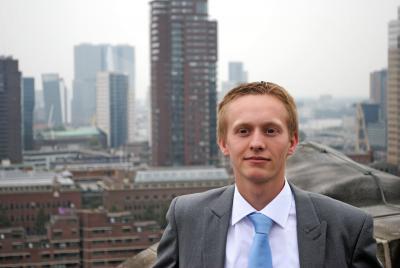
Join project presentations of Msc course System Engineering
- Friday, 17 June 2016
- 12:30-15:30
- EWI, lecture hall Boole
Students present and defend their group projects Including: - Crashed Aeroplane and Treasure Finding Sensor Hive - Low Cost and Unobtrusive Elderly House - Increasing the Accessibility of Hydrocephalus Diagnosis in Uganda - Interchangeable Block Design of Prorail System - DC house For : all Faculty Staff and PhD students
Master thesis defence Yanki Aslan
- Tuesday, 7 June 2016
- 11:00-13:00
- EWI, D@ta lecture hall
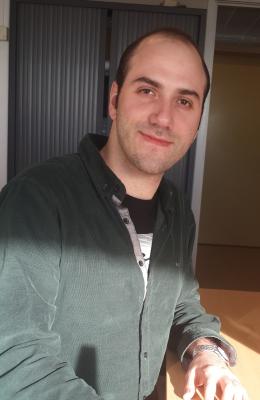
Seminar Nikita Petrov
- Friday, 15 April 2016
- Colloquium room, LB DI 01.180

Seminar in the MS3 seminar cycle
Additional information ...
Seminar Shilong Sun
- Friday, 8 April 2016
- EWI, Timmanzaal (LB 01.170)

Seminar in the MS3 seminar cycle
Additional information ...
Greedy algorithm for radar network topology optimization
- Thursday, 31 March 2016
- EWI, Dijkstrazaal (9th floor)
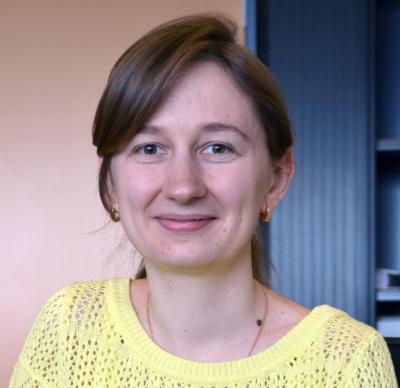
In this work, we tackle the problem of the selection of the optimal radar nodes positions, which provides the most accurate estimation of the target parameters, namely the position and velocity vectors. We develop a generic framework for topology optimization based on non-linear measurement models. Both the frame potential (FP) and log-determinant (LD) of the error covariance matrix are used as performance metrics. These cost functions were shown to be submodular that allows one to use greedy optimization algorithms ensuring a low computational complexity. We redesign the FP and LD to our specific non-linear model, where the parameter vector can take any value from the known parameter space and can be represented by entries of different modalities (e.g., range, velocity). The developed theoretical framework is applied to the problem of topology optimization for FMCW radar network.
Additional information ...
High-accuracy Positioning in Multipath Channels: Location-Awareness for 5G Networks
- Monday, 21 March 2016
- 15:45-16:45
- EWI, DI01.180
Graz University of Technology

Location-awareness is the capability of a mobile network to employ position information for the sake of operating more efficiently. It is foreseen that fifth-generation (5G) wireless networks will be able to exploit much more accurate position information than any previous generation of wireless networks. This comes naturally due to the increased bandwidth and the application of multi-antenna techniques, which will eventually turn multipath propagation from an enemy to a friend.
This talk will first highlight the impact of multipath propagation on the accuracy of wireless range and position estimation. The important influence of bandwidth and the benefit of MIMO processing will be analyzed. Next it will be shown how one can make use of multipath to benefit from improved positioning accuracy, robustness, and a relaxed need for infrastructure nodes. Analytical performance bounds, their experimental validation, and algorithms derived thereof will be discussed. Finally, it will be shown that a multipath-enabled positioning system is a showcase example of a cognitive dynamic system that can optimize the information gained from each measurement, exploiting its memory of past measurements to plan future measurements. The environment map it collects can be used to predict the propagation characteristics, yielding location-awareness for positioning and communications. It is concluded that the use of position information may become as important to 5G networks as other new, disruptive technologies such as massive MIMO and mm-wave.
Biography
Klaus Witrisal received the Dipl.-Ing. degree in electrical engineering from Graz University of Technology, Graz, Austria, in 1997, the Ph.D. degree (cum laude) from Delft University of Technology, Delft, The Netherlands, in 2002, and the Habilitation from Graz University of Technology in 2009. He is currently an Associate Professor at the Signal Processing and Speech Communication Laboratory (SPSC) of Graz University of Technology, Graz, Austria, where he has been participating in various national and European research projects focused on UWB communications and positioning. He is co-chair of the Technical Working Group "Indoor'' of the COST Action IC1004 "Cooperative Smart Radio Communications for Green Smart Environments.'' His research interests are in signal processing for wideband and UWB wireless communications, propagation channel modeling, and positioning. Prof. Witrisal served as a leading chair for the IEEE Workshop on Advances in Network Localization and Navigation (ANLN) at the IEEE Intern. Conf. on Communications (ICC) 2013 - 2016, as a TPC (co)-chair of the Workshop on Positioning, Navigation and Communication (WPNC) 2011, 2014, and 2015, and as a co-organizer of the Workshop on Localization in UHF RFID at the IEEE 5th Annual Intern. Conf. on RFID, 2011. He is an associate editor of IEEE Communications Letters since 2013.
Master thesis defence Joris Derksen
- Wednesday, 16 March 2016
- 13:00-14:00
- EWI, Snijderszaal
A study of radar performance assessment accuracy sensitivity to the resolution of atmospheric input data ? Case studies of North
Joris Derksen
Radars are vital systems for the navy as they are the primary systems for the detection, tracking and sometimes classification of friendly and hostile targets. It is therefore important that navies can assess the radar?s performance under the prevailing conditions. The atmosphere can significantly alter the radar?s performance from standard. Nowadays computer models can fairly accurately predict radar performance if sufficient atmospheric input data is available. While many studies are dedicated to accurately model radar performance, little has yet been done to define how accurate and how high in resolution atmospheric data must be to suffice as input for accurate radar performance prediction. My study takes preliminary steps into finding horizontal and temporal resolution requirements for different weather conditions. The study I will present will be particular of interest to the Royal Netherlands Navy as they currently predict radar performance with a single vertical profile and thereby assume that the atmosphere is horizontally homogenous. My thesis clearly shows that using a single profile can result in erroneous radar performance predictions. In these cases 3D dimensional data is required, which, for example, numerical weather prediction models can obtain. In additions to the description of my topic above, I have attached my abstract and preface. I have also attached a figure that shows an example of the error that can occur when using a single profile rather that 3D atmospheric input data.
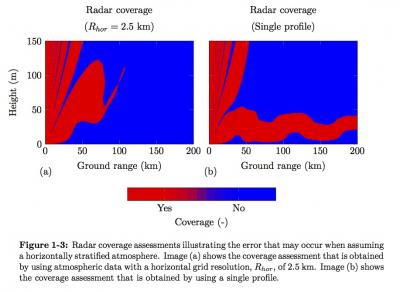
Seminar Sharef Neemat
- Monday, 14 March 2016
- EWI, Snijderszaal

Seminar in our seminar cycle
Additional information ...
Automotive radar
- Friday, 11 March 2016
- 13:00-15:00
- EWI Snijderszaal

The Dutch Automated Vehicle Initiative (DAVI) aims to investigate, improve and demonstrate automated driving on public roads (http://davi.connekt.nl). In a range of projects DAVI aims to: assess & improve automation technology, study human behaviour, assess safety, pursue legalisation, and create public awareness. The presentation will provide an overview of DAVI and Automotive research at TU Delft, including the WEpods project on driverless public transport and the interaction with pedestrians and other vulnerable road users (http://davi.connekt.nl/wepods-project). Riender Happee coordinates Automotive research and education at TU Delft with a focus on human factors, biomechanics, automated driving, and driver modelling. Automotive radar based on millimetre waves - today in the 24/ 26 GHz and in the 77/ 79 GHz range ? has been under investigation and development since several decades. Already in the early 1970?ies first 35 GHz radar sensors were tested over several millions of road kilometres. Since 1998 ? beginning with an ACC (Autonomous Cruise Control) radar sensor in the Mercedes-Benz S-class sedan ? automotive radar is commercially available and employed by various OEM?s all over the world, and no longer in expensive Premium cars only. With the standard-series implementation of the CPA 2.0 sensor (Collision Prevention Assist) in the Mercedes-Benz B-class in September 2011 radar sensor democratization for the benefit of vehicle safety has become reality. These days such radar systems are used for various vehicular applications, predominantly for functions like ACC, or BSD (Blind Spot Detection) to name just 2 important safety functions. The final goal of autonomous driving has come into view, e.g. the ?Bertha-Benz-Drive? by Mercedes, ?Drive Me? by Volvo or the ?iBus? by Yutong Bus Co. Ltd. in China. Different frequency bands, modulation schemes, emission powers, or radiation patterns are employed today. However, more sophisticated approaches, like DBF (Digital BeamForming) antennas or polarimetric signal evaluation are - concerning automotive radar - still in research and development. Automotive radar, its history, today?s state-of-the-art for comfort and safety as well as possible future trends on the road to autonomous driving will be reviewed in this lecture. From ?feet off? (SAE level 2) to ?brains off? (SAE level 5) ? ? we will have to see when ? Curriculum Vitae Holger H. Meinel joined the AEG-TELEFUNKEN Advanced Technology Department in Ulm, Germany, in 1973 after graduating with a Diploma in Microwave Engineering from the RWTH AACHEN in Aachen, Germany. He started to design mm-wave components, among others for a 35 GHz collision avoidance radar. Never changing company but only their names over the last 40 years, he switched his location and role of work nearly every 5 years. However, working in the US or France in the 1980s, and again the US in the 1990s he normally was located in Germany. Coming full circle in his career, from May 2010 to December 2012 he has been responsible for external contacts of Daimler AG within the EU-Project MOSARIM (More Safety for All by Radar Interference Mitigation); thus finally coming back-to-his-roots again: ACC radar for cars. Holger H. Meinel is author and co-author of over 175 technical papers, mostly on millimeter-wave integration and application. He holds or has held 14 patents and among other things has been involved in key-functions with the European Microwave Association (EuMA). During the restructuring of the European Microwave Conference (EuMC) from 1996 to 1998 he served in the newly founded Steering Committee, and became one of the 6 founder members of EuMA. He especially fostered application oriented contributions to EuMW, as well as he supported and enhanced the student involvement in EuMA. In 2011 ? during the EuMW in Manchester, UK, - he was awarded with the EuMA Distinguished Service Award for his lifelong contributions to the microwave community. Since September 2014 he officially is in retirement. However, since then he has been actively involved in different conferences and events, concerning automotive radar and autonomous driving, such as: EuRAD 2014 in Rome (Oct.), Telematics Munich 2014 (Nov.), Automotive Tech.AD 2015 in Berlin (Feb.), EuMC 2015 in Paris (Sept.), 2nd International Forum on Intelligent Vehicles, 2015, in Chengdu, China, Telematics Stuttgart 2015 (Nov.), or recently again Automotive Tech.AD 2016 in Berlin (Feb.). In January 2015 Holger H. Meinel was appointed by the EuMA BOD to be the speaker of the EuRaMIG (European Radio and Microwave Interest Group), one of three core groups within EuMA, for the next 3 years. EuRaMIG being the body to hold contact with the EU-Commission for EuMA on behalf of innovative technology related EU calls.
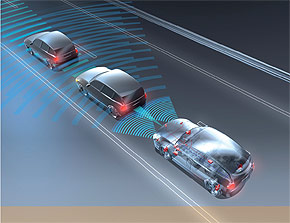
Seminar Xuan Wang
- Thursday, 10 March 2016
- Snijderszaal

Seminar in the MS3 seminar cycle
Additional information ...
Seminar Arun Muraleedharan
- Friday, 4 March 2016
- EWI, Snijderszaal
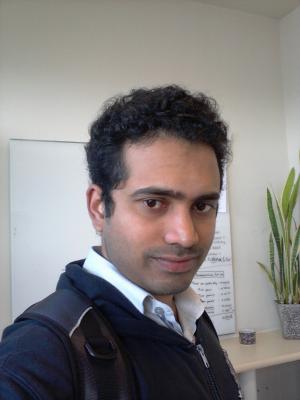
Seminar in the MS3 Seminar Cycle
Additional information ...
Seminar Rossiza Gourova
- Friday, 19 February 2016
- EWI, Snijderszaal
Automotive radar
Rossiza Gourova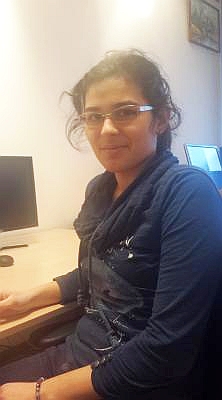
Automotive radar is gaining more and more popularity in the recent years with the growing idea of driverless vehicles. In order to achieve that final goal, the equipment used to monitor the environment needs to be reliable in every situation. To ensure that, it is necessary to determine the trustworthiness of a single sensor and define the means to monitor its own reliability level. The radar needs to be aware of its surroundings and its own functionality as the problem of reliability spans both the hardware comprising the sensor as well as the external influence of the environment. In this seminar, the factors influencing the reliability are discussed, as well as the current state of the art radar in the automotive field.
Additional information ...
Antenna Design at Fraunhofer FHR
- Friday, 12 February 2016
- EWI LB 1.010 Snijderszaal
Fraunhofer Institute for High Frequency Physics and Radar Techniques
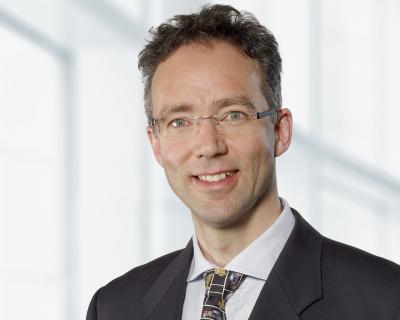
The Fraunhofer Institute for High Frequency Physics and Radar Techniques FHR in Wachtberg, Germany, develops concepts, methods and systems of electromagnetic sensors, particularly in the field of radar and communication, jointly with novel signal processing methods and innovative technology from the microwave to the lower Terahertz region. The institutes competency covers almost every aspect of modern radar and communication techniques.
The presentation will give an overview of research at FHR and its department AEM, including EM Modelling and Antenna Technology. Specific research topics will be presented, e.g. in the field of Automotive and Maritime Radar, Conformal Array and Circular Switched Parasitic Antennas (CSPA).
Peter Knott joined Fraunhofer FHR in 1994. The focus of his work is design and development of antenna arrays and active antenna front-ends as well as electromagnetic modelling and beamforming methods for conformal antenna arrays. Since 2005 he is head of the Department Antenna Technology and Electromagnetic Modelling (AEM). Until 2012, he has been chairman of the NATO research task group SET-131 on Vibration Control and Structure Integration of Antennas. He has published numerous articles in scientific journals and on conferences and holds several patents. Dr. Knott is also an Assistant Professor of Antenna Engineering at RWTH Aachen University. He is currently chairman of the German IEEE MTT/AP Joint Chapter, member of the VDE/ITG board 7.1 on Antennas, and member of the Board of Trustees of the German Institute of Navigation (DGON e.V.).
Seminar Alvaro Blanco del Campo
- Friday, 5 February 2016
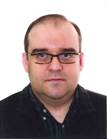
Seminar in our seminar cycle
Additional information ...
Midterm presentation Yanki Aslan
- Friday, 5 -- Saturday, 6 February 2016
- 09:30-10:30
- EWI, Snijderszaal
Mutual coupling reduction between closely spaced patch antennas via dielectric-contrast technique: Analysis and Design
Yanki AlsanIn recent years, many techniques have been introduced so as to suppress the propagation of surface waves and weaken the coupling between array elements, which include the use of electromagnetic band gap (EBG) structures, frequency selective surfaces (FSS) and ground slits. However, it is clear that the use of such structures leads to an increase in the inter-element spacing and the fabrication complexity. In his PhD thesis [1], Shenario Valavan explained the need to use the inter-element spacing smaller than 0.4λ in order to maintain the wide-angle scanning capability of dual or multi-band arrays at the operational bands and he proposed a novel approach called ?the dielectric-contrast technique? to reduce the mutual coupling between closely spaced (0.3λ-0.5λ) patch antennas by modifying the propagation velocity of the surface wave. In this technique, a higher permittivity middle-layer is inserted in the homogeneous substrate. In this Msc project, the physics behind this approach is investigated by computing the Green?s functions for layered media that can show the behavior of the space and surface waves, which constitute the total wave obtained from the simulators. The aim is to optimize design parameters such as the position and thickness of the inserted layer, the inter-element spacing and the dielectric contrast ratio in order to reduce the coupling.
Seminar Xuan Wang
- Tuesday, 2 February 2016
- EWI, Snijderszaal

Seminar in MS3 seminar cycle
Additional information ...
A Machine Learning Framework for Landmine Detection Using Ground Penetrating Radar
- Friday, 29 -- Saturday, 30 January 2016
- TUD, EWI Snijderszaal
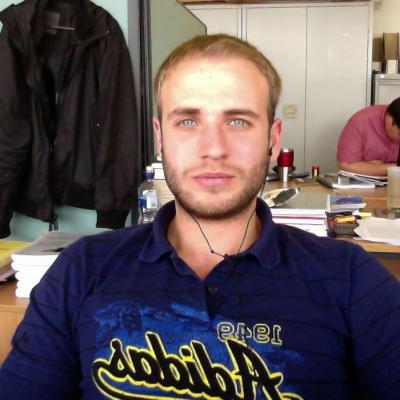
Ground penetrating radar (GPR) for landmine detection is a multi-parametric problem. Landmines can be found in a variety of environments e.g. deserts, urban environments, jungles and so on. The great variation of the soils, targets and antenna units may result to substantially different outputs making the development of an inclusive processing approach a very challenging task. The aforementioned complexity is further enhanced by logistic constrains and issues associated to the uniqness of demining. In particular, demining requires real-time outputs resulting from handheld units with no accurate positioning operated by deminers with no expertise in GPR. The above, make machine learning an attractive choice for both detection and classification purposes. In the present seminar, we discuss the challenges and the necessary steps towards an inclusive and robust machine learning framework for demining.
Additional information ...
Antenna elements for phased antenna array
- Friday, 15 January 2016
- EWI, Snijderszaal
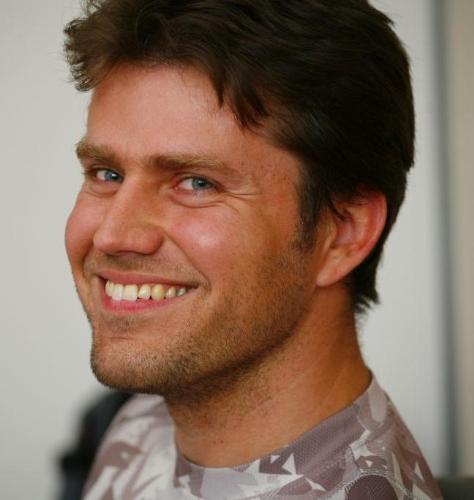
Wide-angle scanning arrays have gained increasing attention for wideband radio astronomy, satellite communication and radar applications. The performance of these arrays places high demands on the design of antenna element in terms of size, feeding technique, radiation pattern, coupling, etc. In this presentation, short introduction into the design of phased antenna array elements will be given. Thereafter some designs of antenna elements enabling wide bandwidth and wide-angle scanning performances will be presented.
Additional information ...
- Friday, 8 January 2016
- EWI, Snijderszaal

Seminar in our seminar cycle
Additional information ...
MS3 seminar
- Monday, 14 September 2015
- 14:00-15:00
- EWI , Dimes Colloquiumroom
NeXtRAD
Mike InggsUniversity of Cape Town Sout Africa
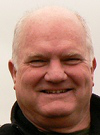
NetRAD is a three node, multistatic radar with three active nodes, one being high power (450 W), operating at 2400 MHz. It uses a GPSDO system for data capture and synchronisation. A large database of multistatic sea and sea target data has been built up. Samples of the data will be presented. NeXtRAD is a continuation of NetRAD, but has moved to X and L Bands, high power, and is fully polarimetric. The overall system will be presented, with progress to date in its construction and testing. Plans for data capture will be discussed.
Additional information ...

MSc TC Thesis Presentation
- Thursday, 16 July 2015
- 14:00-15:00
- HB 17.150
Sparse Arrays: Vector Sensors and Design Algorithms
Shilpa Rao
Direction-of-arrival (DOA) estimation of acoustic sources is of great interest in a number of applications. Acoustic vector sensors (AVSs) provide an edge over traditional scalar sensors since they measure the acoustic velocity field in addition to the acoustic pressure. It is known that a uniform linear array (ULA) of M conventional scalar sensors can identify up to M-1 DOAs. However, using second-order statistics, the class of sparse scalar sensor arrays have been shown to identify more source DOAs than the number of sensors. In this thesis, we extend these results using sparse AVS arrays. We first assume that the sources are quasi-stationary and use the Khatri-Rao subspace approach to estimate the source DOAs. In addition, a spatial-velocity smoothing technique is proposed to estimate the DOAs of stationary sources. For both scenarios, we show that the number of source DOAs that can be identified is significantly greater than the number of physical vector sensors. The second problem considered in this thesis is sensor selection for non-linear models. It is often necessary to guarantee a certain estimation accuracy by choosing the best subset of the available set of sensors. A non-linear measurement model in additive Gaussian noise is considered. To solve the sensor selection problem, which is inherently combinatorial, a greedy algorithm based on submodular cost functions is developed. The proposed low-complexity greedy algorithm is computationally attractive as compared to existing sensor selection solvers for non-linear models. The submodular cost ensures optimality of the greedy algorithm. Such a sensor selection can be applied, for example, to design sparse AVS arrays that also ensure a certain quality of the DOA estimates next to their identifiability.
Additional information ...
7th International Summer School on Radar/SAR
- Friday, 10 -- Friday, 17 July 2015
- Haus Humboldtstein, near Bonn, Germany

The 7th International Summer School on Radar/SAR will take place near Bonn, Germany, on 10-17 July 2015.
For more information about the Summer School visit the web-site and/or download the poster or flyer.
The fee, which includes full board and lodging, and handout-material, is for students 600 Euro, PhD candidates 900 Euro, and all others 1200 Euro for the whole summer school week. The participants have only to organize and pay their travel to Haus Humboldtstein, the location of the Summer School. See the programme for more detail.
Fraunhofer FHR cordially invites appropriate candidates to visit our website for further information and to download the Application form. Specific queries regarding the summer school should be addressed to: matthias.weiss@fhr.fraunhofer.de.
Additional information ...
Final MSc thesis presentation
- Friday, 10 July 2015
- EWI, Van der Poelzaal
Final MSc thesis presentation
- Monday, 6 July 2015
- EWI, Van der Poelzaal
3rd International Workshop on Compressed Sensing Theory and its Applications to Radar, Sonar and Remote Sensing
- Monday, 22 -- Wednesday, 24 June 2015
- Pisa, Italy

Following the success of the previous two editions of the workshop on compressive sensing applied to radar, we are pleased to announce the third one in this series. The 3rd Int. Workshop on Compressed Sensing Theory and its Applications to Radar, Sonar and Remote Sensing (CoSeRa 2015) will be held in Pisa (Italy) on 22-24 June 2015. The aim of CoSeRa is to bring experts of Compressive Sensing (CS) and radar/sonar/EO/IR signal processing and remote sensing together to explore the state-of-the-art in development of CS techniques for different areas of applications and to turn out its advantages or possible drawbacks compared to classical solutions.
Topics include but are not limited to:
-
Compressive sensing theory
-
Mathematical aspects of Compressive sensing in imaging systems
-
Sparsity of Radar/SAR/Sonar/IR signals
-
Applications of sparse sensing in Radar/SAR/Sonar/IR signal processing
-
Compressive sensing for SAR tomography (TomoSAR)
-
Compressive sensing for SAR Interferometry (InSAR)
-
Compressive sensing for Inverse SAR (ISAR)
-
Target detection based on compressive sensing
-
Compressive sensing for slow GMTI
-
Co-prime sampling in radar/sonar/EO/IR systems
-
Co-prime array processing in radar/sonar/EO/IR systems
-
Nested sampling in radar/sonar/EO/IR systems
-
Netsted array processing in radar/sonar/EO/IR systems
-
Sparse sensing in synthetic aperture imaging systems
Important Dates
- Full five-page paper submission: February 2, 2015
- Notification of acceptance: March 16, 2015
- Final camera-ready papers and author registration: April 20, 2015
All accepted and presented papers will be referenced by IEEEXplore
Additional information ...

- Friday, 12 June 2015
- 10:00-11:00
- EEMSC Building, Dimes Colloquium room
Flat Optics
Professor Stefano MaciProfessor at the University of Siena (UNISI) and Director of UNISI?s Ph.D. School of Information Engineering and Science
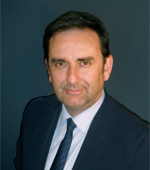
Metasurfaces constitute a class of thin metamaterials used for controlling plane waves and surface wave. At microwave frequencies, they are constituted by sub-wavelength size patches printed on thin grounded dielectric substrates. By averaging the tangential fields, metasurfaces may be characterized by homogenised isotropic or anisotropic boundary conditions, which can be approximated through homogeneous equivalent impedances. In the low frequency regime and in absence of losses, this impedance supports the propagation of a surface wave. The impedance can be spatially modulated by locally changing the size/orientation of the printed elements. This allows for a deformation of the wavefront which addresses the local wavector along not-rectilinear paths. The ray paths are subjected to an eikonal equation analogue to the one for Geometrical Optics rays in graded index materials. For this reason we will refer to the theory which regulates the SW propagation as Flat Optics. In this presentation, we introduce the Flat Optics theory for surface waves for both isotropic and anisotropic MTS, deriving the basic relations between ray-paths, ray velocity and transport of energy for both isotropic and anisotropic boundary conditions. The relationship with Transformation Optics is discussed.
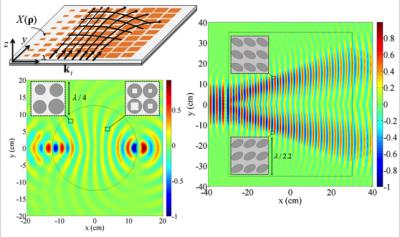
Antennas for Frequency Reconfigurable Phased Arrays
- Thursday, 23 April 2015
- Aula, Senaatszaal
PhD thesis defence
Nadia Haider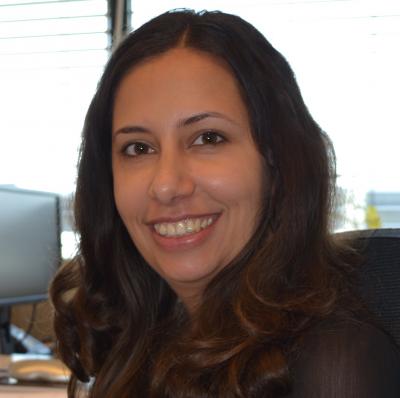
Sensors such as phased array radars play a crucial role in public safety. They are unavoidable for surveillance, threat identification and post-disaster management. However, different scenarios impose immensely diverse requirements for these systems. Phased array systems occupy a large space. In addition, if different antenna systems are needed for each function, the space required can be considerably large. For transportable platforms, such as ships and aircrafts, space and weight are at a premium. Therefore, reconfigurable multi-band antennas are very attractive solutions for future multi-function sensor systems. Within this research work three different approaches are investigated to realize antennas for reconfigurable phased arrays. Wideband antenna designs constitute the first approach. Integrating this type of antennas with frequency selective filters provide the opportunity for fine tuning within one radar band. The wideband operation of the antenna is achieved by the blind-via feeding section and the quasi electric-magnetic radiating structure. The second approach involves the design of an antenna element with p-I-n diode switches. The switches are used to alter the antenna structure and thereby the operating frequency. Measured results verified the frequency reconfigurable capability of the antenna within L/S radar bands with frequency ratio more than 2:1. The planar structure, the back feeding mechanism, the compact size and the simple bias network made the proposed antenna suitable for array applications. The large frequency ratio and its usability in phased array applications made the design novel. Furthermore, for these frequency reconfigurable elements, a unique multi-scale array structure is introduced which can assure wide angle scanning for both frequency bands. The advantage of this novel array configuration is twofold: reduce the Mutual couplings in the lower band, and increase the scanning volume for the higher band. A planar array demonstrator validated the proposed concept. In the third approach the operational band of an antenna is tuned by variableimpedance matching. In this study, the standard 50 Ω matching is avoided and many advantages of variable-impedance matching are demonstrated. First, the principle is verified by tuning the frequency band of a microstrip antenna by an input-impedance tuneable CMOS RF-frontend. In the second design a novel dual-band E-slot antenna,with 2.5:1 frequency ratio, was designed. By changing the input-impedance the operating frequency of the antenna can be switched from L- to S-band. Variable impedance matching provides few other advantages to phased array antennas. A scan-angle dependent impedance matching will assure low reflection coefficients for the entire scanning volume. On the other hand, it will reduce interfering and jamming signals coming from adjacent angles. The outcomes of this research work have led to solid understanding of how we can realize frequency reconfigurable antennas for adaptive phased arrays. The results will be particularly valuable in developing future narrow or wide beam radar systems with frequency reconfiguration and angular filtering capabilities.
Additional information ...
Sensor Data Fusion @ Fraunhofer FKIE: Surveillance and Protection for Defence and Security Applications
- Friday, 6 March 2015
- 09:00-10:00
- TBD
Fraunhofer FKIE, Bonn, Germany
Advanced algorithms to effectively exploit data streams from heterogeneous sources and optimally manage available sensor and unmanned platforms are of crucial importance. The talk will provide an overview of both, methodological work and advanced applications at Fraunhofer FKIE. We will place emphasis on exact track-to-track fusion, multistatic exploration and passive surveillance, aspects of resources management, and fusion tasks with unmanned aerial vehicles.
PhD Thesis Defence
- Thursday, 5 March 2015
- 12:00-11:30
- Aula Senaatszaal
Sensor management for surveillance and tracking. An operational perspective. March 5, 12.00 Aula, Senaatszaal. Promotor A. Yarovoy, co- promotor, H. Driessen
Fotios Katsilieris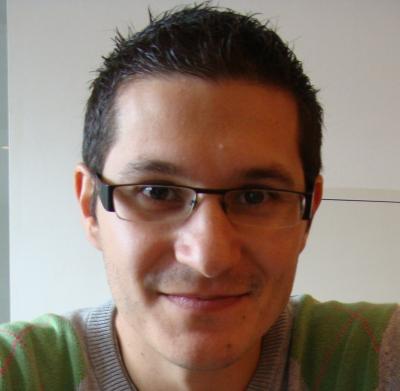
Defence, March 5, 12.00 Aula, Senaatszaal. Sensor management for surveillance and tracking. An operational perspective. In the literature, several approaches to sensor (including radar) management can be found. These can be roughly grouped into: a) rule-based or heuristics; b) task-based; c) information-driven; and d) risk/threat-based. These approaches are compared in this dissertation and it is found that there is not a single approach that is both Bayes-optimal and takes into account explicitly the user requirements in different operational contexts. In order to overcome the challenges with the existing approaches, this dissertation proposes managing the uncertainty in higher-level quantities (as per the JDL model) that are directly of interest to an operator and directly related to the operational goal of a radar system. The proposed approach is motivated by the threat assessment process, which is an integral part of defence missions. Accordingly, a prominent example of a commonly used higher-level quantity is the threat-level of a target. The key advantage of the proposed approach is that it results in Bayes-optimal sensor control that also takes into account the operational context in a model-based manner. In other words: a) a radar operator can select the aspects of threat that are relevant to the operational context at hand; and b) external information about the arrival of targets and other scenario parameters can be included when defining the models used in the signal processing algorithms, leading to context-adaptive sensor management.
Additional information ...

Spectral Polarimetric approach to remote sensing of natural objects and environments
- Friday, 23 January 2015
- EWI, Dijkstrazaal 9th floor
This presentation introduces a new method of remote sensing that combines polarimetric and spectral features of signals received from distant objects, providing spectral analysis of polarimetric variables. The detailed theory and math models are developed for the case of rain observations, and generalizations are made for other objects, and some examples are provided.
'Clutter Diversity: a new degree of freedom in multistatic radar'
- Wednesday, 21 January 2015
- 03:00-04:30
- EWI, Van der Poelzaal (LB 01.220)
Recent work has shown that the properties of bistatic radar clutter depend strongly on the bistatic geometry. This opens up new possibilities in networked radar, suggesting that the configuration can be optimised to take advantage of the clutter and target properties. The lecture will review these ideas, and the underlying concept of the intelligent adaptive radar network
Mission-driven resource management for reconfigurable sensing systems
- Wednesday, 21 January 2015
- 10:00-11:00
- Aula, Senaatszaal
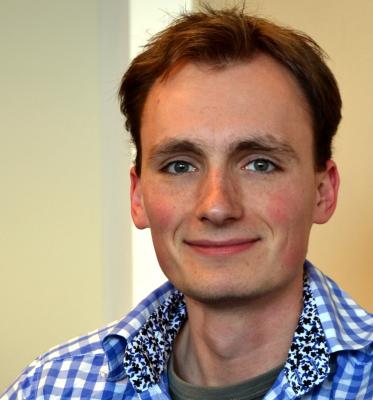
Promotor prof. Alexander Yarovoy, co promotor dr. Oleg Krasnov
Additional information ...

MS3 PhD event
- Friday, 28 November 2014
- 10:30-12:30
- EWI Snijderszaal
MS3 PhD event
Annual overview of PhD research projects

PhD Thesis Defence
- Monday, 24 November 2014
- 10:00-11:30
- Aula Senaatszaal
A GPS inspired terrain referenced navigation algorithm
Daniela Vaman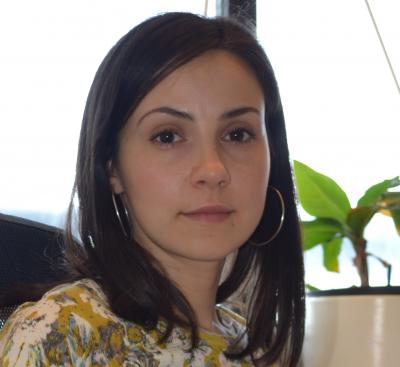
Terrain Referenced Navigation (TRN) refers to a form of localization in which measurements of distances to the terrain surface are matched with a digital elevation map allowing a vehicle to estimate its own position within the map. The main goal of this dissertation is to improve TRN performance through better signal processing. More specifically, the project aims to explore opportunities in the field of TRN by using digital signal processing techniques that were originally developed for the acquisition and tracking of GPS signals.
A typical TRN system uses speed, heading and time to establish the relative horizontal position between subsequent elevation measurements. Thus, any error in speed, heading or time will cause an error in the resulting relative position. If the speed or heading error contains a bias, this will cause a gradual reduction in the correlation. To prevent that a reduction in correlation causes the estimated position to drift away, the idea behind the research described in this thesis is the use of arrays of terrain elevation measurements with intentional (positive and negative) offsets in speed and heading in a tracking-loop configuration. It is well known that such a concept works well for optimized signals such as the ones used in GPS.
To further explore the viability of this idea for a signal defined by a series of terrain elevation measurements, an analysis of similarities and differences with the GPS signal is performed. In accordance to the GPS receiver approach, a novel correlation algorithm for TRN is proposed and implemented. The basic rationale for the algorithm is to use terrain correlation to ?acquire and track? the speed and heading of the host vehicle, while the position advances are calculated using these estimates together with the previously determined position. The novelty of the approach consists in the implementation of a tracking scheme based on the DLL concept. To answer feasibility-related questions, the algorithm is first evaluated in a purely theoretical framework. Based on this analysis it is concluded that the concept seems feasible and promising, but additional considerations in the design are required to compensate for the differences between the GPS and TRN signals. Enhancements are brought to the initial design resulting in the development of an adaptive tracking scheme, in which the tracking loops are configured based on an analysis of the terrain signal.
Next, an in-depth sensitivity analysis is carried out to understand how sensor measurement errors (in speed, heading and terrain height) impact the algorithm performance. The analysis is performed using exclusively simulated data. It is shown that sensitivity to speed and heading errors is dependent on terrain features and it is possible to assess the degree of sensitivity by analysing the terrain signal. By combining this information with the expected error characteristic of the navigation sensors, the performance of the algorithm can be predicted. The sensitivity to terrain measurement errors depends on the ratio between the terrain signal strength and the measurement errors. It is shown that this ratio can be predicted up to a certain extent and a method to improve the ratio is proposed and discussed.
The developed capabilities are validated with recorded sensor data from flight tests. Two different types of recorded sensor data are used: radar and lidar based datasets.
Additional information ...

VWO Math & Science Class
- Friday, 31 October -- Friday, 1 May 2015
- Aula Senaatszaal
Pilot meeting
Alexander Yarovoy (EWI), Yaroslav Blanter (TNW)
Pilot Math & Science Class van start
Op 31 oktober start de pilot Math & Science Class. In dit onderwijsprogramma van twintig dagdelen, worden leerlingen uit 5 vwo uitgedaagd en gestimuleerd om op een meer wetenschappelijke manier om te gaan met wiskunde en science. Achttien scholieren nemen deel aan de pilot. De opleidingen Technische Natuurkunde, Technische Wiskunde, Technische Informatica en Elektrotechniek ervaren al een aantal jaren een hoge uitval van studenten in het eerste jaar. Met de pilot Math & Science Class willen de faculteiten TNW en EWI scholieren de kans geven om het 'gat' tussen voortgezet en hoger onderwijs te overbruggen. De scholieren maken kennis met de manier van denken die nodig is voor het succesvol volgen van een studie aan de TU Delft.Science project
De pilot is bestemd voor leerlingen met een N&T-profiel die interesse hebben in een studie aan de TU Delft. Op 31 oktober starten achttien scholieren, zij zijn voorgedragen door de scholen in het scholennetwerk van de universiteit. Op 1 mei wordt de pilot afgesloten met een demonstratie van het science project, waar de scholieren in de laatste weken van het programma aan werken.Initiatief
Math & Science Class is een initiatief van Alexander Yarovoy (EWI) en Yaroslav Blanter (TNW). Samen met Sylvia Walsarie (O&S ) en het scholennetwerk hebben zij deze pilot opgezet.Additional information ...
Bistatic SAR multi-angle image enhancement and differential interferometry technology based on GNSS satellite
- Friday, 17 October 2014
- 14:00-15:00
- EWI Elektron (1st floor)
Beijing Institute of Technology
Bistatic SAR (BiSAR) systems have attracted the interests from global researchers and become a hotspot in the international radar community due to the progress of radar technology and rapidly increased applications nowadays. As a special kind of BiSAR systems, BiSAR based on GNSS satellite has a lot of advantages because of the time and space continuity of GNSS satellite, such as multi-angle observation and long-time monitoring. Therefore, some BiSAR experimental results based on GNSS satellite will be presented, especially for the multi-angle fusion enhancement and image understanding. Meanwhile, a novel BiSAR differential interferometry technology based on GNSS satellite will be discussed, the primary experimental results will be shown.
Additional information ...

International Radar Conference 2014, Lille, France
- Monday, 13 -- Friday, 17 October 2014
- Lille, France
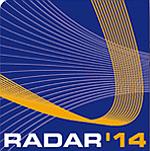
The French SEE Society (Soci?t? de l'Electricit?, de l'Electronique, et des Technologies de l'Information et de la Communication) organises RADAR 2014 in Lille, from 13 to 17 of October 2014. The conference will be organized in the frame of the international relations set up between the Institution of Engineering and Technology (IET), the Institute of Electrical and Electronics Engineers (IEEE), the Chinese Institute of Electronics (CIE), the Institution of Engineers Australia (IEAust) and the SEE.
Additional information ...

11th European Radar Conference (EuRAD 2014), Rome, Italy
- Wednesday, 8 -- Friday, 10 October 2014
- Rome, Italy
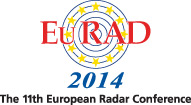
The 11th European Radar Conference (EuRAD 2014) will be held from October the 8-th to October the 10-th, 2014 in Rome, Italy, in the framework of the European Microwave Week 2014. This Radar Conference is the major European event for the present status and the future trends in the field of radar technology, system design, and applications. In the radar and sub-systems area, the conference focuses on radar EM scattering and propagation, antenna design, modelling and measurements, active/passive phased arrays and transceiver technologies, also for dual use applications (radar/communications). The radar signal processing topic intends to collect the main recent research innovative contributions on digital beamforming, interferometry, polarimetry, waveform diversity, tracking and target localization, multidimensional radar imaging. A specific focus is also expected on the use of compressive sensing for radar application. Radar architecture and systems topic addresses all new kinds of sensors starting from the more classical ones, namely CW, over-the-horizon, passive, noise and polarimetric radar, up to the most complex and sophisticated architectures like UWB systems, multidimensional radar, multifunctional systems. New tools for radar system performance modelling and simulation are also included. Radar applications are also encouraged covering various fields such as environmental, surveillance, traffic control, automotive, avionic, homeland security and defence, medical and other possible radar uses.
Additional information ...
Receivers Topology Optimization of the Combined Active and WiFi-based Passive Radar Network
- Friday, 26 September 2014
- 10:00-10:30
- Snijderszaal (LB 01.010)
Presentation for the EuRAD?14 conference
Inna Ivashko
This paper focuses on the accuracy analysis of the combined active and WiFi-based passive radar network. The Cramer-Rao Lower Bound is used as an accuracy metric. It is shown that localization performance of the active radar network can be improved with exploitation of the signals from passive bistatic WiFi radars. This makes reasonable to use information from passive and active radars simultaneously in order to enhance system localization capability. Sparsity-based algorithm is applied to find optimum geometry of the WiFi receivers at the fixed positions of the WiFi access points and active radars.
Additional information ...

Effectiveness-based radar resource management for target tracking
- Friday, 26 September 2014
- 10:30-11:00
- Snijderszaal (LB 01.010)
Presentation for the RADAR?14 conference
Alexey Narykov
Radar resource management (RRM) is an active research field that attracts attention of both the scientists and industry experts. A discussion of the various approaches to RRM became essentially a discussion on how to formulate the optimization problem. Although much work has been done on optimal performance-based RRM, the approaches that take mission objectives into account still belong to the domain of heuristic RRM. This paper proposes a shift from performance-based management and presents a novel effectiveness-based approach to optimal RRM. The approach is illustrated with a case study of single target tracking.
Additional information ...

Outlook for a new wind field retrieval technique: The 4D-Var wind retrieval
- Friday, 26 September 2014
- 11:00-11:30
- Snijderszaal (LB 01.010)
Presentation for the RADAR?14 conference
Albert OudeNijhuis
In this presentation we introduce the 4D-Var wind retrieval, which is inspired on four-dimensional variational assimilation, typically used in numerical weather models. We simulate simple wind scenarios, with single or double vortices, to get insight in radar measurements. We apply the linear wind model to radar measurements of IDRA radar measurements and identify some problems with the linear wind model retrieval technique. Then we apply the 4D-Var wind retrieval on the same IDRA measurements and the results are compared and discussed. In the implementation it is possible to specify correlation lengths for the horizontal wind speed and horizontal wind direction. With this option, it is possible to show the ambiguity of the wind field, that is associated with the radar measurements.
Additional information ...

- Wednesday, 10 September 2014
- 17:00-19:00
- /pub (EWI basement)
MEST welcome drink

Meet and greet your friends and colleagues with a FREE Drink to say Hallo !!!
Organized by MEST student association
Additional information ...
MSc TC Thesis Presentation
- Wednesday, 16 July 2014
- 14:00-14:45
- HB 17.150
Indoor Granularity Presence Sensing and Control Messaging with an Ultrasonic Circular Array
Shahrzad Naghibzadeh
MSc ME Thesis Presentation
- Friday, 4 July 2014
- 13:00-13:45
- Lipkenszaal
Development of a Multichannel TCSPC System in a Spartan 6 FPGA
Harald HomulleFor the master project work was carried out for the development of a fluorescence lifetime imaging probe for fluorescence guided surgery. For this project a prototype was designed. The work on the prototype was divided into three main parts, hardware, firmware / software, and system / optics. In this thesis the firmware / software of the system are described. An overview of the system is given and the performance is evaluated.
Additional information ...
MSc TC Thesis Presentation
- Wednesday, 16 April 2014
- 10:00-10:45
- EWI Snijderszaal
Joint Angle-Frequency Estimation for Multiple Signals with Circular Arrays
Joost GeelhoedCAS, TNO
(Work carried out at TNO Defence, Safety and Security--The Hague)
In electronic warfare information about radio signals is gathered. Parameters as the directionof- arrival (DOA) and the frequency can be estimated from sampled data received on antenna arrays. The objective of this thesis is to design a joint angle-frequency estimation (JAFE) algorithm for a circular uniform antenna array.
A 1-D and 2-D JAFE algorithm is presented. Both algorithms use phase-mode excitation and ESPRIT. The 1-D algorithm with spatial smoothing is introduced. With this algorithm it possible to estimate signals with similar frequencies, when the elevation is 90 degrees. Simulations demonstrate that when two signals are coherent and a spatial smoothing factor of two is applied the mean of the azimuth estimation is the true mean. It is also demonstrated that when two signals have the same DOA a temporal smoothing factor of two is necessary and that more temporal smoothing reduces the standard deviation of the azimuth estimation. It is shown that the phase-mode excitation technique introduces a systematic error that is considerably high for few antenna elements and an even number of elements. It is demonstrated that interpolation can reduce this error in case a UCA of 5 elements or a UCA of 12 elements.
PhD Thesis Defence
- Wednesday, 16 April 2014
- 12:30-14:00
- Aula Senaatszaal
Human Target Tracking in Multistatic Ultra-Wideband Radar
Additional information ...

MS3 seminar
- Friday, 11 April 2014
- 14:00-15:00
- EWI Timmanzaal
Sparsity-based geometry optimization of the multisite radar networks
Inna IvashkoAdditional information ...

EUCAP14 conference on antennas and propagation
- Sunday, 6 -- Tuesday, 8 April 2014
- The Hague

Abstract submission: 13 Oct 2013
Conference dates: 6-8 April 2014
Application areas:
- Fundamental research
- Satcom on-the-move terminal antennas
- Navigation, localisation, positioning and tracking
- Cellular mobile communications (includes: base station, handheld devices)
- Machine to machine, internet on devices
- Wireless networks (includes: WLAN, indoor communication)
- High data-rate transfer and backbone networks
- RFID and sensor networks
- Biomedical (includes: human body interaction, on-body antennas, electromagnetic exposure and interactions)
- Satellite communications
- Satellite passive and active remote sensing
- RADAR
- Radio astronomy
- Signal and image processing
- Defense and security
- Short-range Giga-bit communications
- Commercial software
MS3 seminar
- Friday, 4 April 2014
- 14:00-15:00
- EWI Timmanzaal
Wideband Electric-Magnetic Antenna for Polarimetric Applications
Nadia HaiderAdditional information ...

MS3 seminar
- Friday, 4 April 2014
- 14:00-15:00
- EWI Timmanzaal
Efficient Sequential-Hierarchical Deployment Strategy for Heterogeneous Sensor Networks
Teun de GrootAdditional information ...

MSc TC Thesis Presentation
- Tuesday, 27 August 2013
- 10:30-11:15
- HB 17.150
Compressive power spectral density estimation with non-uniform sampling
Fernando de la Hucha Arce
MSc TC Thesis Presentation
- Monday, 12 August 2013
- 14:00-15:00
- HB 17.150
Photo-acoustic imaging
Victor SloevA new non-invasive imaging modality is based on transmitting a laser pulse on the skin; the created heat will cause an acoustic pulse that is detected with an ultrasonic array. How can an image be formed?
